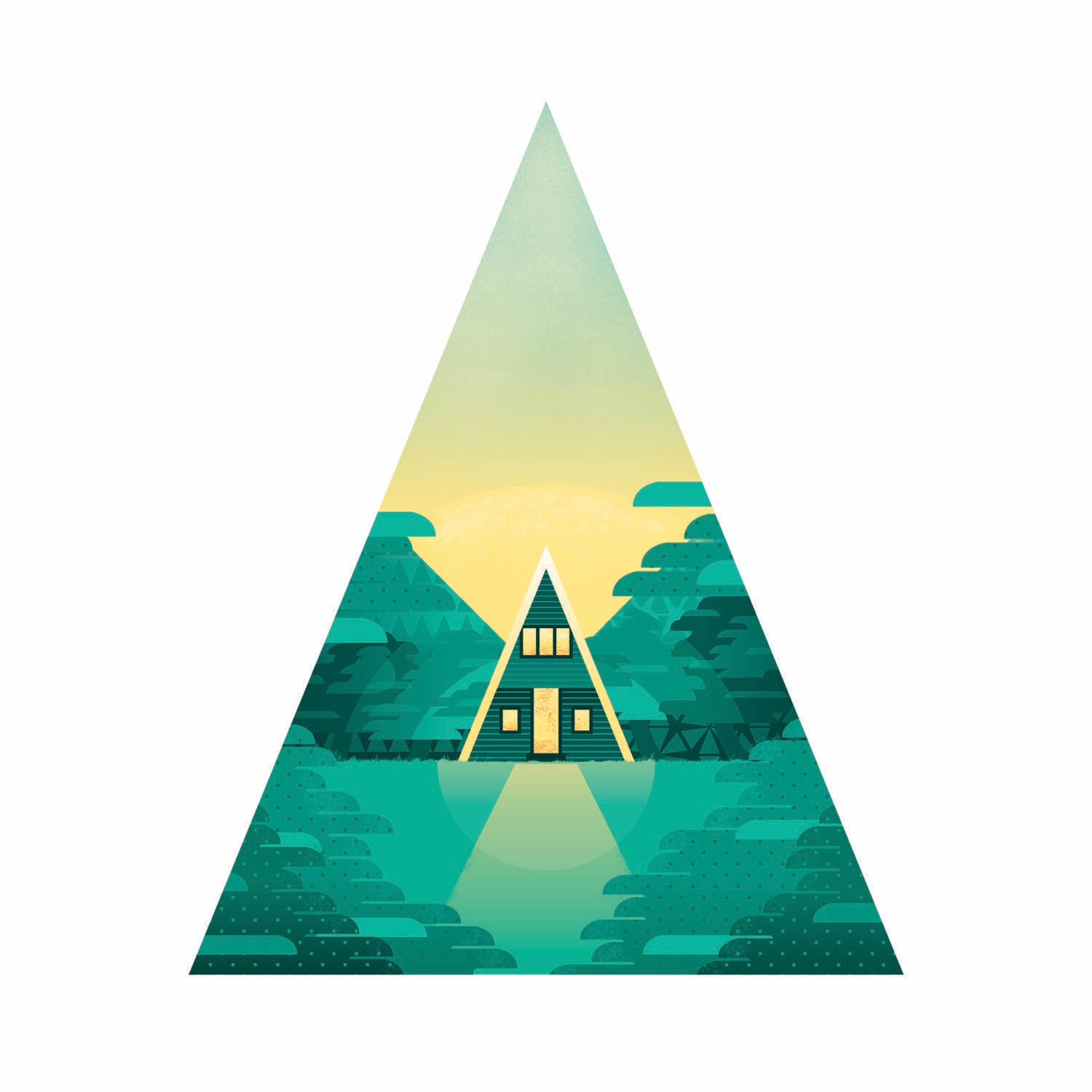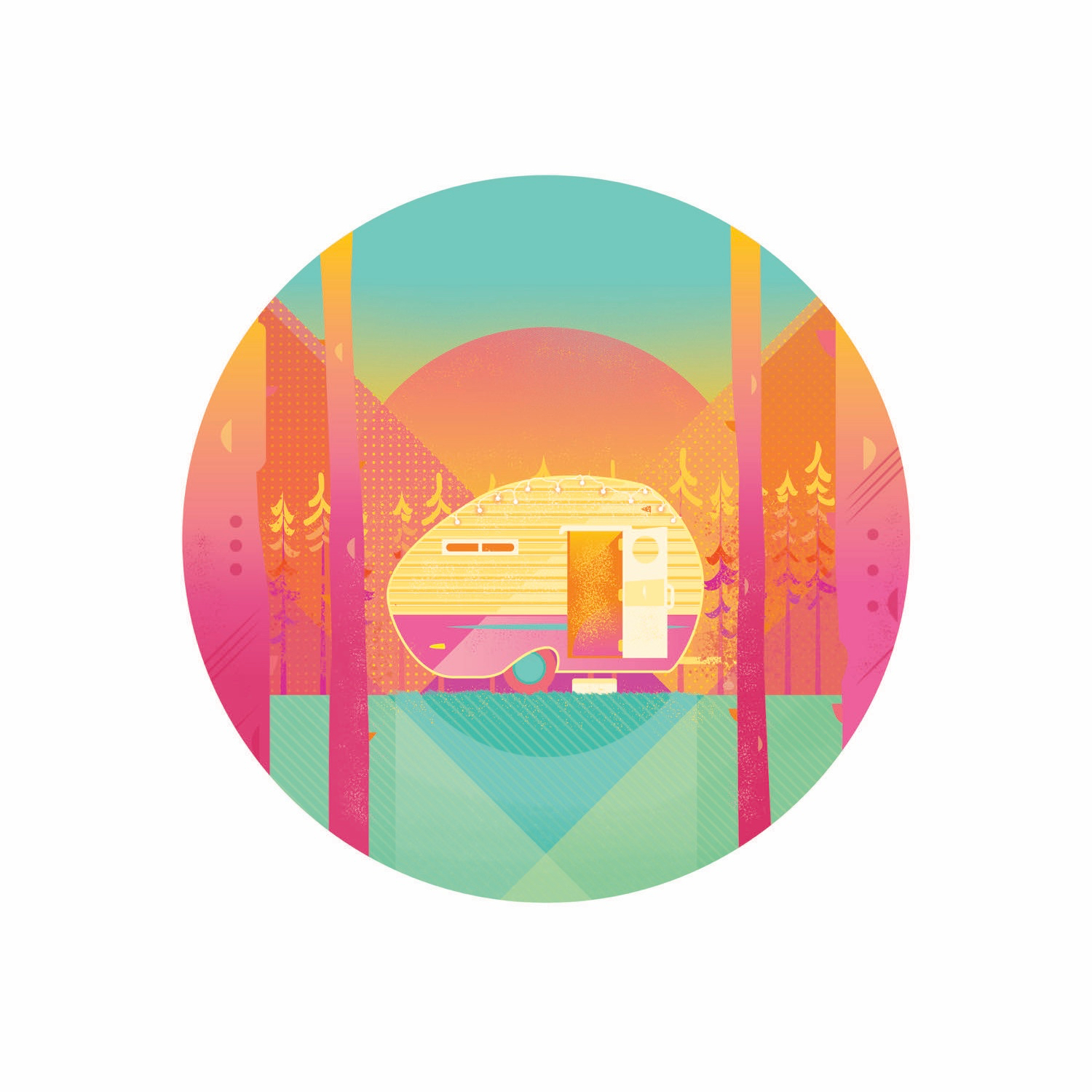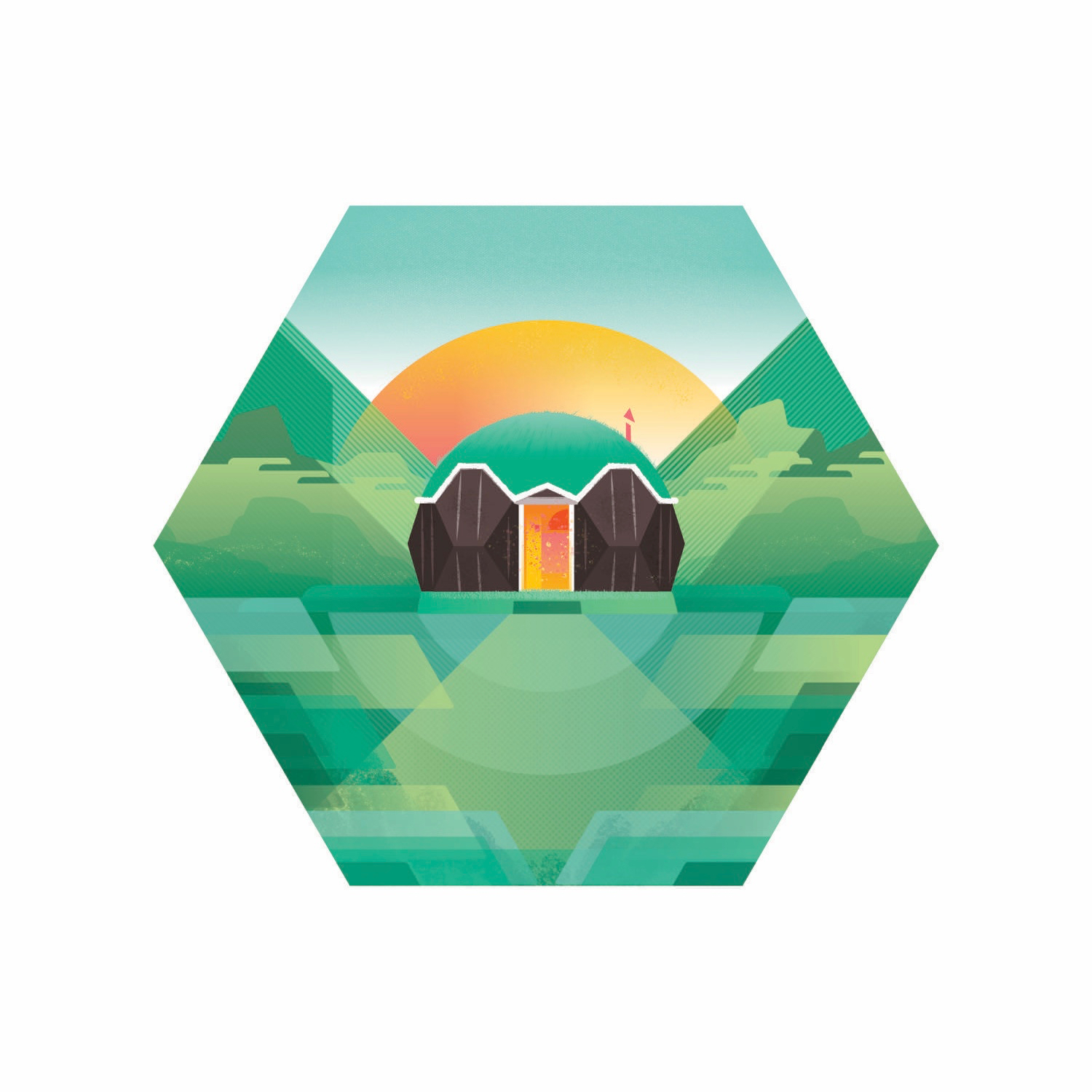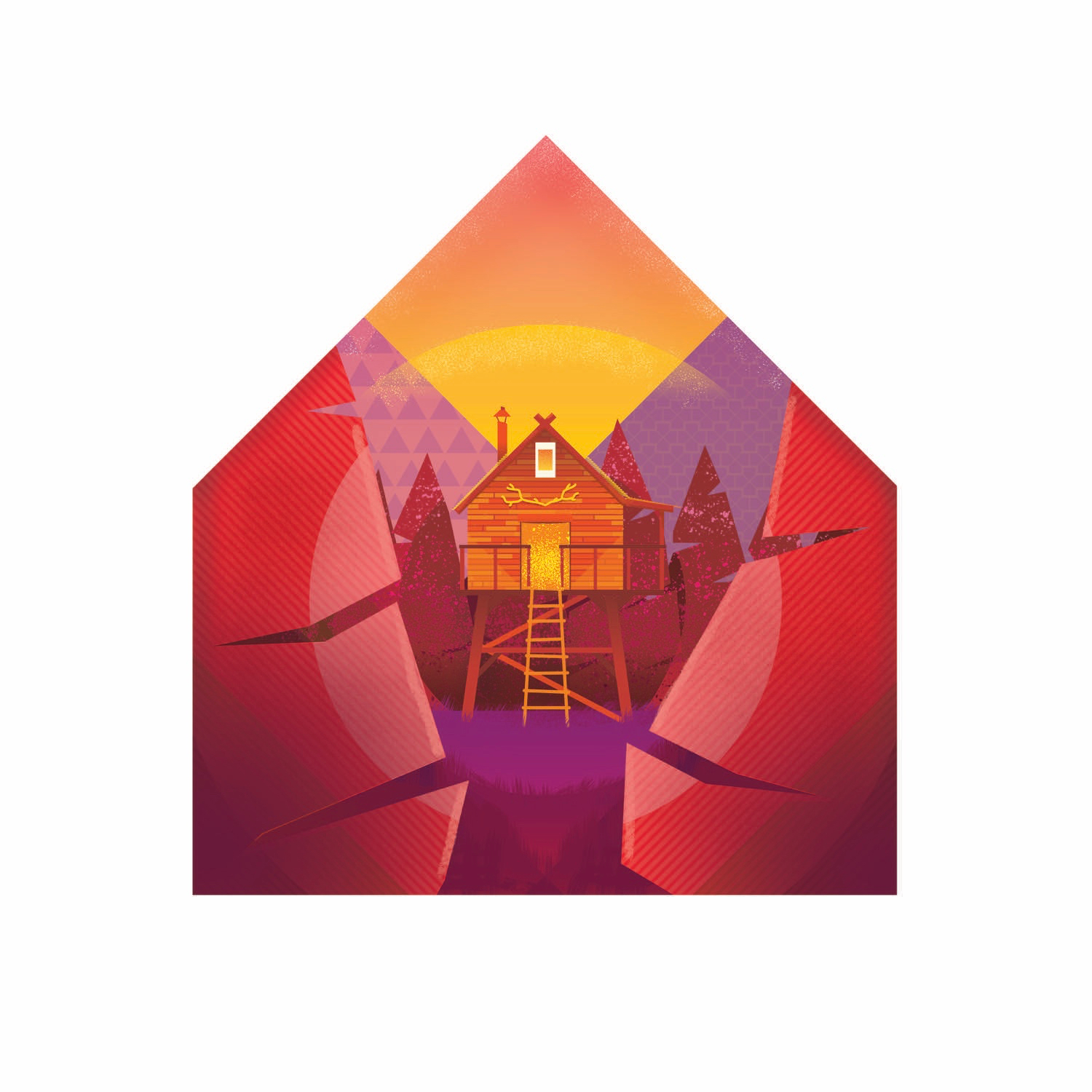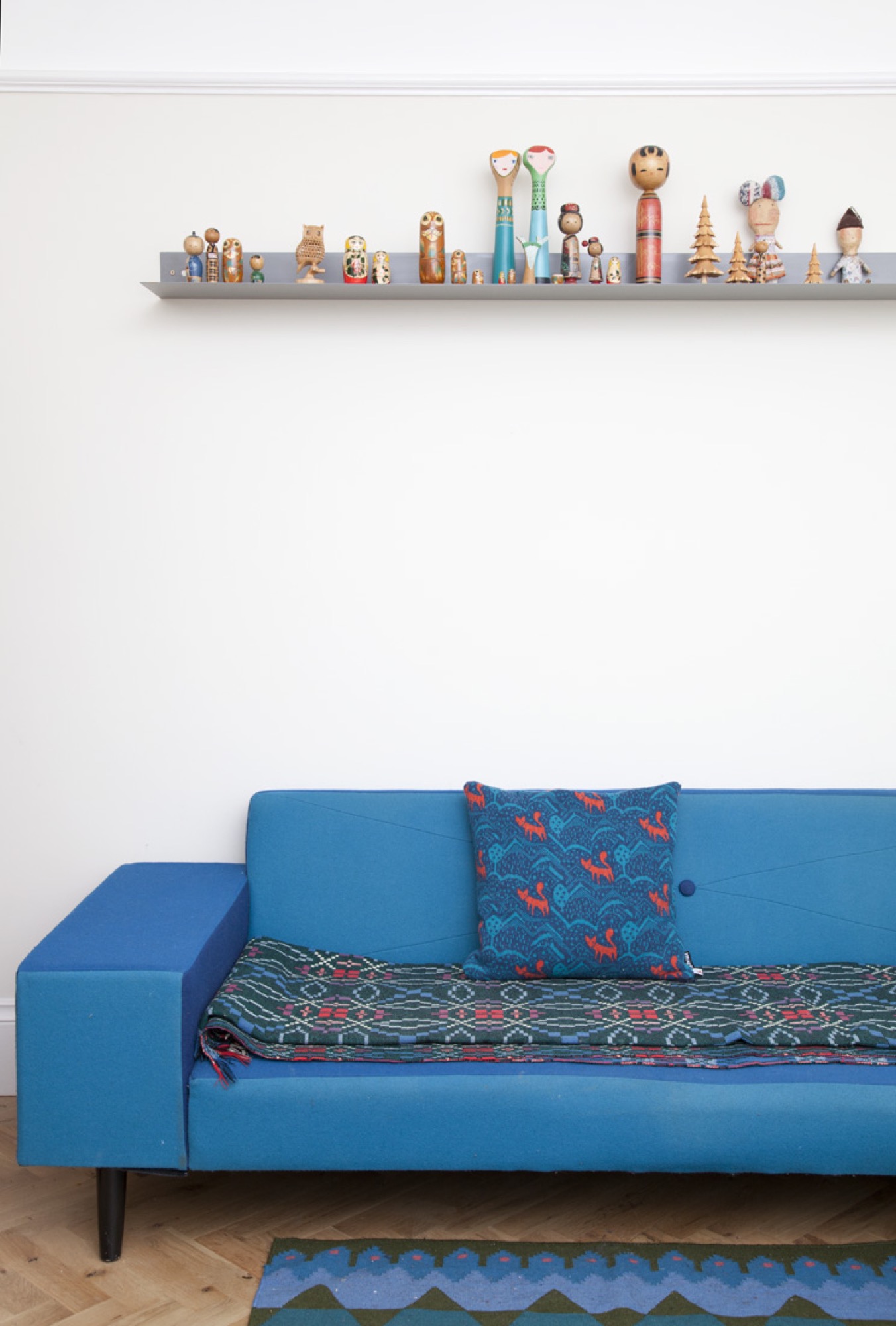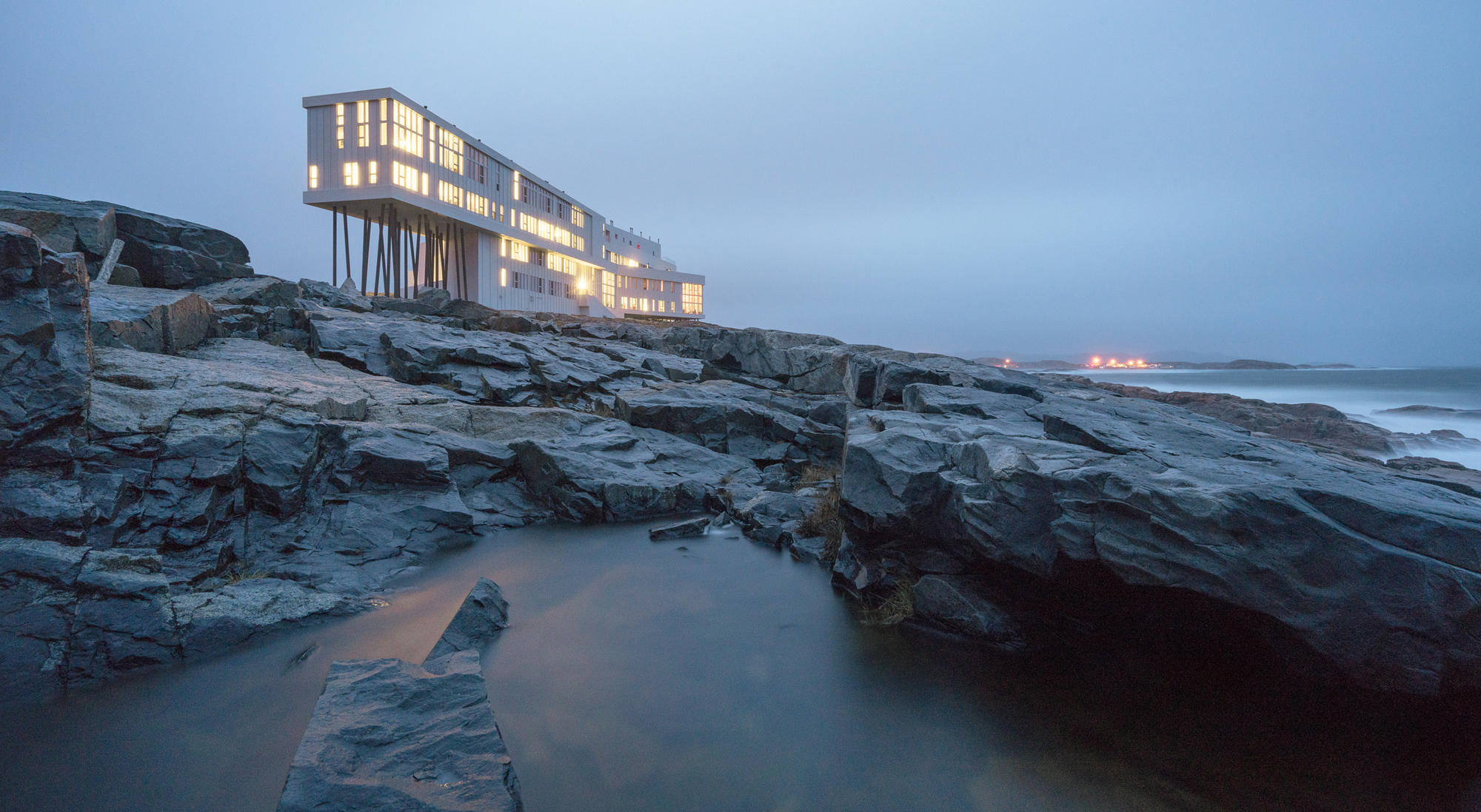
Inspirations
Explore the elevated life in the mountains. This content debuted in 2015 with Alpine Modern’s printed quarterly magazine project.
Pictorial Road Trip—Peaks and Lakes in Colorado
Denver filmmaker and photographer Grant Lemons experiences seasonal Colorado landscapes from behind his lens
Born in Salem, the rainy capitol of Oregon, as he calls it, filmmaker and photographer Grant Lemons currently lives in Denver, Colorado, where his sense of adventure awakened. From here, he ventured out into Colorado’s beautiful—and at time mysterious—landscapes of fall and winter.
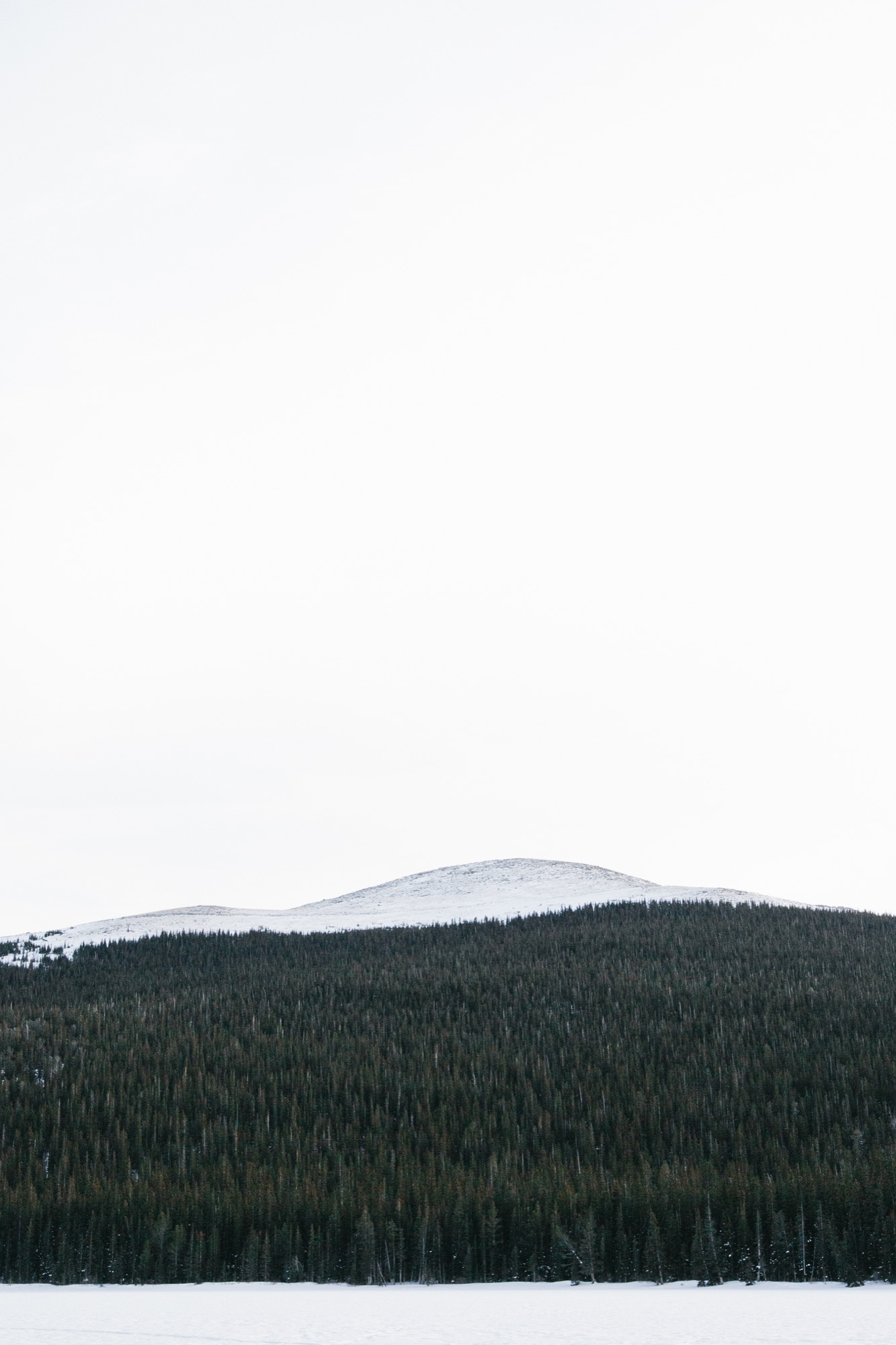
Lemons majored in journalism at the University of Oregon and plans move to Portland this summer.
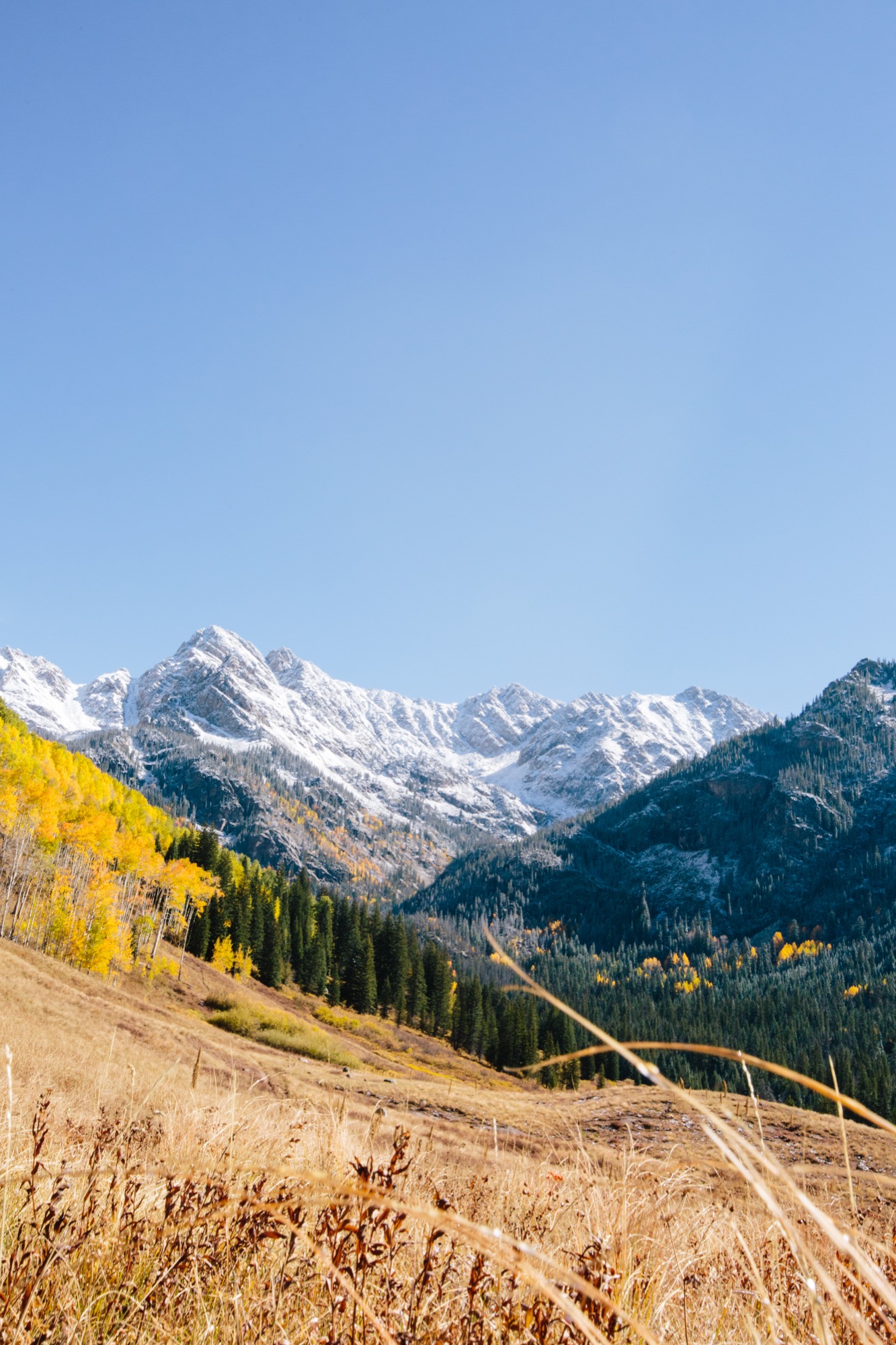
A conversation with filmmaker and photographer Grant Lemons
AM Who are you, in a nutshell?
GL I’m a high-energy guy who loves to capture new places and people... all while listening to hip-hop. I try to run whenever possible, too.
AM When and how did you know you wanted to pursue photography?
GL Simply put, making videos drove me to photography. Like many other people in my industry, I obsessed over telling stories with my camcorder at a young age. Over time, as new gear came and went, and I fell in love with the craft of making films and this passion for the technical aspects began to translate to photography. That initial pivot toward taking photos only happened a couple years ago, and now I find that I spend my days doing somewhere around 70% photo and 30% film. The photo bug bit me, and I've been hooked ever since.
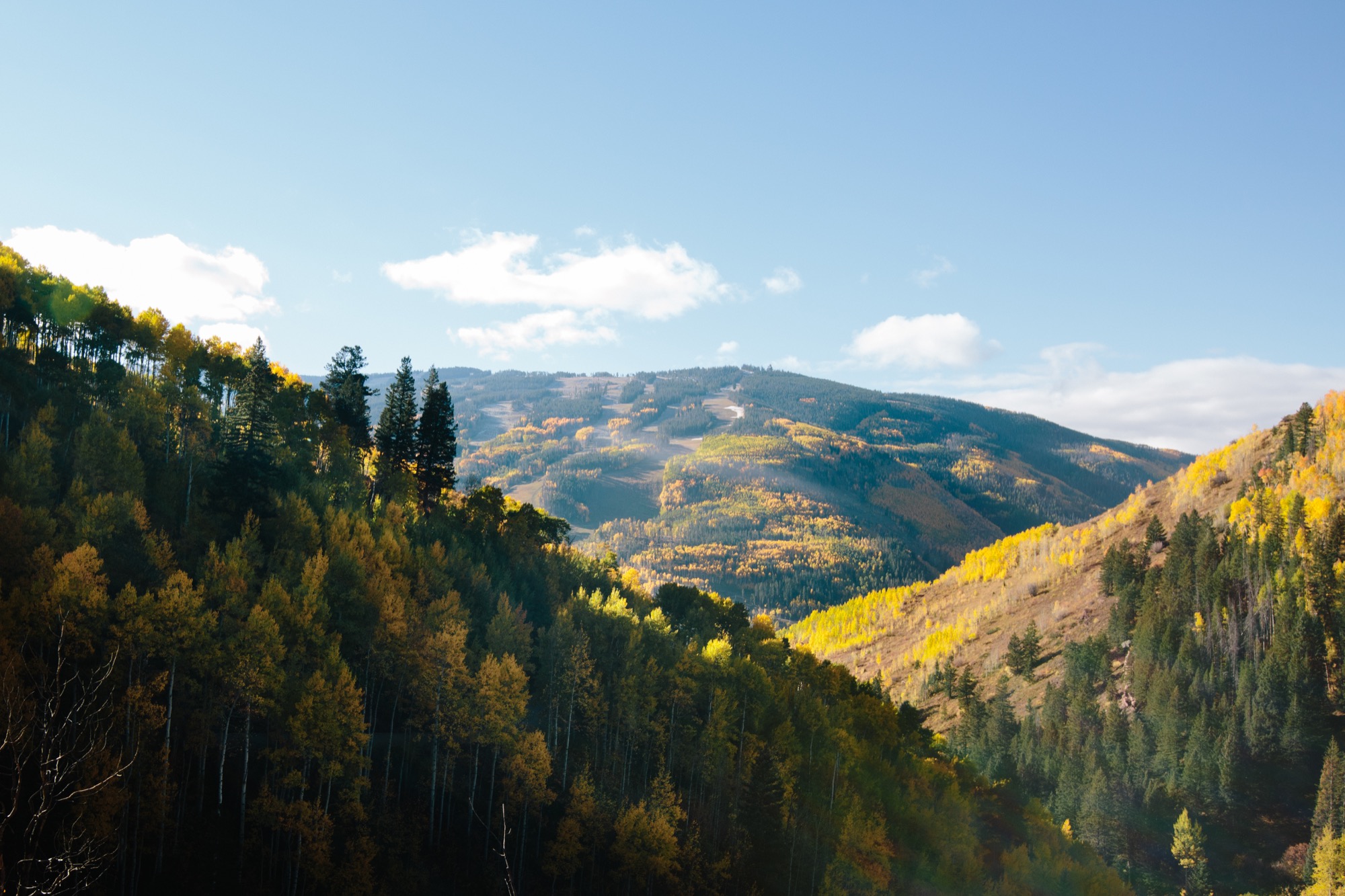
AM How did you learn to be a photographer?
GL Ironically, I never took a photography class while in school. Instead, I learned about the documentary approach to film and to telling stories the entire time. I really learned photography by spending as much time as possible with people who are ten-times the photographer I am. I went on adventures with them and experienced their differing styles. I'm always looking for more opportunities like that. YouTube tutorials are a plus, too.
AM What inspires your work?
GL My friends, my family, and the everyday environments that I find myself in. I try to find inspiration at every possible turn. Additionally, moving to Colorado spurred a real yearning for adventure within me. It's a surreal feeling capturing all you can at 10,000 feet and above.
AM What do you hope people experience when they look at your photography?
GL Wanderlust is an overused word for the feeling many people get when looking through photographs. With that being said, what I hope people get out of my work is a sense of exploration in a really broad sense of the word. No matter where you are, there are interesting moments and places to capture. That's what I seek to do every day when I can, no matter what place I find myself in. I hope when people see my work, they feel motivated to do the same—whether it's in the city or the mountains.
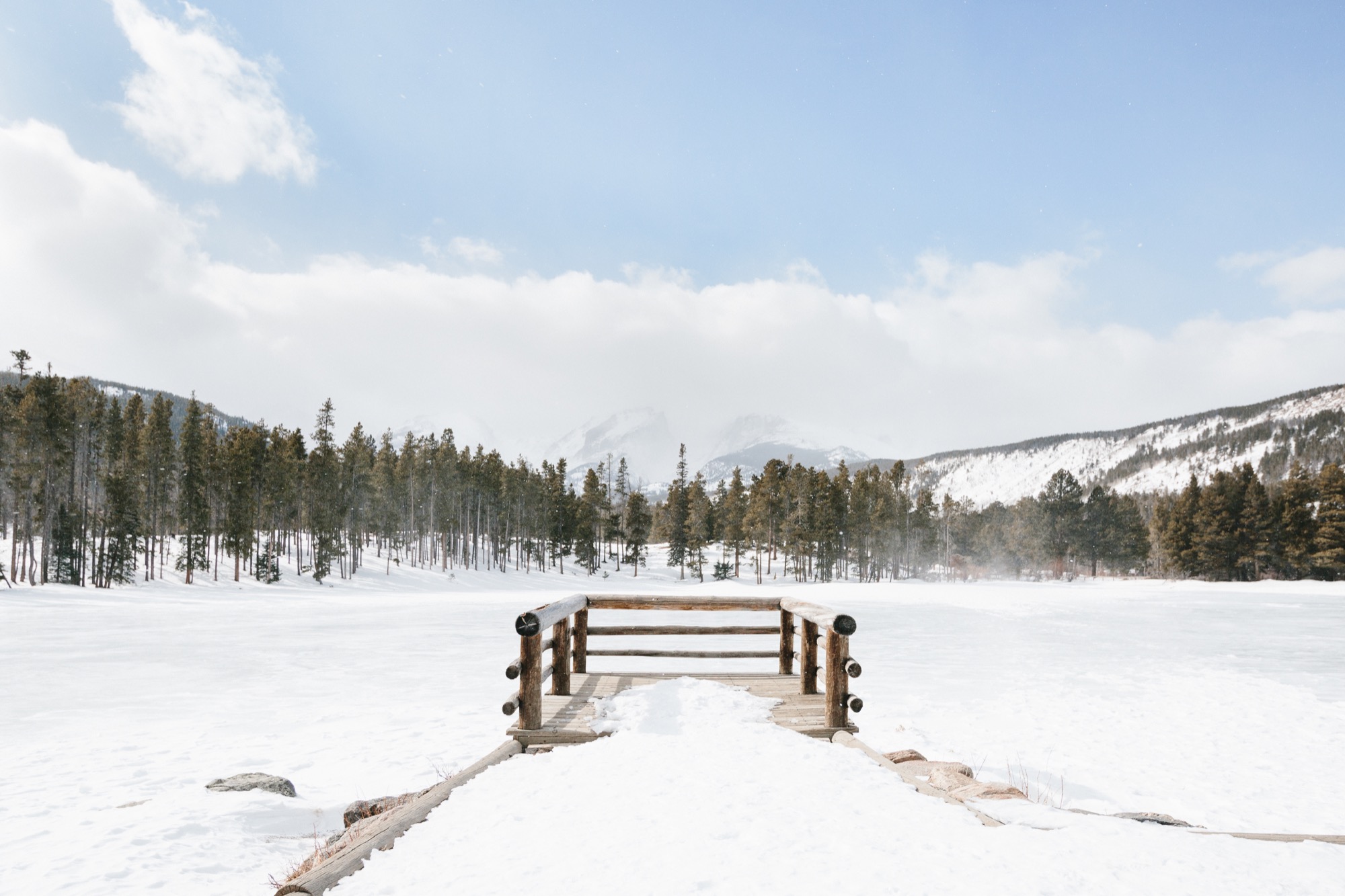
AM What makes you an alpine modernist?
GL At my very core I am a simple person. I don't keep many possessions in my orbit, and I enjoy a strong cup of coffee every morning while the sun rises. As it stands right now, my ideal day is an early wake up at 5:00 AM, heading west to the Rockies, and snow-shoeing in fresh powder to capture the early morning light shining on the mountains.
AM What do the mountains mean to you?
GL Growing up in Oregon, we held the mountains we do have in the state with high esteem—and we do have some remarkable peaks. When I visited Colorado for the first time the enormity and sheer amount of peaks that surrounded me blew me away. Here in Colorado, the mountains represent everything that is good in life, and it would be hard to escape them. Having the wild right at my doorstep with the Rockies took things to the next level for me, and the mountains are a constant blend of fun, adventure, and wonderment.

AM What is special about photography in the mountains?
GL Unlike other environments or subjects, time moves differently in the mountains. On one hand, I feel acutely aware of time and its shifting presence on the landscape in front of me. On the the other hand, I have no grasp on how time is moving when I begin to get in the flow of it all. Hours peel away. It's both a calming and challenging experience when considering the conditions that can come up in the winter, too. A lot of paradoxes, to be certain. It's one of the most rewarding landscapes to conquer and capture.
AM What’s your favorite place in the world?
GL At this point in my life, Portland is my favorite place in the world. An energy kicks into my system every time I touch down there, and it's stacked to the brim with people creating cool things. I really feel like I'm a part of the city in every way. My hometown of Salem, Oregon, is on the come-up, so I have to give it a big shout out too.
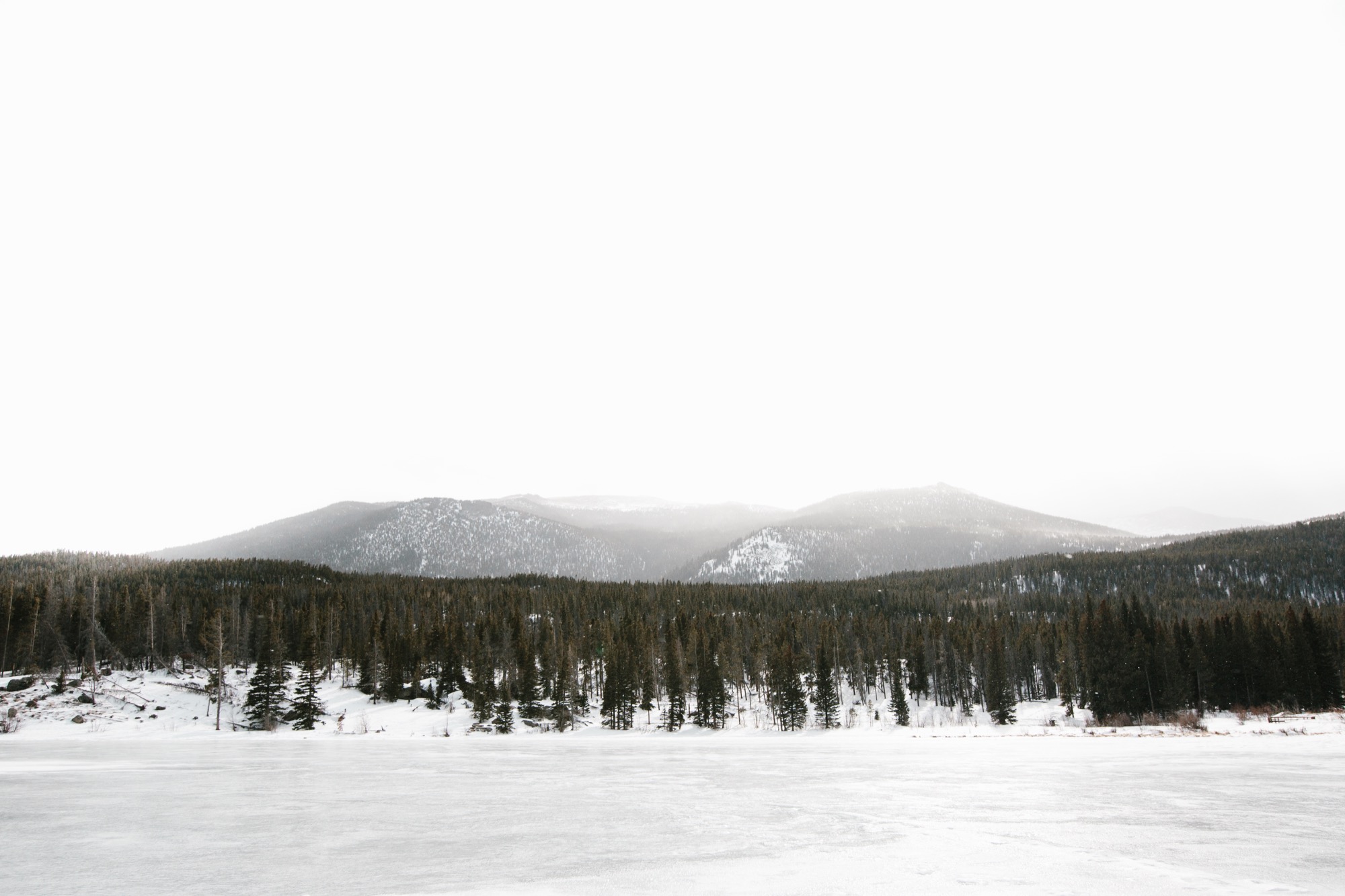
AM What are you working on these days?
GL I'm prepping to capture a short music tour in Europe in March. Recently, I've been lucky enough to have extra time to work on passion projects, which coincidentally, leads me to the mountains. I'm trying to use every day as an opportunity to capture a different Coloradan moment as my time to move away approaches. I'm really thankful to be around for another (somewhat) snowy winter. △
Fifteen and Focused on the World
Only fifteen years old, Joe Goldberg travels to explore the world through his camera lens. The photographer hopes his photos will inspire others to get out and see for themselves.
Upon returning from a life-changing trip to Costa Rica when he was only eleven years old, Joe Goldberg (joe_goldberg on Instagram) decided to spend his bar mitzvah money on his first camera. Now fifteen, the high schooler, who lives with his parents in Washington, D.C., expresses his teenage self through the art of photography.
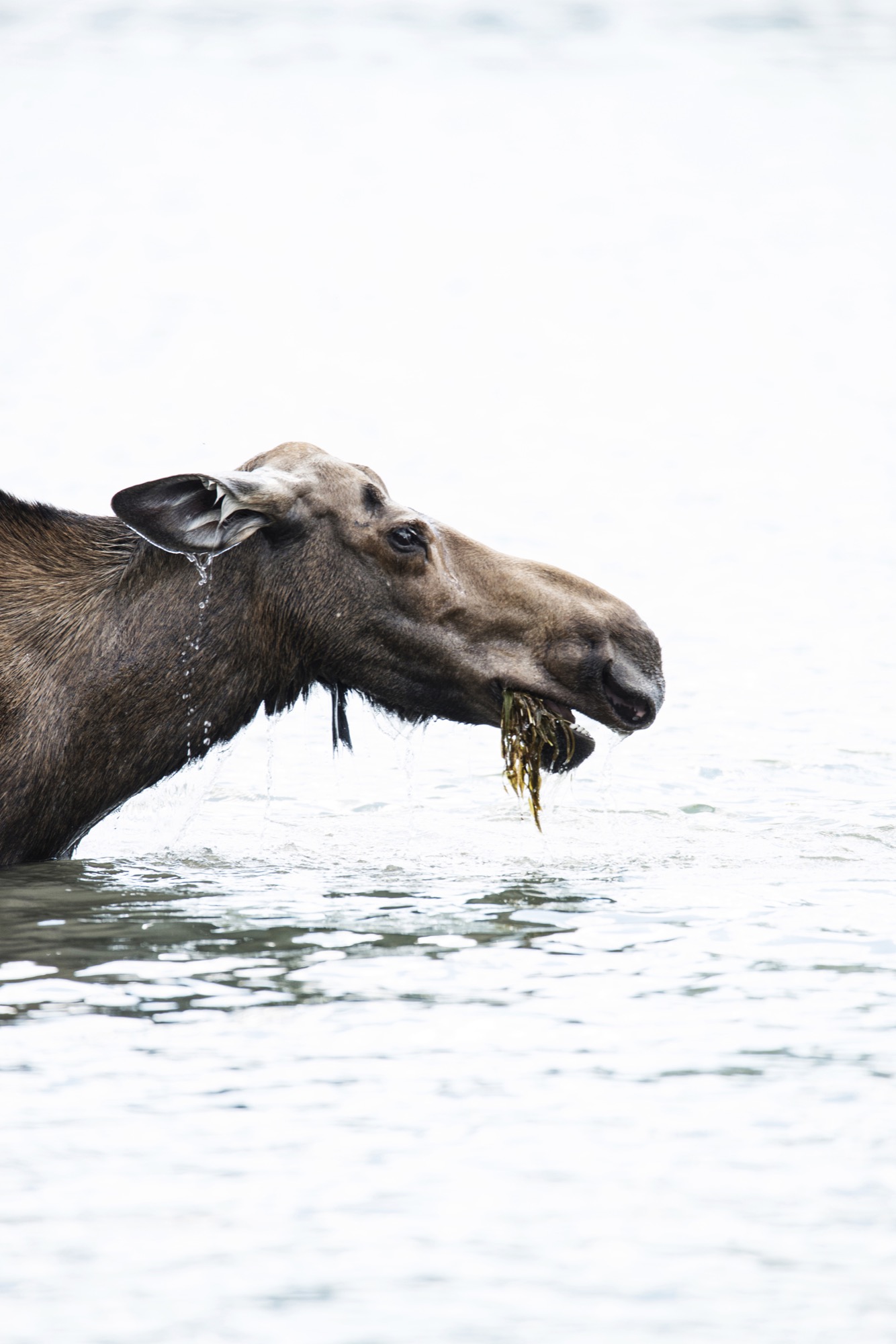
What’s more, the young adventurer wants to inspire others to travel and explore the world, too. At an age when his peers may search for their raison d'être on the Internet, this millennial gets out and uses photography to bring life into perspective.
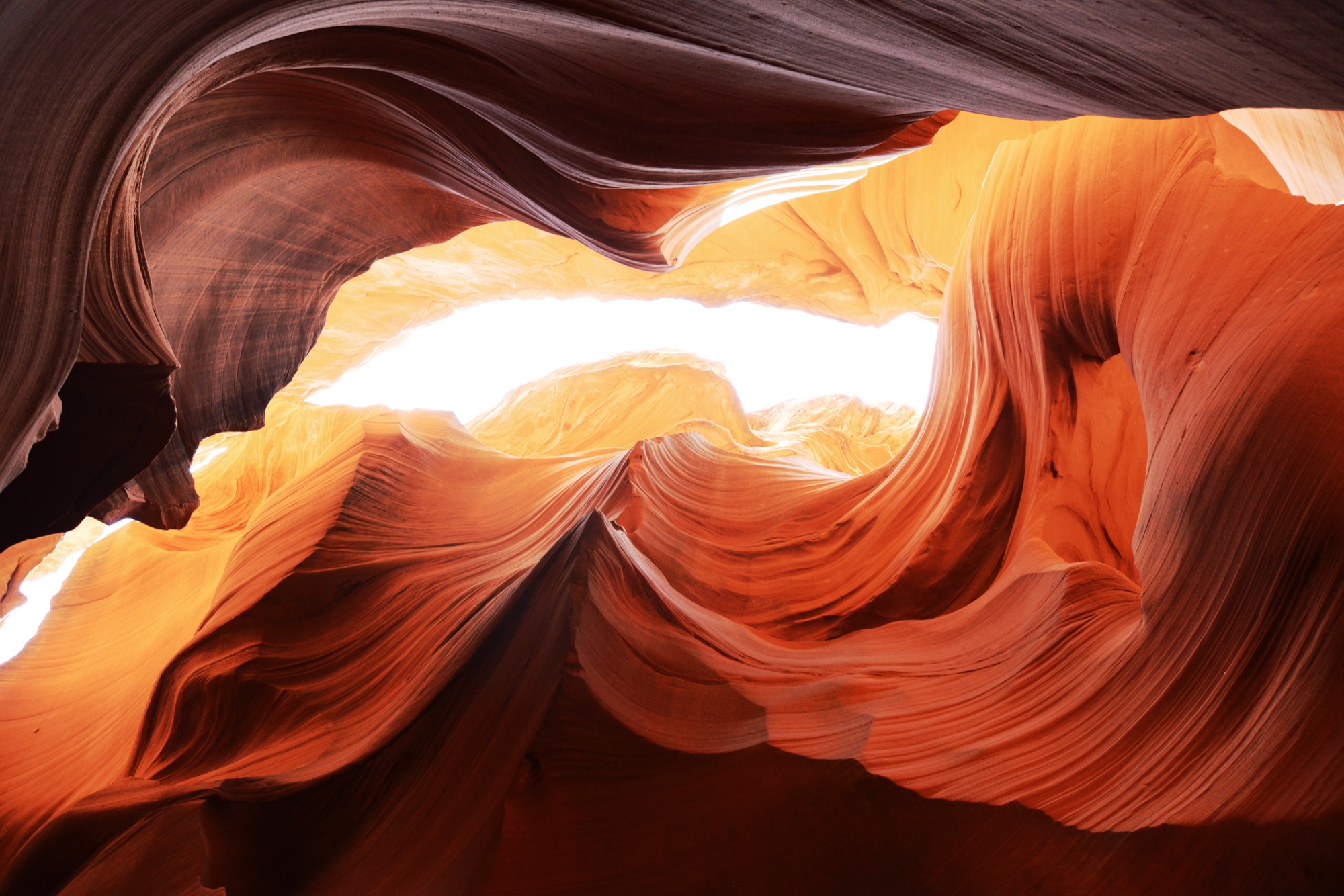
A conversation with teen photographer Joe Goldberg

AM Who are you in a nutshell?
JG I am a fun and energetic fifteen year old who loves to travel to the wildest places, take photos, and explore.
AM How did you find your way to photography?
JG I was eleven years old when I went to Costa Rica and really discovered some of the most natural beauty in the world. I then realized capturing memories with photography is a really cool thing. I realized how passionate I am about photography, so I decided to purchase a camera with the money I received after my bar mitzvah.
"I then realized capturing memories with photography is a really cool thing."
AM What does being fifteen mean for your creative work?
JG I think the role my young age plays in my creative work is having this constant urge as a young kid to travel and see things most people won’t be able to see in a lifetime.
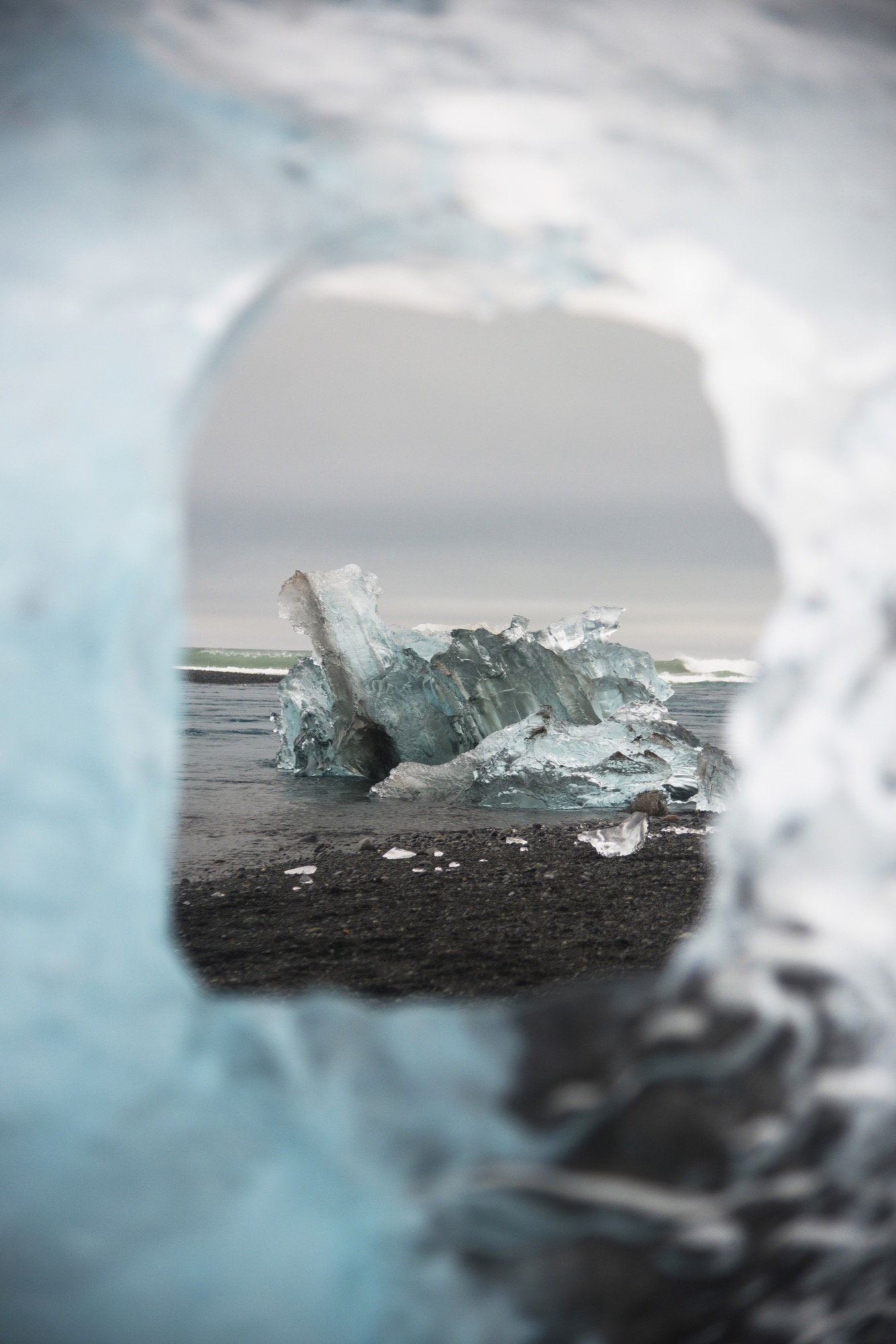
AM How do you balance school, teenage life, and your work as a pro photographer?
JG I attempt to get the best grades I can, so I can afford to miss a couple days of school here and there when I travel. I hang out with friends and family when I can. And when I get the chance to go out on an adventure, I will take the opportunity and then return to my normal, everyday life in Washington D.C.
AM What do the mountains mean to you?
JG The mountains play a big role in my photography. Probably, because I believe mountains make for the coolest photographs. My favorite activity also has to do with mountains, which is hiking. To see those insane views after a strenuous hike is one of the best feelings!
"I believe mountains make for the coolest photographs."

AM What inspires you in your work as photographer?
JG What inspires me is being able to share the beauty of the world with everyone. I love to capture memories and to look back on these incredible experiences I have been lucky enough to have. I love to hear how impressed people are with my work, which is a really big motivation to bring back the best work I can from these adventures I take. I also use my photos to try to encourage people to go out and explore.
AM What’s your favorite place in the world?
JG My favorite places I have been to have to be Iceland and Alberta. Alberta because the number of lakes and the abundant wildlife just blow my mind. You never know what to expect in the Canadian Rockies, and that is why I decided to go back over the summer after having gone during Spring Break. My other favorite place has to be Iceland. Every five minutes, you see a totally different landscape. I would love to return soon.

AM What’s most important to you in life?
JG The most important things in my life are my family and friends. However, being able to see the beauty in this world and pursue my dreams of being a the best professional photographer I can be is also something very important to me.
AM When are you the happiest?
JG I am the happiest when I am in nature, experiencing the amazing sights the world has to offer.
AM What are you up to next?
JG I just finished traveling to Iceland in October. Iceland is a place I wanted to go to for years now. The waterfalls, wildlife, volcanoes, glaciers, geysirs, unique landscapes, and the incredible Northern Lights are the reasons why it was on the top of my bucket list. △
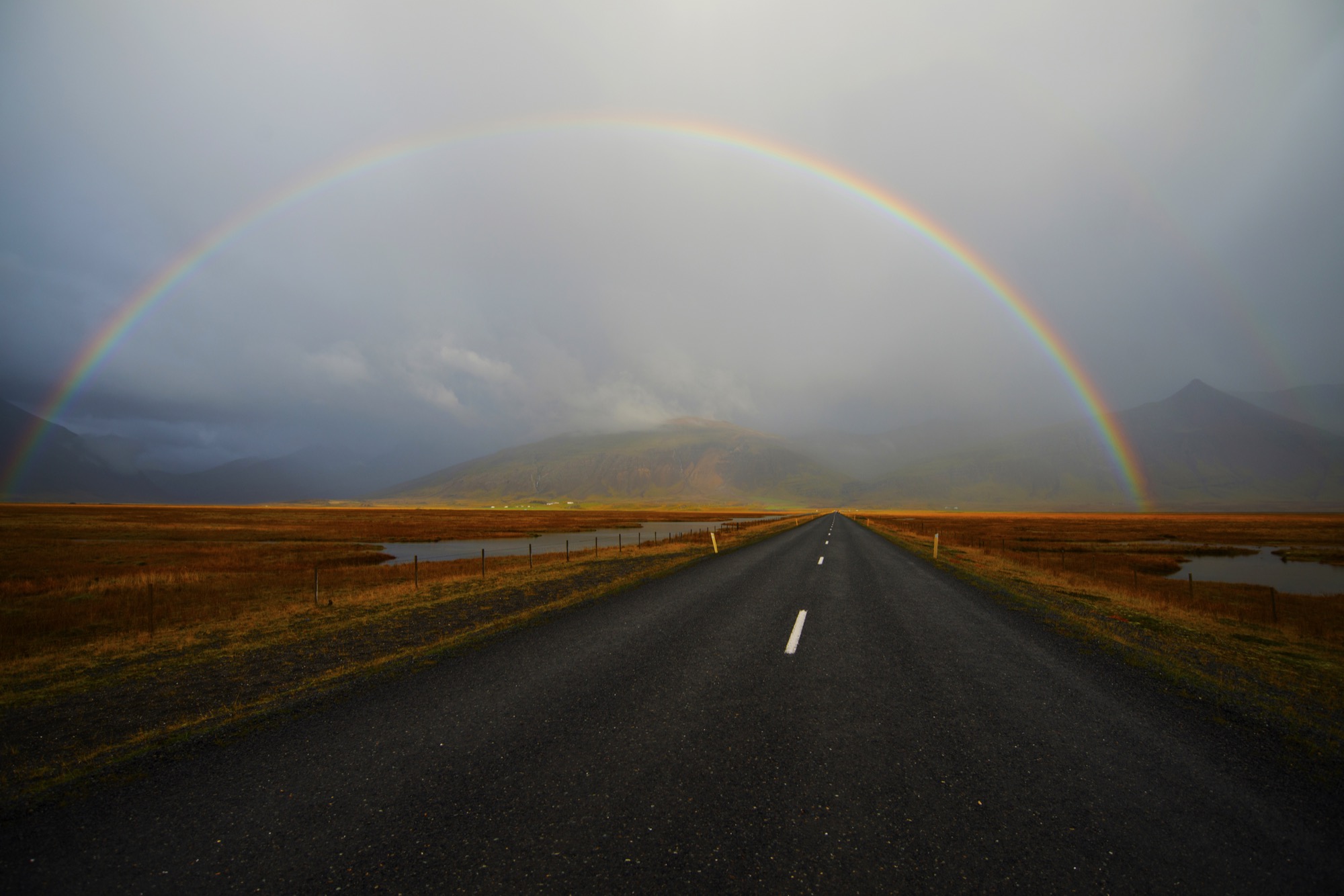
Monochromatic Reminiscion
Belgian travel and wildlife photographer Martin Dellicour comes eye to eye with the history of Earth embodied in a herd of muskoxen on the high plateaus of Dovrefjell, Norway.
Belgian travel and wildlife photographer Martin Dellicour comes eye to eye with the history of Earth embodied in a herd of muskoxen on the high plateaus of Dovrefjell, Norway.
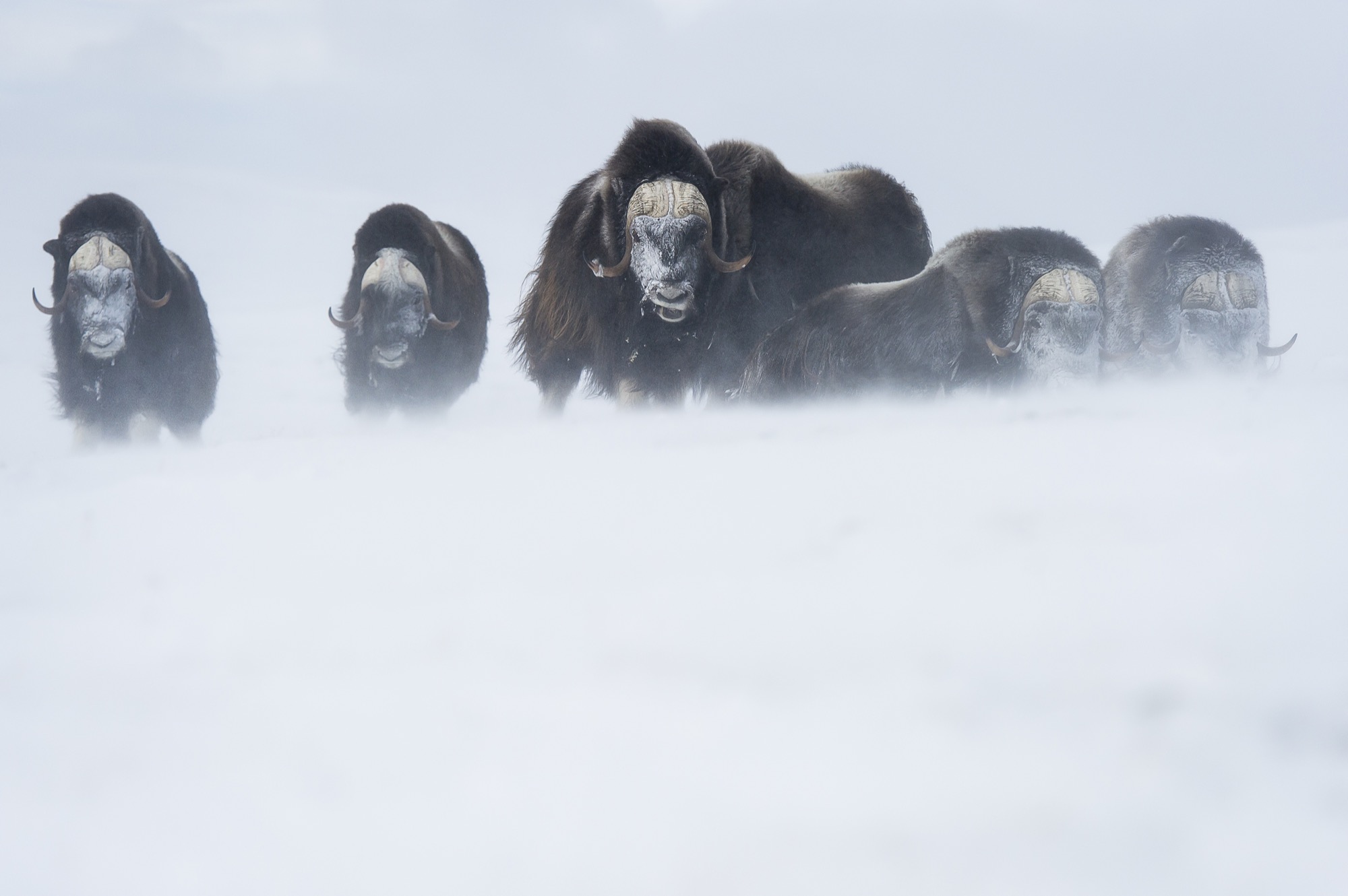
Growing up in Ardennes, Belgium, visual artist and photographer Martin Dellicour developed an appreciation for the aesthetics of nature early on. Dellicour remembers childhood as taking place outdoors, simply observing. At age fifteen, Dellicour’s parents gave him his first camera, a Nikon F–501, which he regards as “a revelation where the decision of being a photographer was secretly made.”
After studying at the school of art in Liège, Belgium, Dellicour worked independently, producing travel photography, graphic design, and videography. Four-teen years ago, he opened his own creative agency, Studio Breakfast, and later the graphic design atelier C'est Beau.
Pictured is Dellicour’s heedful dance with a herd of majestic muskoxen in Dovrefjell-Sunndalsfjella National Park, Norway—a winter landscape he describes as “an amazing and wild place.” The snow has a power of its own to Dellicour, one that can “change our perception to focus on the simple, essential things, and see the many questions of everyday futility.”
These muskoxen have a similar effect on Dellicour. “When you are in front of them, you feel like you’re facing the history of Earth. Out of time.” Paired with the white, minimalistic landscape, Dellicour demonstrates the transient experience of observation.
“When you are in front of them, you feel like you’re facing the history of Earth. Out of time.”
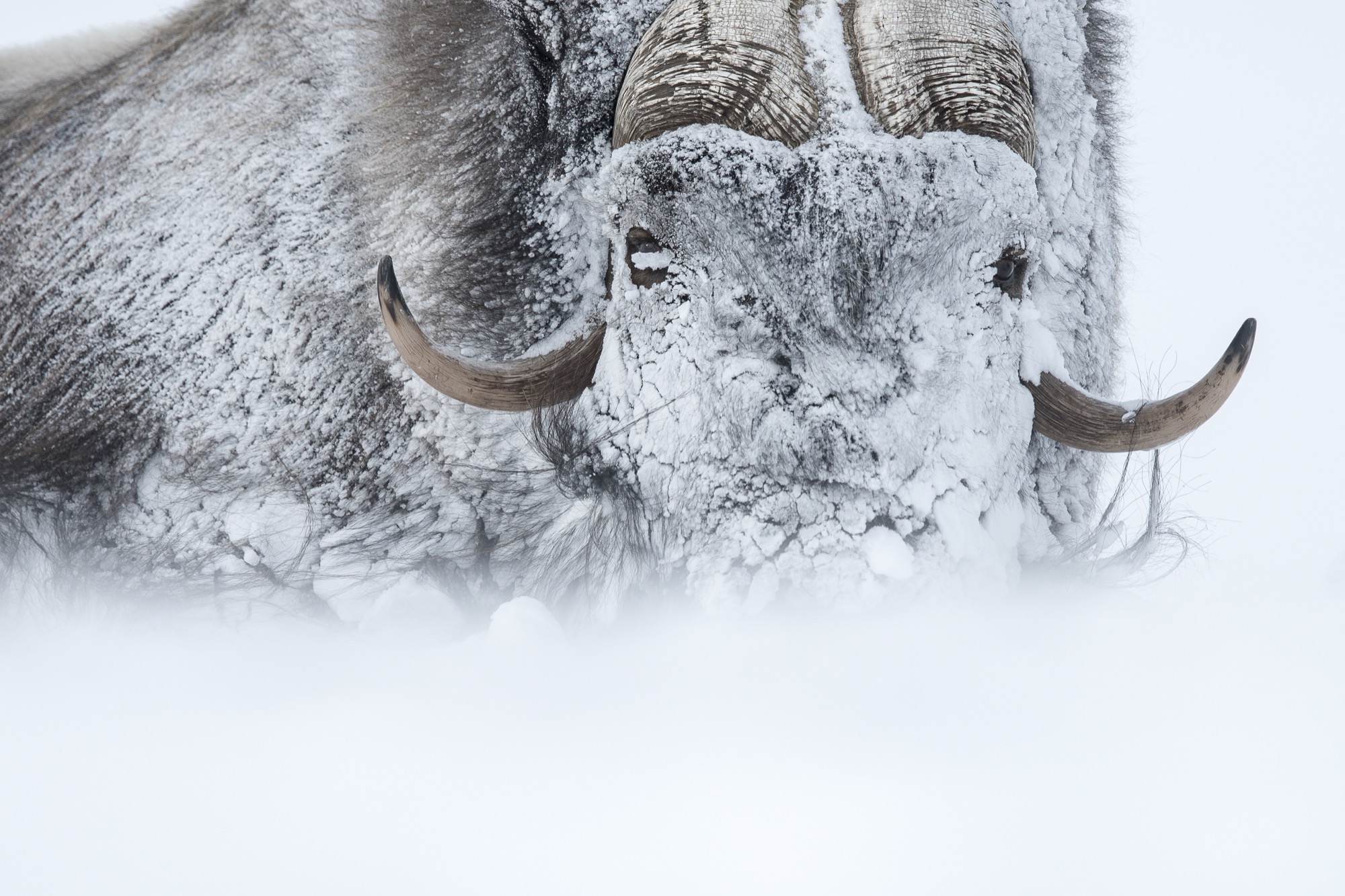
Dellicour desires to be close with nature, questioning the eyes and minds with which we observe. “It is an inner journey as much as an outdoor experience,” he says about his purpose in capturing natural settings.
“My main subjects are wildlife, nature, landscapes. But behind the subject, I am moreover fascinated by the light, the way light always surprises me in outdoor conditions.” Places visited hundreds of times appear different to the lensman every time. “Nature photography has this quality of keeping an element of unpredictability,” he says. “It’s exciting.”
“My main subjects are wildlife, nature, landscapes. But behind the subject, I am moreover fascinated by the light, the way light always surprises me in outdoor conditions.”
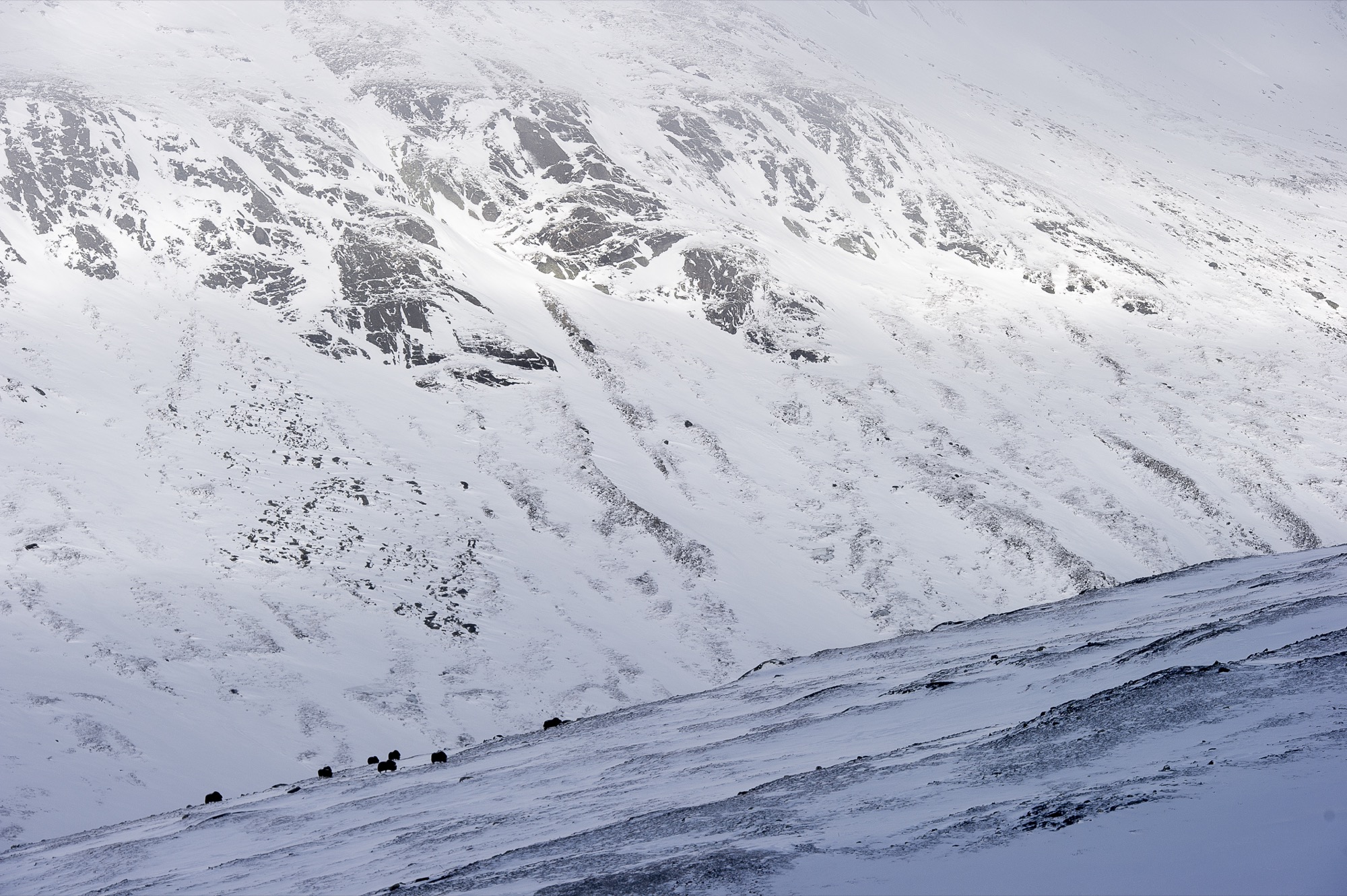
Monochromatic atmospheres characterize Dellicour’s artwork. “The subject is not always recognizable but more of a suggestion.” The indistinct interplay between the wild animals and the still landscape becomes the crux of his work, the essence of what makes him a unique artist. It’s the unpredictability and rawness that draws the viewer to question what visual experience we’re having and why.
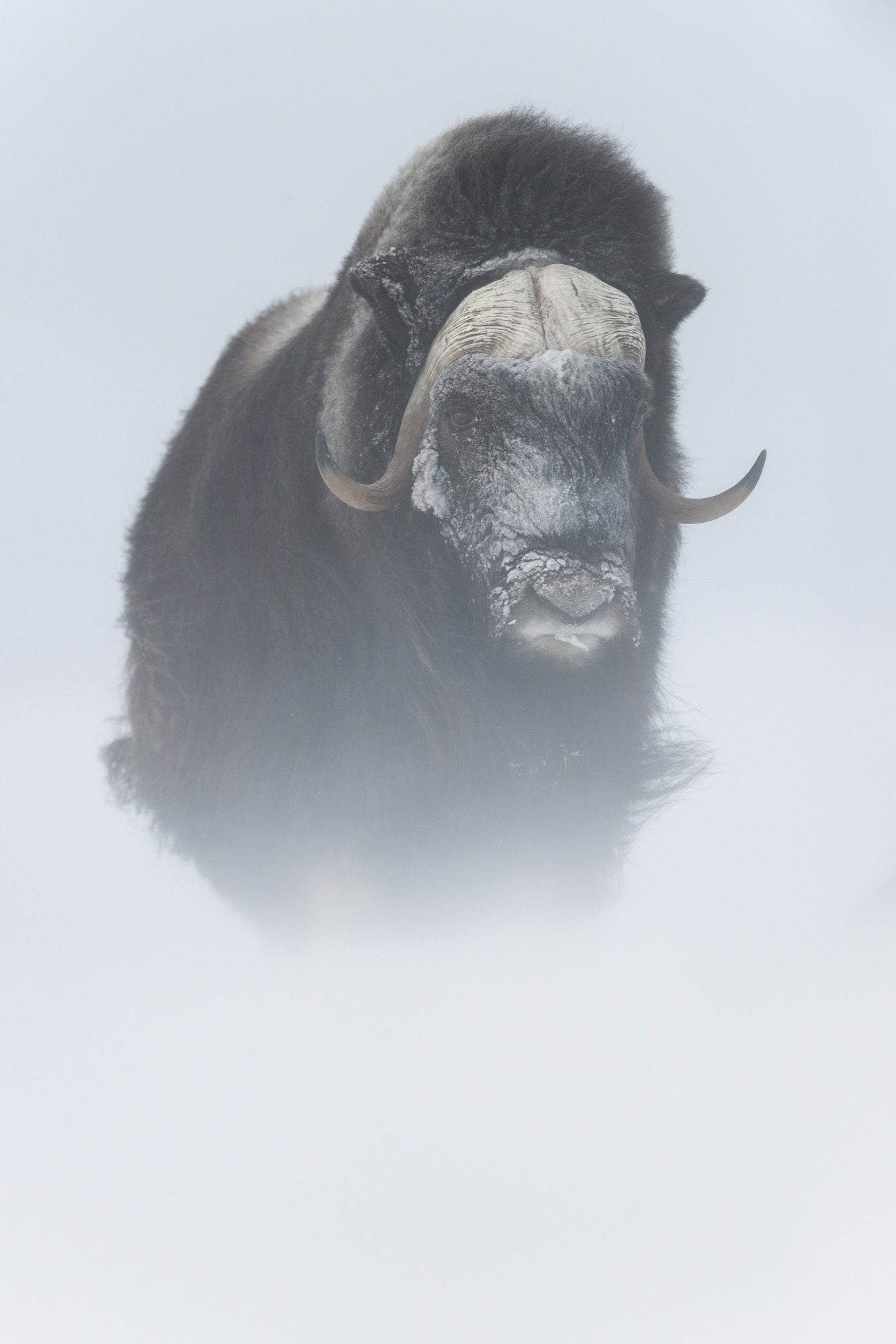
Dellicour evaluates his own work through the eyes of others. “It’s quite difficult to know if I’ve got talent or not,” he says. When he finishes one project, he’s off to the next in order to keep the creative mindset moving. Artwork then becomes a mode of transport between ideas, in hopes that others will be able to identify something inside of themselves that reacts to the visual aesthetic presented. In this way Dellicour main- tains freedom of expression, which allows viewers to write their own stories and empathize with his work.
His life, seemingly complex—ever engaging with a new subject in front of the lens, perpetually on the road—Dellicour nevertheless remains simple in lifestyle. “I try to get the best of all the little and big things that happen in my life”...walking in forests, making bread, sharing time with his wife and son. “Sometimes we can’t see the evidence,” he says, “we focus on the bad things or don’t even take the time to focus on anything.” So keeping an element of play is essential to Dellicour’s life, the balance of contemplating, creating, yet liberating via the visual arts. △
The Building Friendship
Friends since preschool and sharing a love for design and the mountains, the founders of MTN Lab, an experimental furniture and art studio in Colorado, have always been building things together
Harris Hine and Rudy Unrau have been best friends since preschool. Now both 27 years old, they have founded MTN Lab, an experimental furniture and art studio in Colorado. Growing up in Boulder, Colorado, the lifelong friends have been building things together since they can remember—skis, bikes, random projects. But it wasn’t until spring 2015 that the idea for MTN Lab was born. Both back in Boulder, Hine and Unrau began showing sculptures at Studio Como in Denver’s RiNo art district at the time. “Getting in there is what really materialized the company,” Unrau recalls. “That’s when we came up with our name and went from just building stuff to actually focusing on a business.”
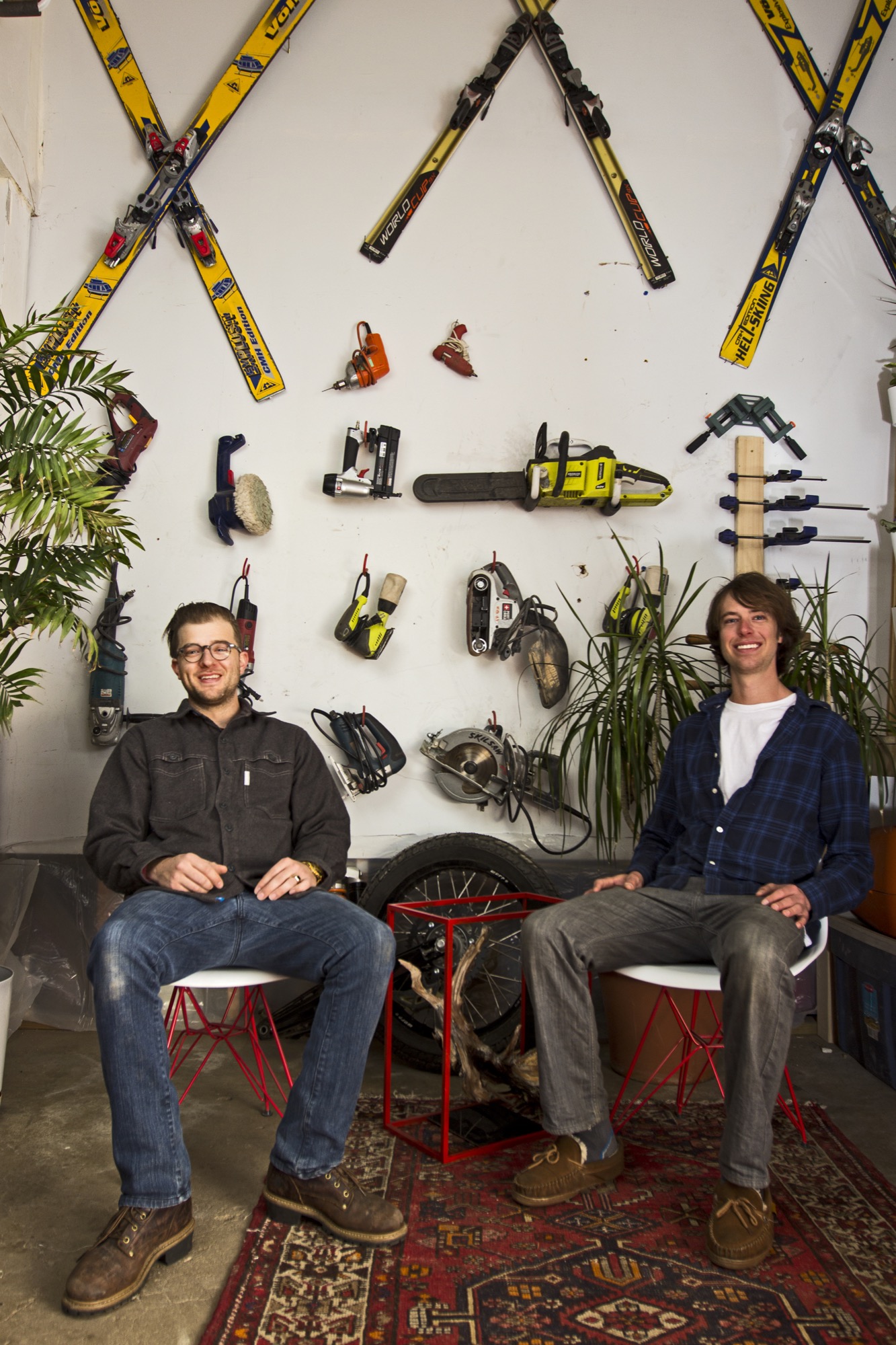
The two men, both quiet and reflective, share an ardent love for design and the mountains. Yet, they come together at MTN Lab—at the intersection of art and adventure—from opposite directions: Hine a trained designer and woodworker, Unrau a former professional mountain biker turned woodsman fighting wildfires for the Forest Service.
Harris Hine
Harris Hine grew up profoundly influenced by his father, Vienna-born modernist architect Harvey Hine, who founded HMH Architecture + Interiors in Boulder.
“I’ve always been torn between the design side of my personality and just wanting to be in the woods,” Hine shares. He went to school for design at Pratt Institute in Brooklyn before moving from New York City to Portland, Oregon, where he worked as industrial designer. “I didn’t find any fulfillment doing other people’s projects, and I didn’t really like the mass production side of product design,” he admits.
All those years, Hine pined for the woods, where his old friend was.
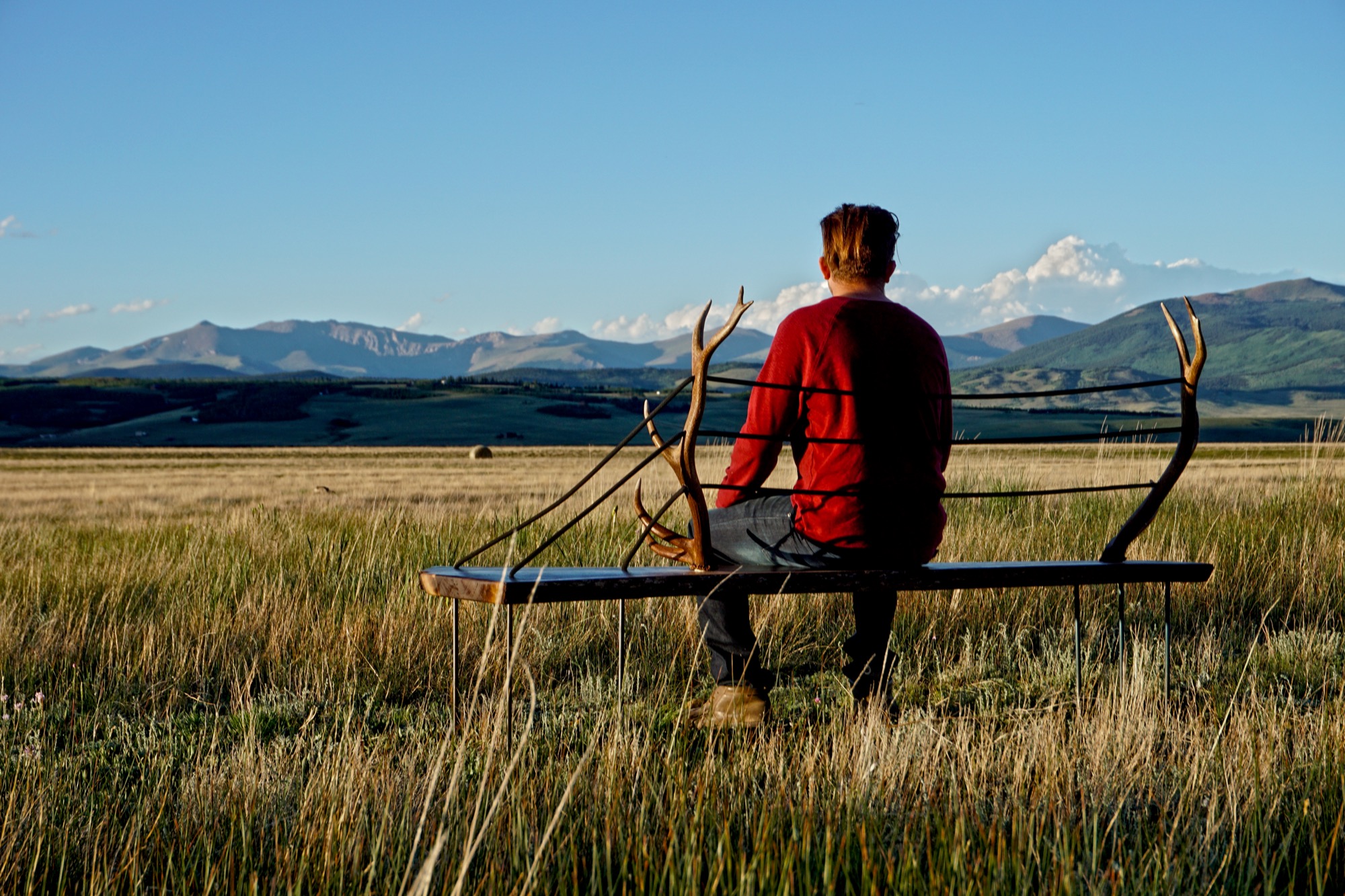
Rudy Unrau
Unrau, while attending college in Western Colorado, signed on with the United States Forest Service. “I was on track to becoming a smoke jumper, working for a helicopter crew down in Durango,” the long and lanky woodworker recounts. “It was a great setup because you work a ton in the summer, and then you get winter free to do whatever you want, like ski and move to Canada.”
Throughout those years, Unrau had been harboring the desire to return to making art. “Seeing the things you see when you get to fly around and travel the US and go to all of the mountain ranges... I had ideas emerge to work with the trees that had been burnt or partially burnt in fires because they get so twisted and cool.”
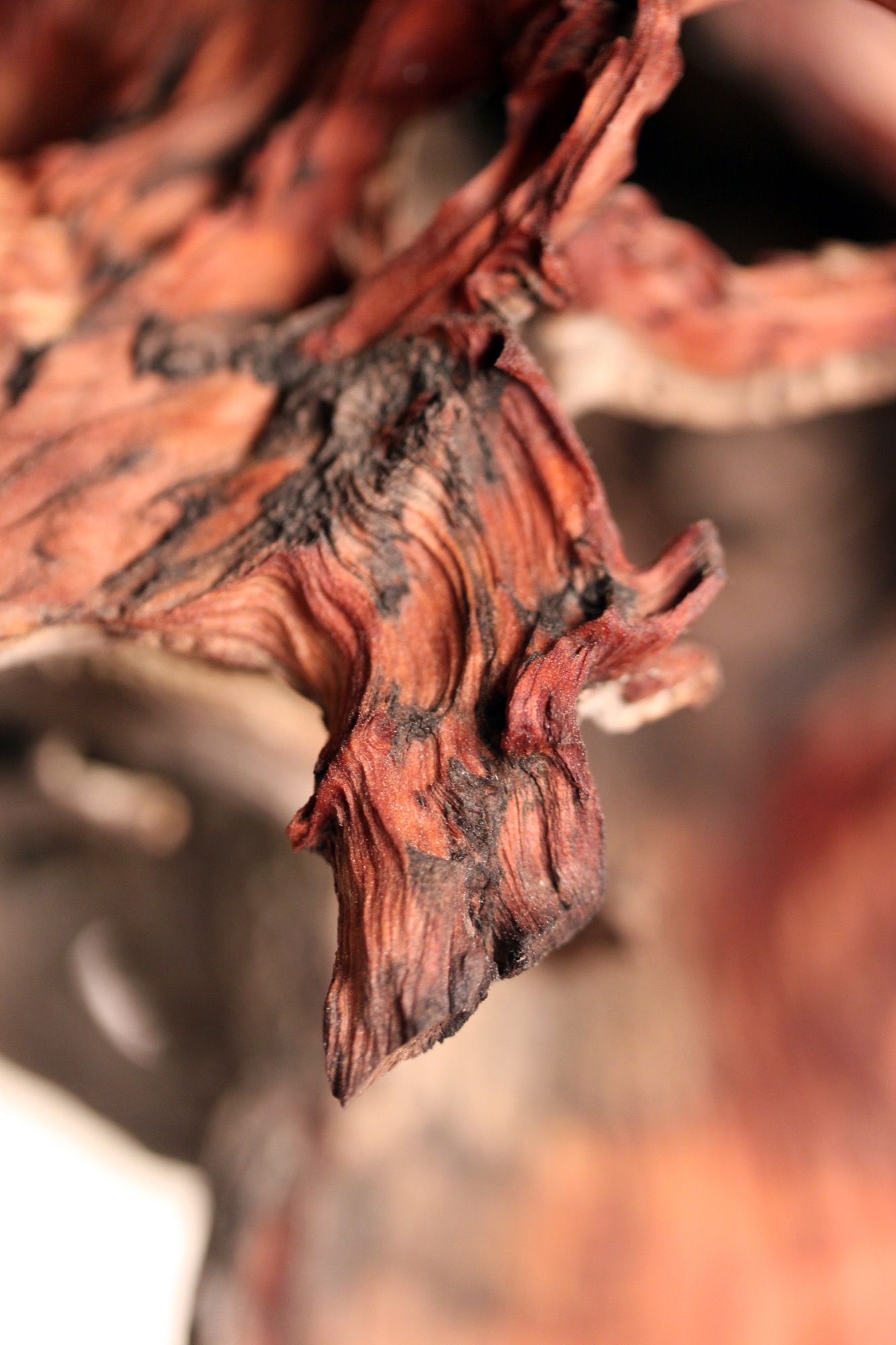
"I had ideas emerge to work with the trees that had been burnt or partially burnt in fires because they get so twisted and cool.”
Joint adventure up north
At last, one pivotal winter Hine and Unrau moved to British Columbia together to ski. Their close friendship and mutual influence would impact each man’s path. “Rudy was all in the woods,” Hine remembers, “Living together pulled him back into the design world and brought me back into the woods.”
Unrau agrees: “I’ve always been at home in the woods. Growing up, I really wanted to pursue mountain biking, so I raced mountain bikes professionally for quite a few years.” After the athlete got “a little bit tired” of mountain bike racing in world cups, he focused on skiing.
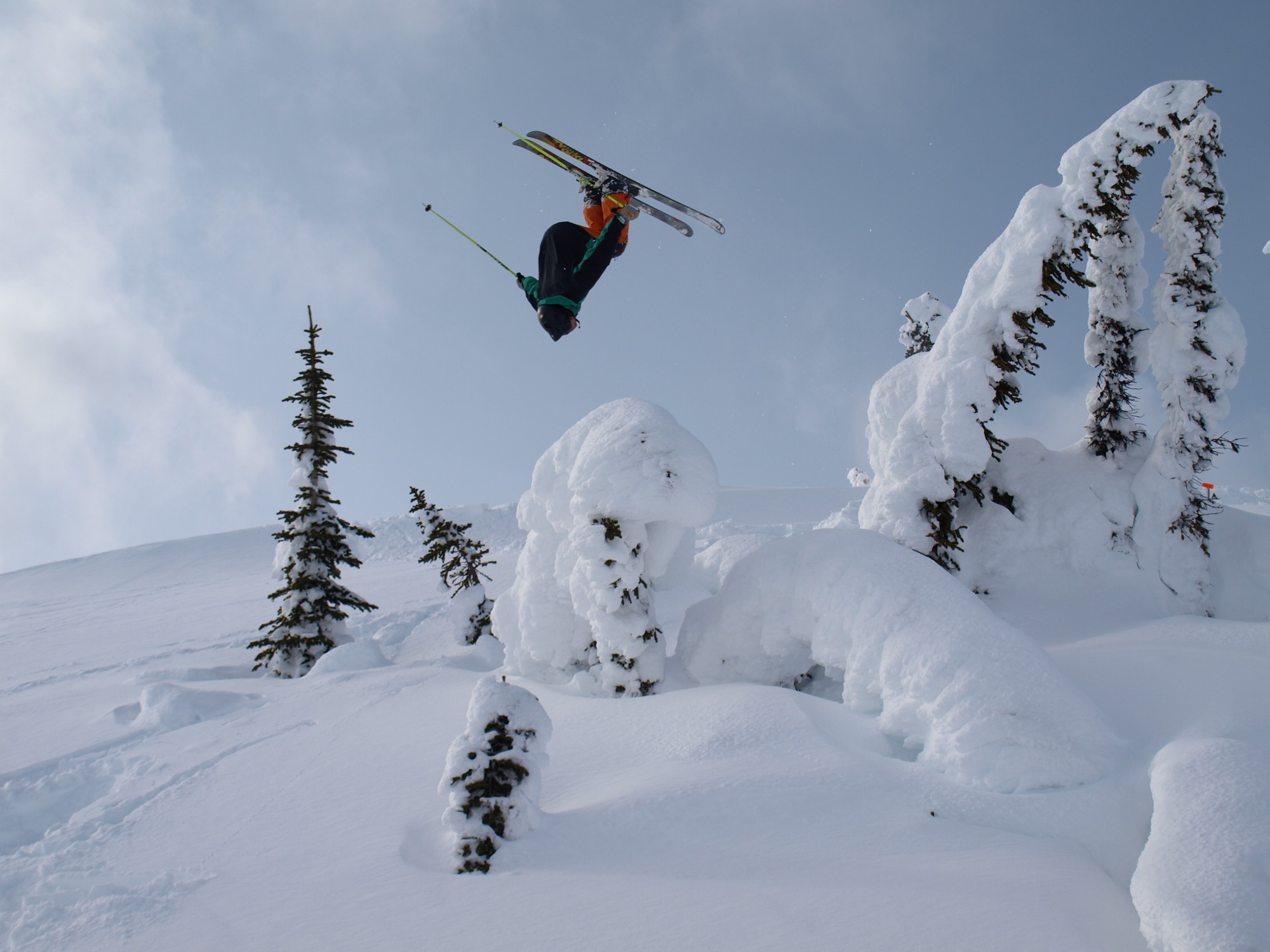
Skiing in Canada was good fun. Winter gone, however, Unrau planned to work another fire season. The outdoorsman envisioned himself carrying on that seasonal rhythm of demanding service and wild adventures in the snow for years until he had and his friend had their fill of youth and independence. “And... I crashed paragliding,” he tells, falling solemn all of a sudden. “I broke my back and almost died and spent half a year recovering.”
His loyal friend by his side, Unrau needed to reevaluate his future. “I realized, I wouldn’t be able to do fire again,” he says. “And then it was pretty natural the way MTN Lab came together—us getting our shop set up to where we could build.”
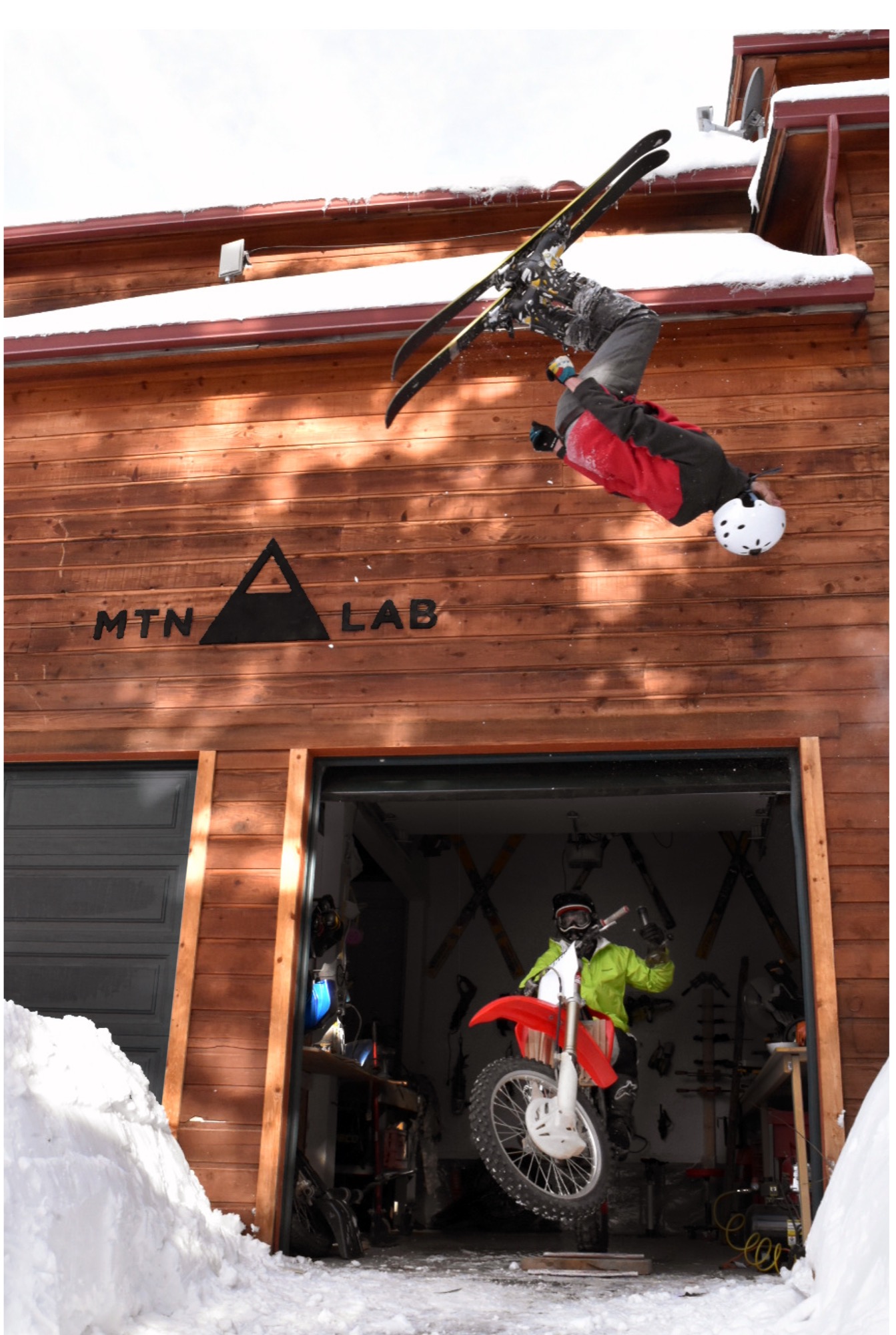
The MTN Lab process
Starting with sculptures, the duo soon began venturing into furniture. Their vision is to grow the Conifer studio into an art collective, with more creatives joining them. They are even planning to build a tiny house to accommodate visiting artists and designers.
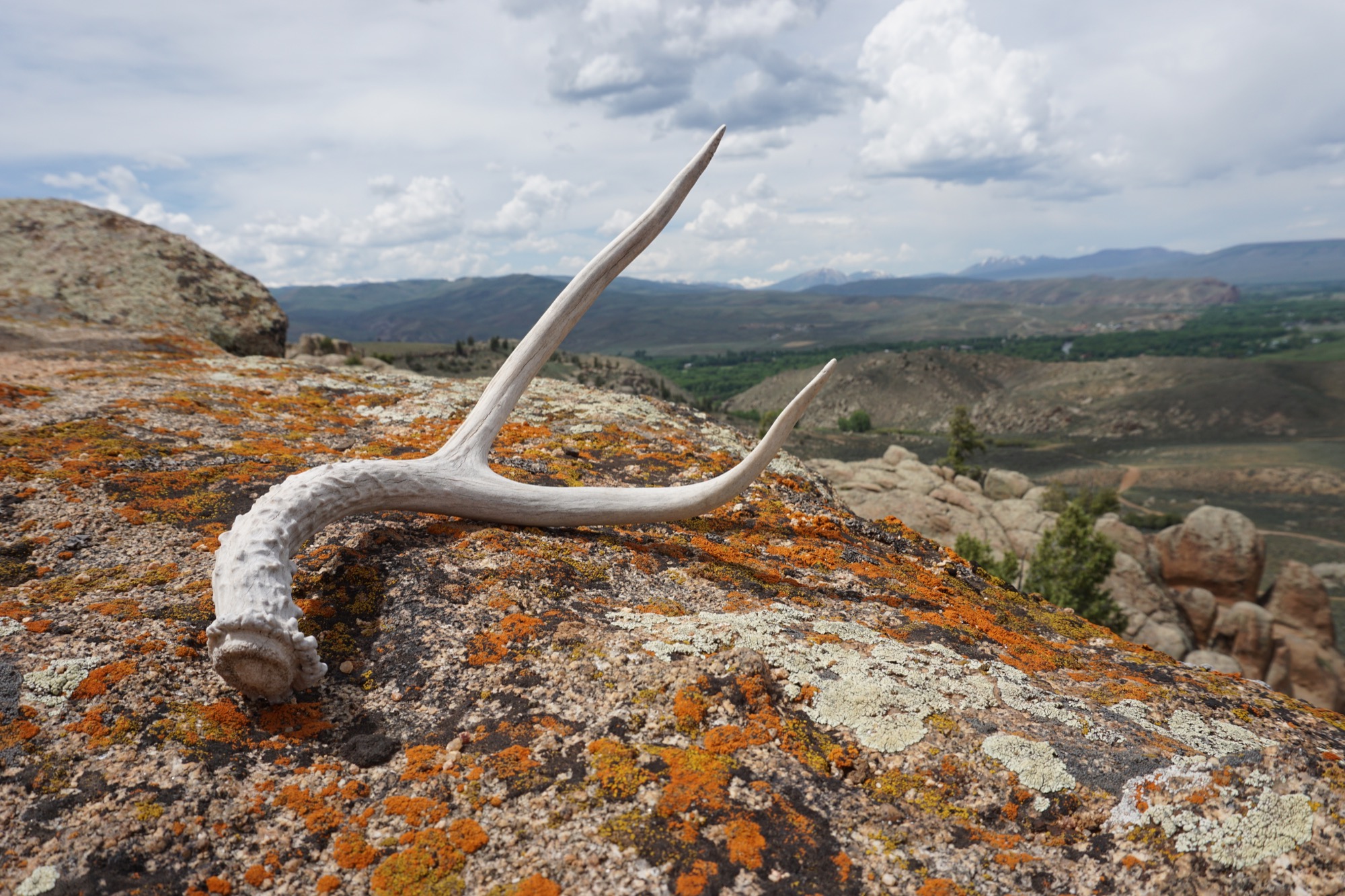
MTN Lab is as much a concept as it is a company. “Our process is the most indicative of what we make,” Hine explains. The founders source all of their materials themselves in the Colorado mountains. “We quarry our own stones to carve and collect our own wood.” Like it was for generations of makers in the mountains before them, MTN Lab’s workflow follows nature’s rhythmic swing. “Right now it’s the season for us to go get river stones because the flow just came down,” Hine tells me, when I sit down with him and his partner on that warm day in early September. “And we are doing antler stuff because we found a bunch of Elk sheds. That’s this flow that we follow.” Adds Unrau: “Our company is trying to do the whole process from sourcing, getting our materials, designing it, building it ourselves, photographing it ourselves.”
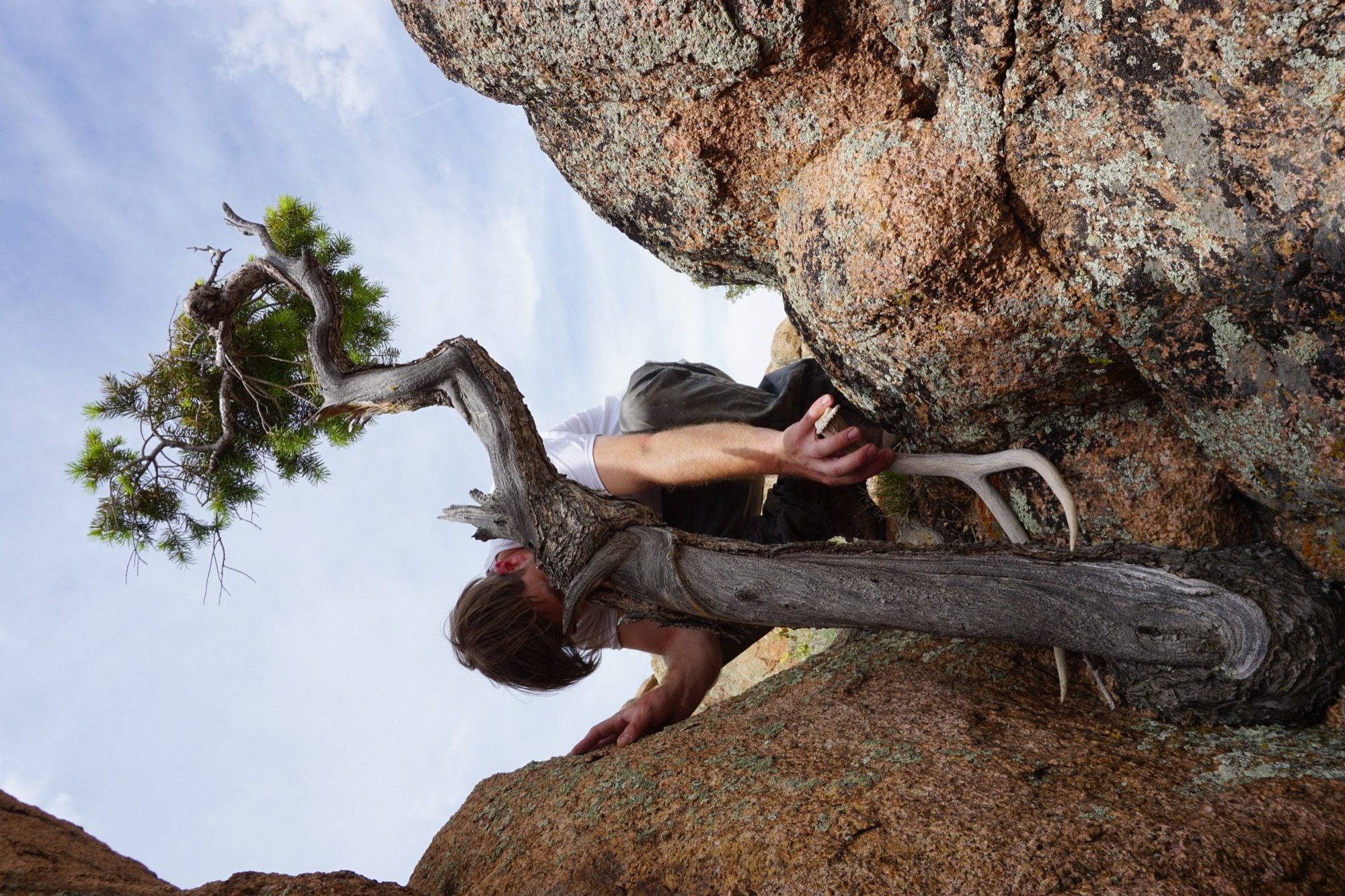
The friend believes having grown up in the mountains is what motivates them to see the entire process through, from beginning to end. “Spending all of your free time in the backcountry—you’re just so inspired by what you’re surrounded by,” Unrau says. “Initially, we were out there to ski, climbing to ski. We were dirt-biking. But when you spend that much time out there, it altered our perception of why we were there. And now it’s awesome because we get to ski, but that’s not the whole part of the process. The ski is the vessel for finding the materials—as well as the inspiration.”
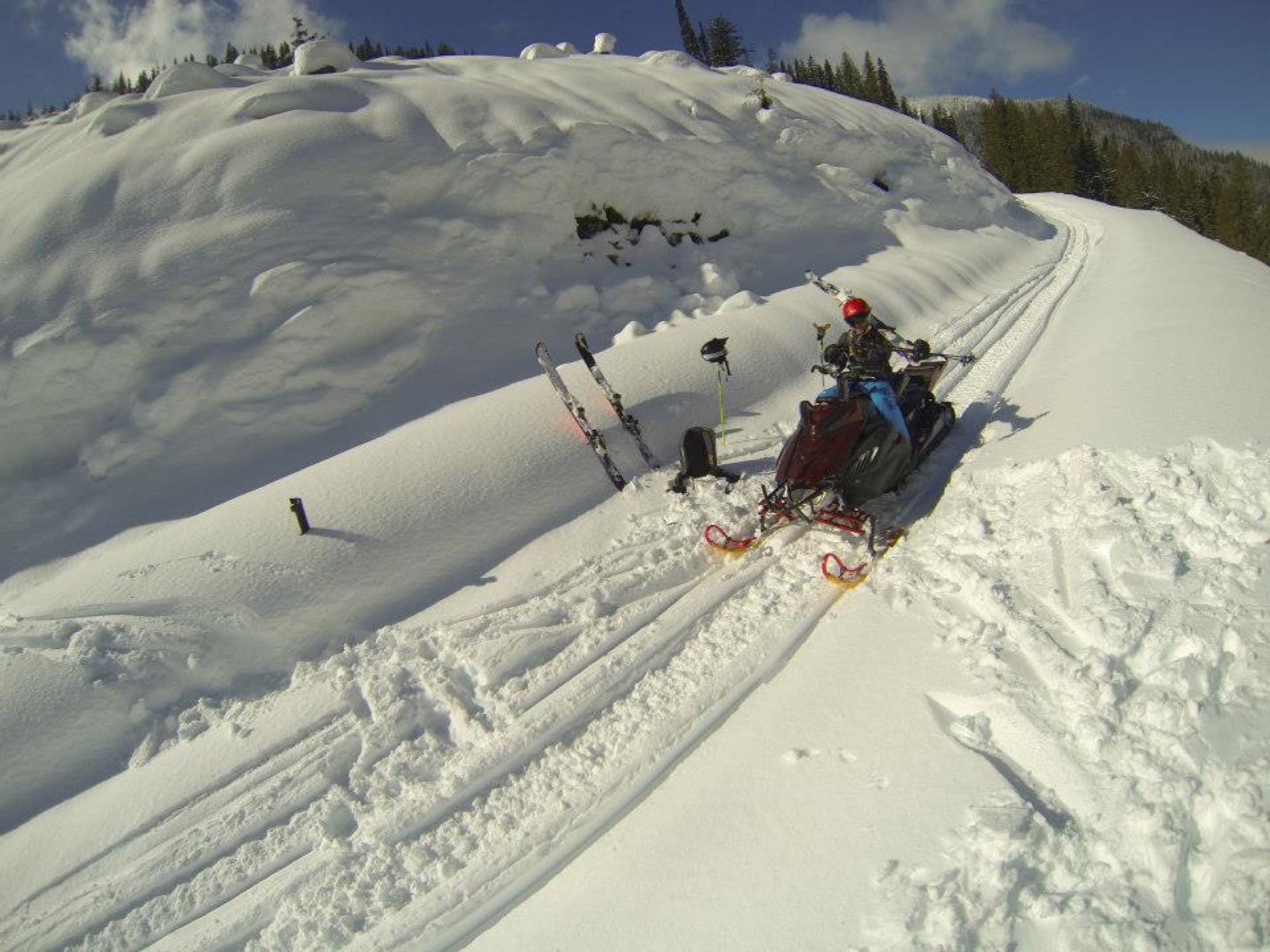
“The ski is the vessel for finding the materials—as well as the inspiration.”
Connecting nature and art
“I’ve always liked minimalist design, and I rarely see that done with natural materials,” Hine says. “You look at Bauhaus stuff, and it’s very industrialized. My dad being the modernist he is, half of me is always striving for that simplicity. But then there is the other part of me... the Colorado guy. And I see these cool pieces of wood and antlers and it naturally merged. In college, I was more on the industrial, clean-cut metal side of things, and my style has evolved more and more into a hybrid of rustic and modern.”
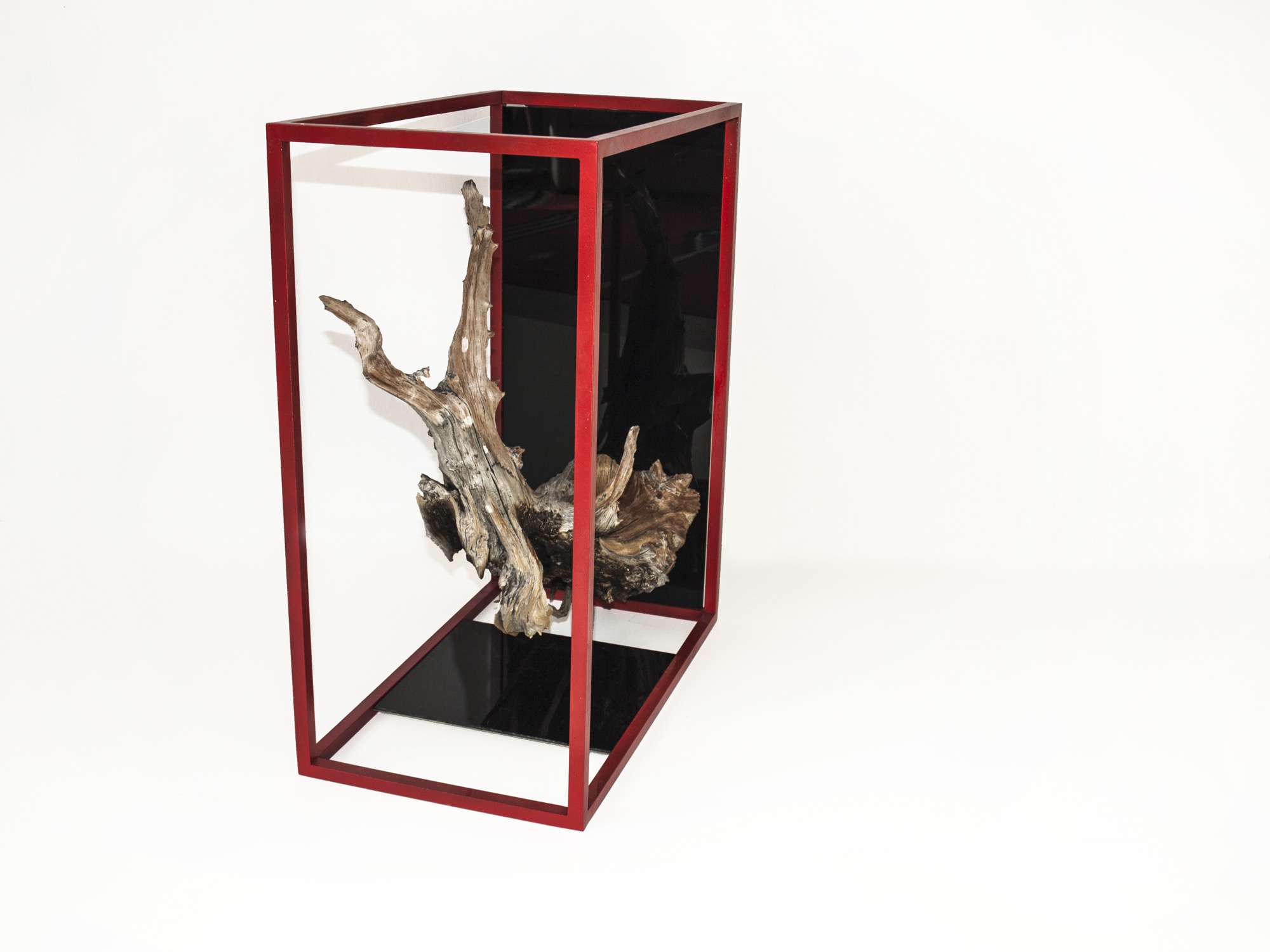
Unrau, for his part, never earned an art or design degree, nor does the lack of academic study in the field limit him in his current work. “We really do our designing when we’re out in the woods. We don’t sit down in an office to draw. We see the material, and the material almost dictates its design.”
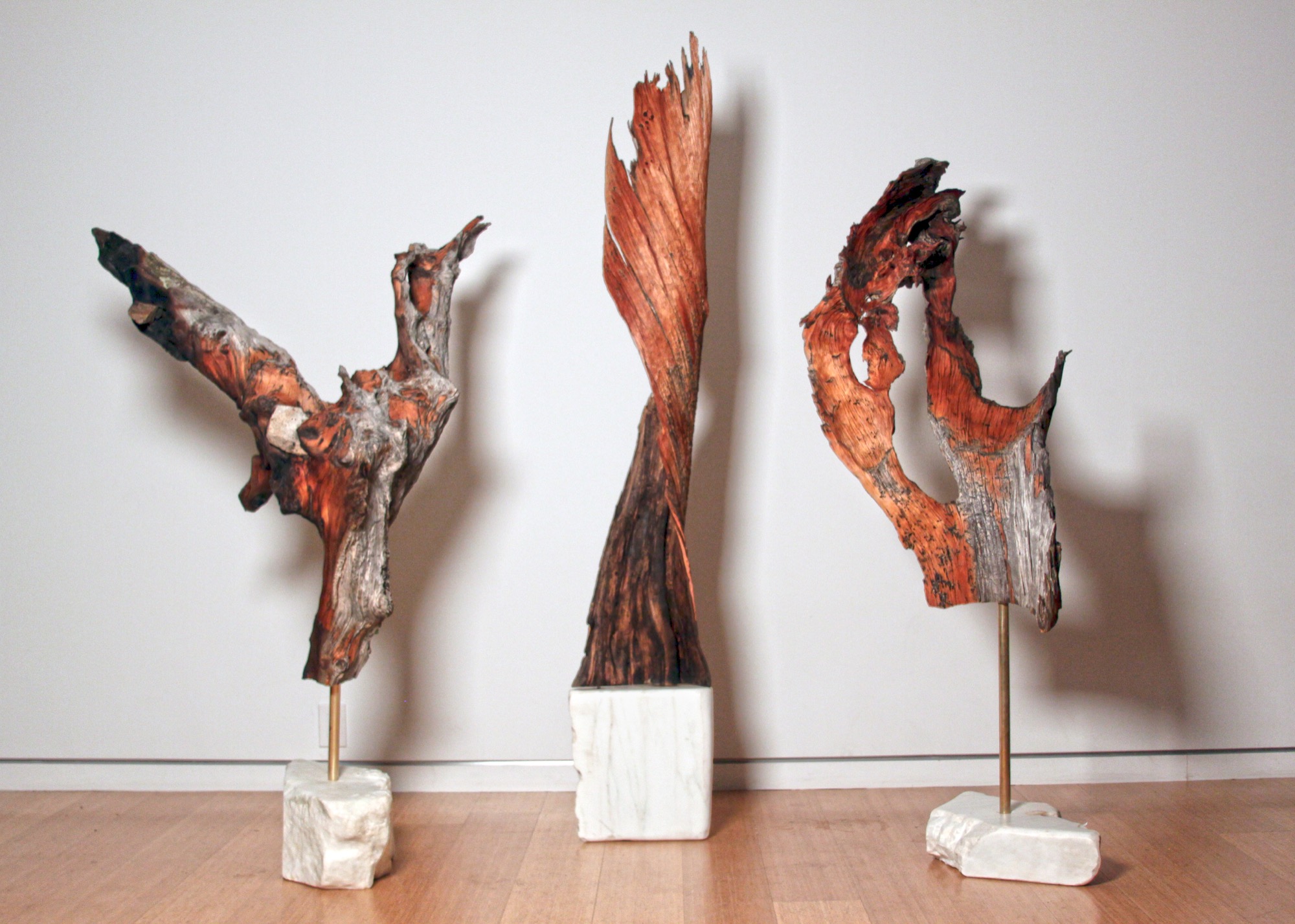
They usually know right away, if a piece of wood they come upon in the forest will transform into an art sculpture, a table, or something else entirely. Back at the studio, they combine found pieces of wood or elk shed with marble and often with contrasting metal. The final artwork or furniture piece comes together like a collage. While the sculptures are never drawn out, the furniture generally is. “We design our table bases, draw them by hand. Sometimes, we bring it into CAD.”
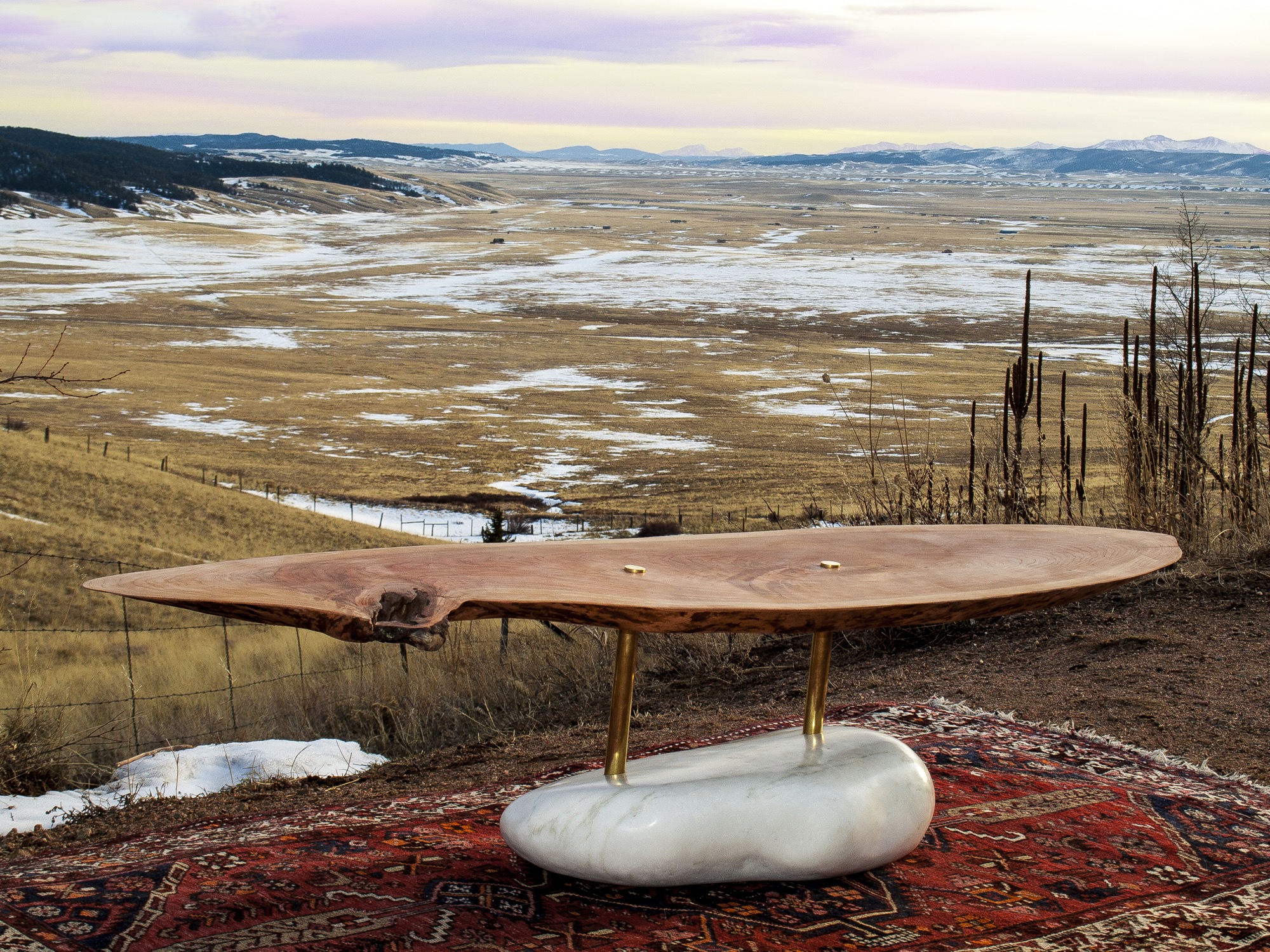
The day I met up with Unrau and Hine, they had come down from their studio above 8000 feet to deliver a piece of art they made for the Boulder Museum of Contemporary Art. “We had this mobile,” Hine begins, chuckling, “And then Rudy dropped it on the staircase, and we were like ‘Oh, no, we’re so crushed. And we had to quickly build it a second time yesterday, and it came out eight times better than the first. That process isn’t always easy to rely on, but sometimes when you make it again, it’s better. This is how we continuously design.”
Speaking about the synergy between Colorado’s magnificent nature, rich history and tradition, and progressive modern art, Hine notes that he is profoundly influenced by the stone carvings of American artist and landscape architect Isamu Noguchi. “It’s that blend of leaving these big natural boulders and polishing one face of it.”
Rustic designs with wood and stone are ubiquitous. “But it’s hard to find someone who has done them simple enough so that these materials individually speak for themselves,” hine says. “Antler furniture is really something we have been experimenting with, because it’s hard to find a simple antler-anything. All the chandeliers are the same hunter antler cluster. And all of a sudden, you are appreciating the simplicity of the singular antler as a sculptural element. That’s what makes it alpine modern, and not just alpine.”
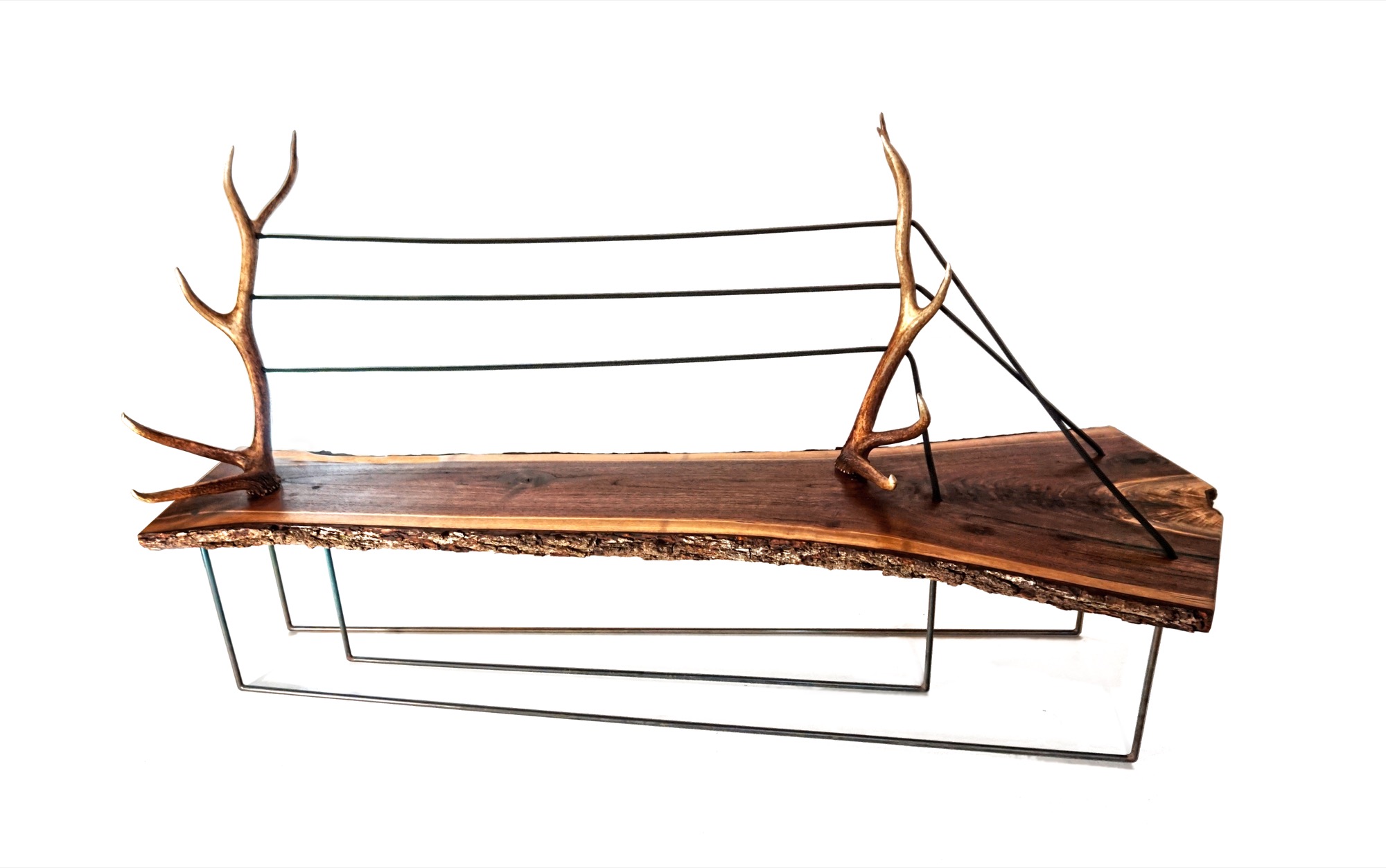
“And all of a sudden, you are appreciating the simplicity of the singular antler as a sculptural element. That’s what makes it alpine modern, and not just alpine.”
A modernists at heart, Hine still looks to the arts and crafts movement for inspiration. “Not stylistically but the whole concept of it is huge, especially since my education is in mass production and industrial design and product development. And going back to actually hand-building one-off pieces from the found materials we use, you can’t really build the same piece twice. It’s almost like we’re in an arts and crafts revival, which is weird for me because that’s the antithesis of the Bauhaus influence, of going from craft to industrial production.”
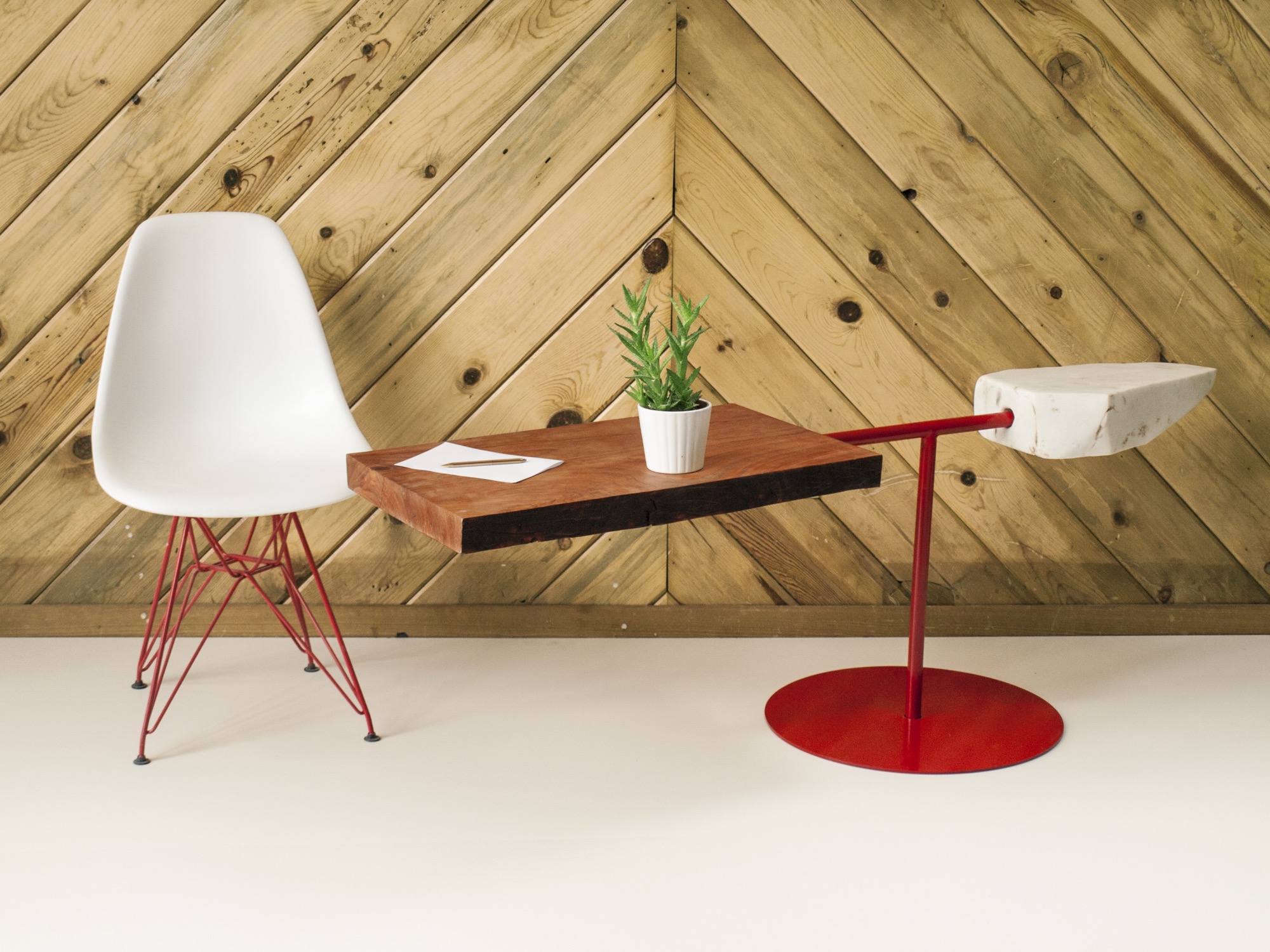
Our conversation later on reveals that the two 27 year olds are somewhat of an antithesis, too—to their fellow millennials. The Internet, they admit tittering, is their shortcoming. “Neither of us really enjoys social media, self promotion, or even doing the sales part,” Hine says. “It’s the cliché artist who doesn’t sell his stuff. We just are either in the woods or in the shop. It never feels like were working.”
MTN Lab projects
Each MTN Lab piece embodies a story of adventure and friendship.

For example, Unrau says seventy years ago, many trees were cut down to make room for high-voltage lines to Fairplay, south of Breckenridge, Colorado. “The company just left them, so these big old-growth rounds have been drying up there all these years,” he says. MTN Lab milled the pine rounds into table tops. “That’s our next big design push, designing bases for those tables,” he says. “Or the motorcycle, which is a lifelong dream we’ve shared since we were little kids.”
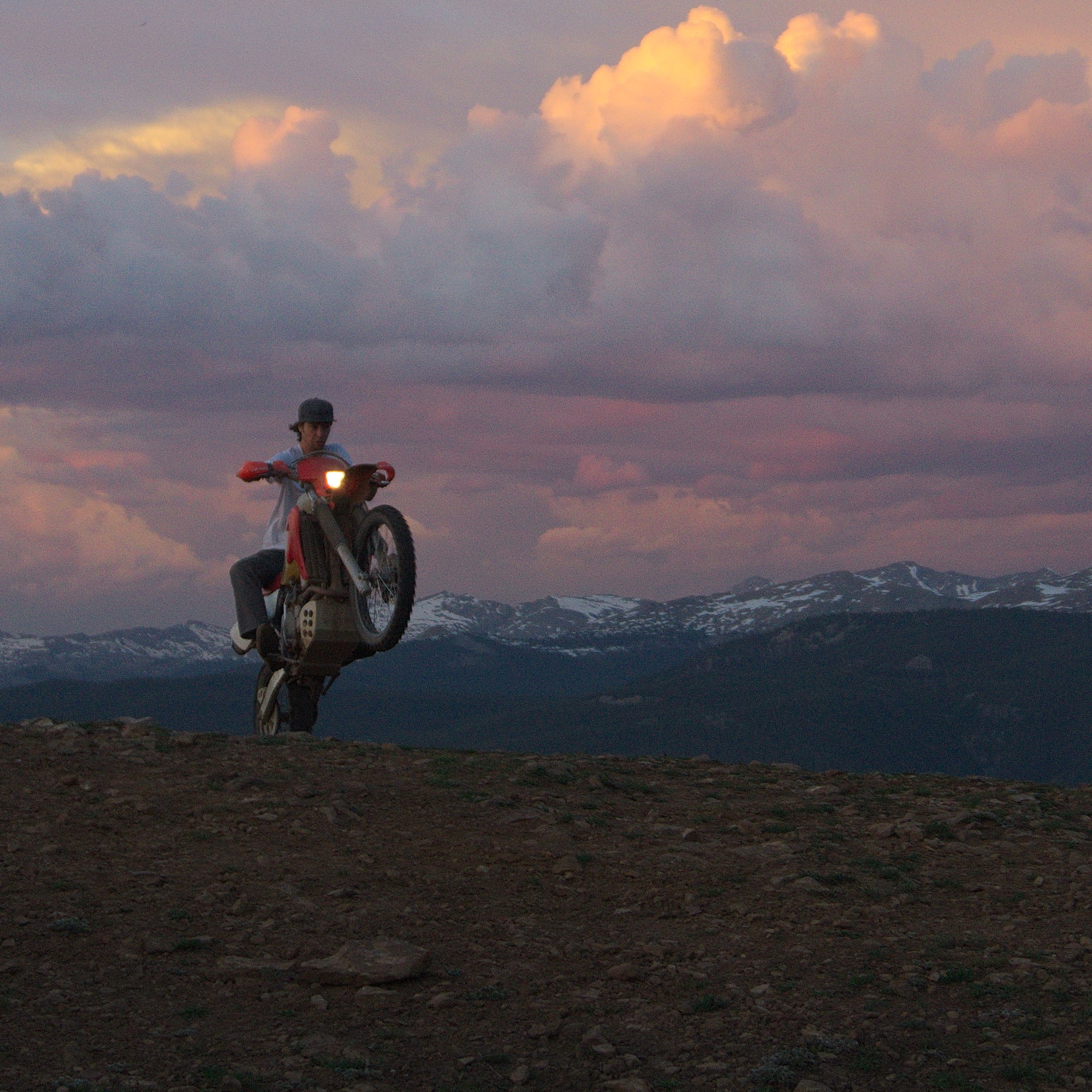
Indeed, Hine and Unrau want to build a motorcycle entirely from scratch, the back end made hand-carved in wood. Before winter, they even want to experiment with producing their our own steel, from mining the rock to crushing and melting it. Whether the resulting material will in fact be usable won’t matter as much: “At least we will be able to appreciate the process when we go to the store and buy steel.”
“The motorcycle is going to be very much like our furniture and our sculptures,” Unrau says. “I would describe it as an art bike. It’s going to be functional. It’s going to ride very well, but it’s not going to look like a conventional motorcycle. I don’t know if we’re going to be willing to sell it.” The business partners are also debating whether they will ever have the heart to sell the 1960s Airstream that once belonged to Unrau’s grandfather and they just finished restoring. “I never want to sell any of our stuff,” Unrau admits, laughing. “It’s hopeless.” △
A Drawn-Out Hike
Seemingly so cumbersome compared with instagramming your every adventure, contemplative sketching in nature slows you down enough to see all the details.
In times of Instagramming every outdoor adventure in, well, an instant, slowing down to sketch a nature scene, seemingly so cumbersome by comparison, becomes a contemplative process, the details more significant for the effort.
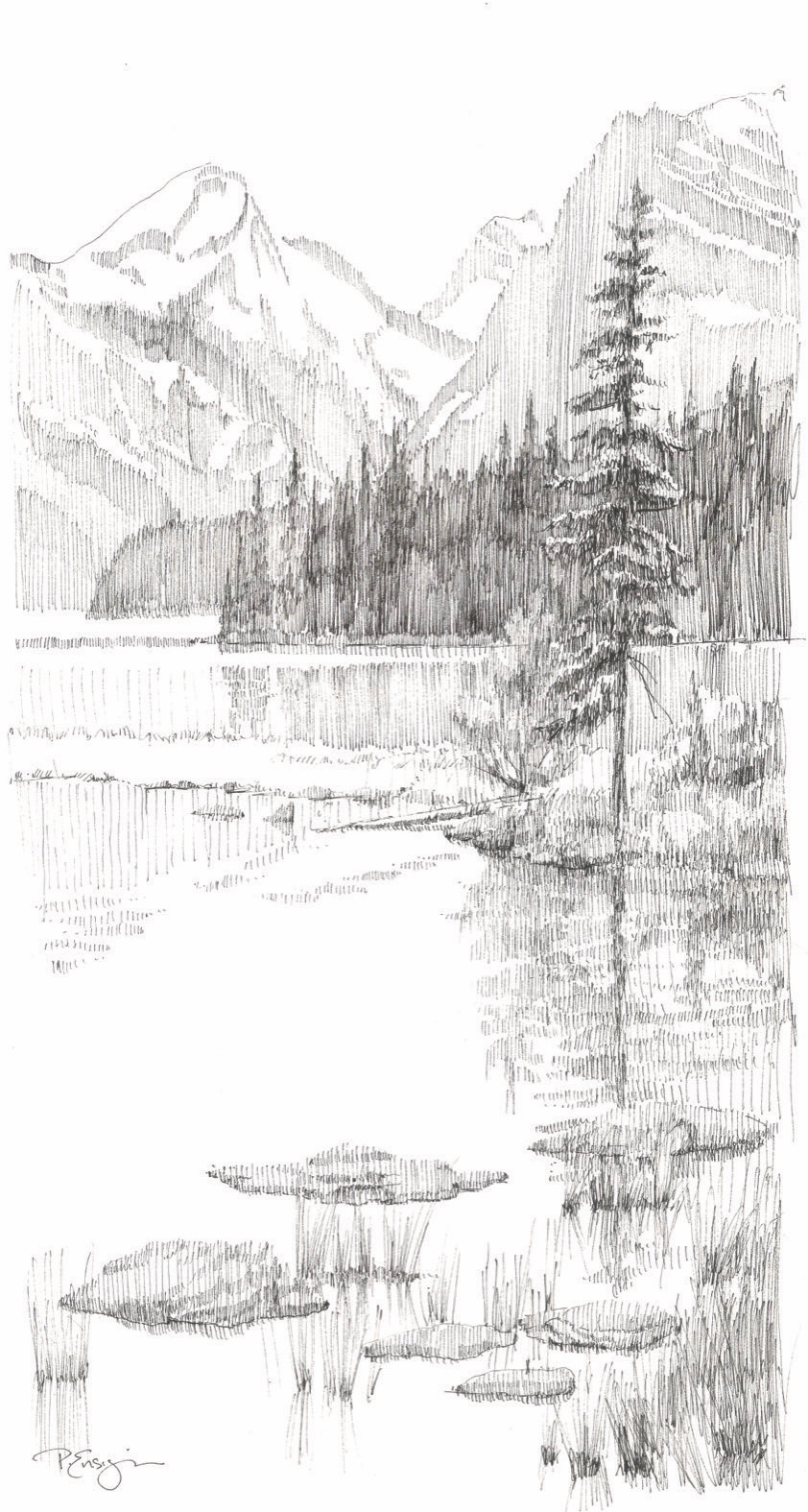
Down a short path to the water’s edge, I find a spot beneath a lodgepole pine. I sit down on my folding stool and take in the scene before me, rugged mountain peaks descending steeply, rimming Bow Lake in the Canadian Rockies. For a few moments, I simply look. It’s a powerful and grand view. While most people might take a series of photos to document the beauty of this vista, I prefer to draw.
Drawing is quiet work. It’s my favorite way to connect with the mountains. First, I study my subject carefully. I examine each ridge and crag. I study layers of rock and sand, discover the nooks and crannies and the remnants of snow. Looking intently, I seek out proportions and relationships, consider the depths and heights, and pay close attention to the movement of light and shadow. To draw effectively is to see, really see, what’s in view. But even more than seeing, drawing on location is a total experience. Sitting on this quiet bank, away from picnickers and tourists, I hear the gentle lap of water against the shore and the birds in nearby branches. I feel the soft breeze against my face and smell the damp ground at the water’s edge along with the sweet scent of pine needles. Immersing myself in my surroundings, as I begin to draw, I let my hand and my thoughts reflect the grace of the moment.
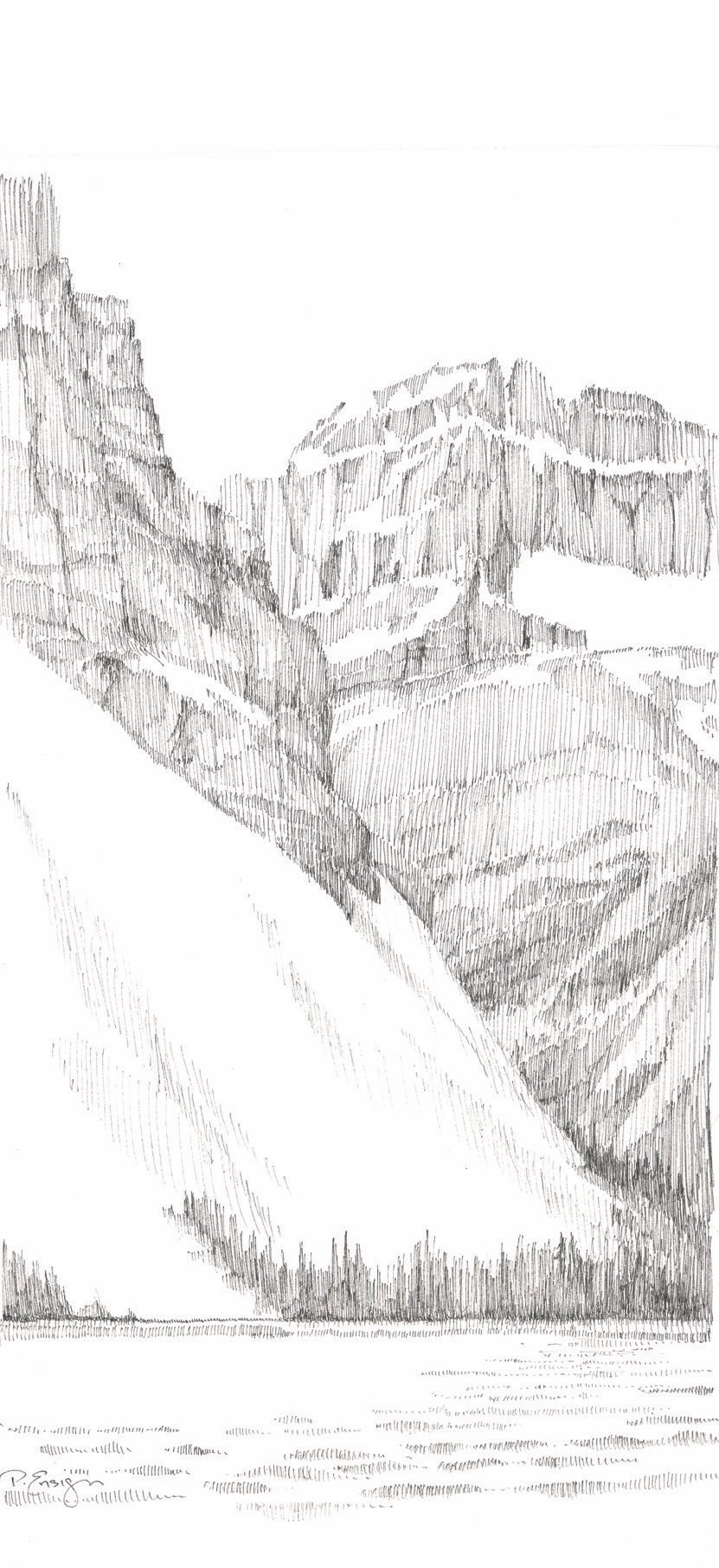
Splendor, line by line
No special talent is needed for this task. Drawing is simply putting marks on a surface to illustrate where one’s eye goes. Anyone can experience the joy of drawing a scene before them. All that’s needed is a paper, a pencil, and a little time. Today, I start with a line drawing that identifies the big shapes, the overlap of one ridge against another. Next, I look for dark and light areas—known as values. As my drawing develops, I stay focused on my subject, constantly verifying angles and details. Lastly, I take care not to overdo the minutiae and make a point to stop before too many lines spoil the intention.
Glacier-hopping
Earlier in the day, I stopped at a pullout on the Icefields Parkway with a fabulous view of Crowfoot Glacier. The parking lot was filled with cars, campers, and buses. Tourists hopped out of their vehicles, snapped a few pictures, then jumped back into their cars to speed down the road to the next viewpoint. How will they know one glacier from the next? What memories will linger long after they have left this grand landscape?
Yes, the quiet deliberation of drawing is slow and methodical. It takes time. What could be more valuable in our hurry-up world of instant everything than to open the senses and make a lasting imprint on the soul? Take just one hour to study, absorb, and look carefully at a scene, and you will never forget it. A relationship will form, a lasting memory will be etched in consciousness. I never forget a location where I have spent time sketching.
“What could be more valuable in our hurry-up world of instant everything than to open the senses and make a lasting imprint on the soul?”
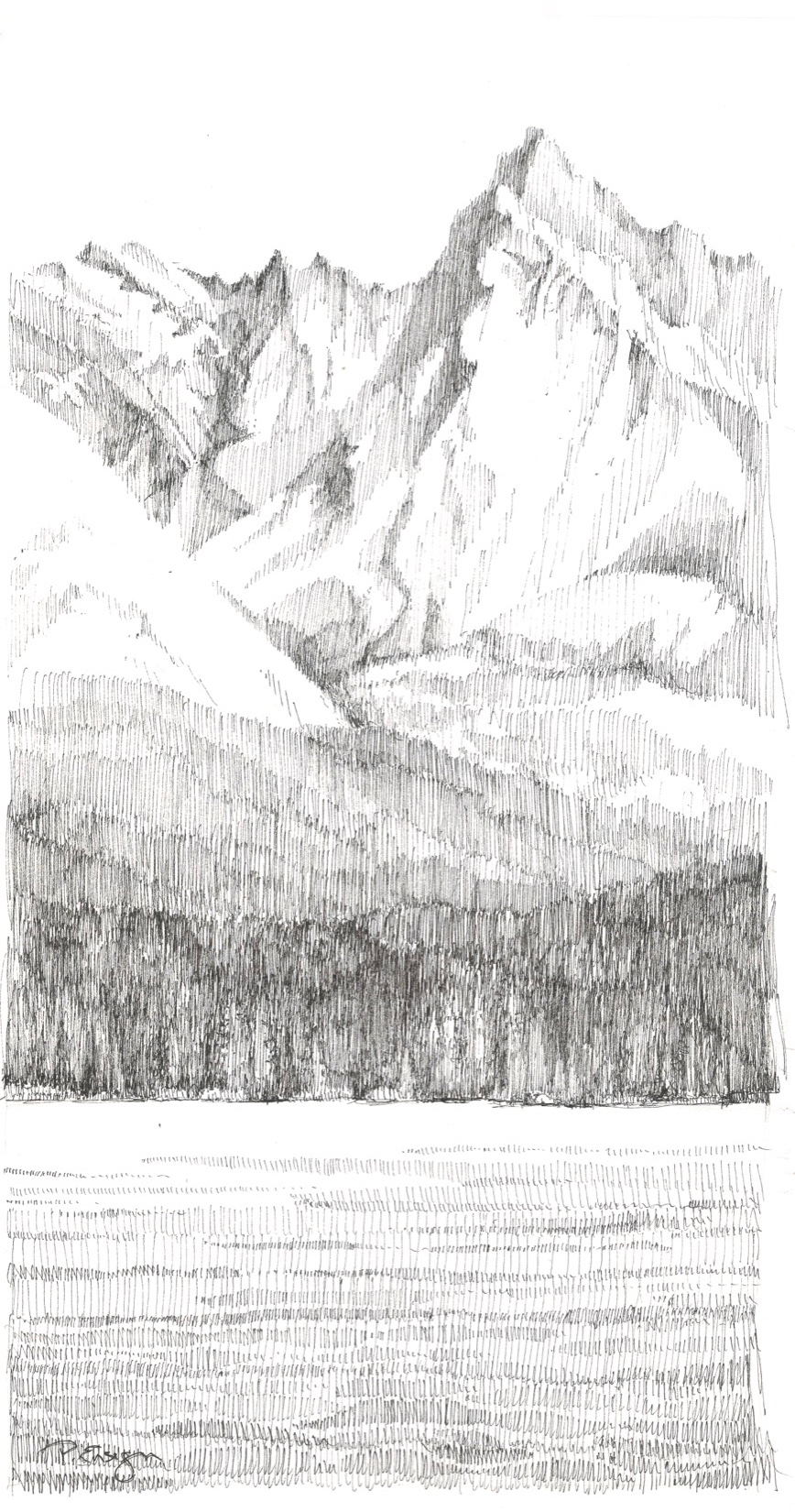
Drawing is a wonderful way to hold on to our travels and experiences. It’s never about the success or failure of the end result. It’s not about technique or individual style. It’s about the process. It’s about the time, the connection, and the quiet communion between artist and subject. △
“Drawing is a wonderful way to hold on to our travels and experiences.”
Northern Lights Optic × Alex Strohl
Canadian Northern Lights Optic collaborates with French photographer Alex Strohl
Northern Lights Optic collaborates with Madrid-born, French photographer Alex Strohl.

Orion Anthony didn’t just create a product when he launched Northern Lights Optic in 2015. He created a lifestyle.

The brand is championed by its NL-6 and acetate NL-7 glacier glasses—which were inspired by Anthony’s own exploration of British Columbia’s rugged Coast Mountains.
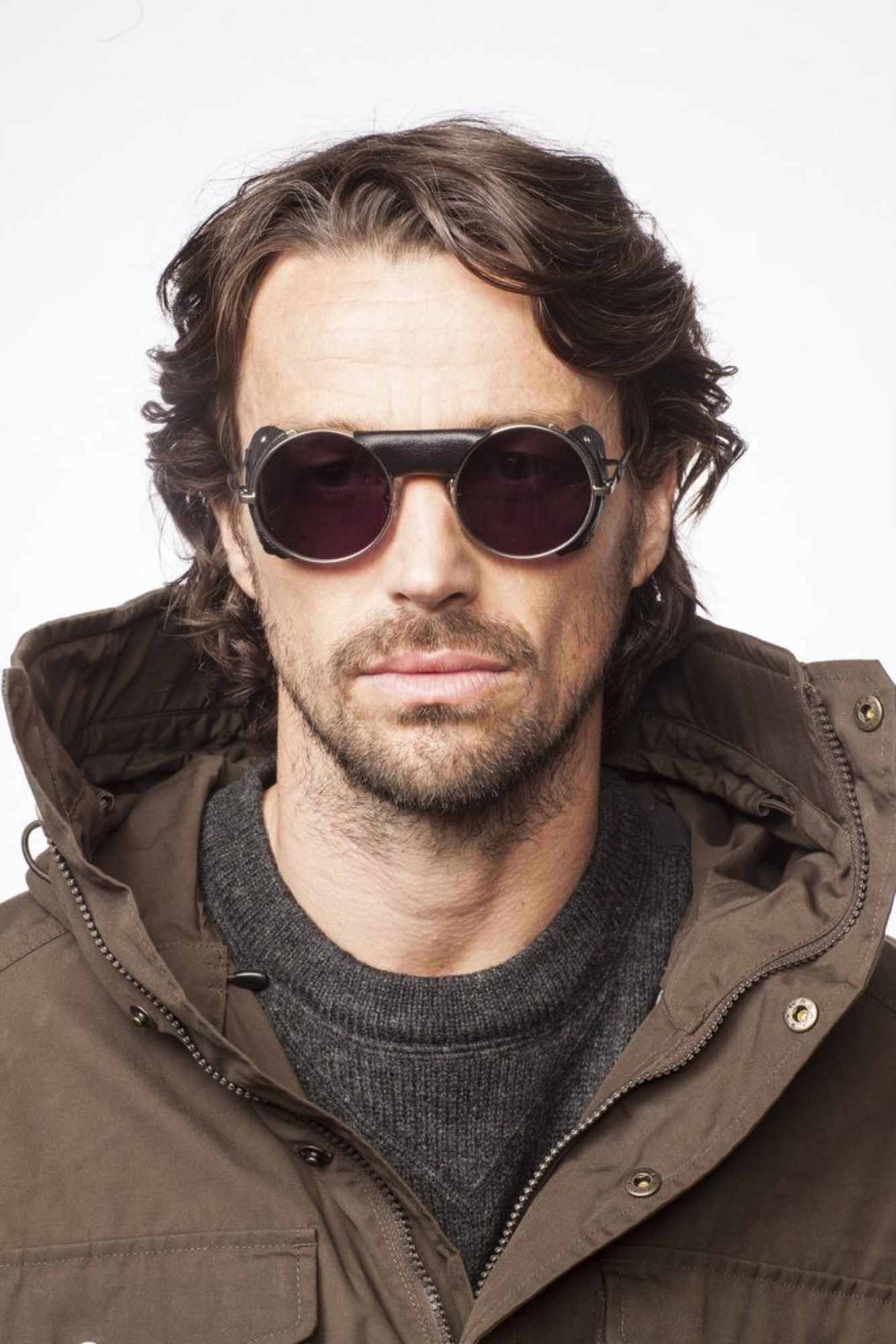
With their lightweight frames, classic circular lenses, and removable leather side shields—the optics pay tribute to the golden age of mountaineering; albeit with a modern twist. These signature models set the tone for the brand.

As an ode to the alpine ways of old, Anthony operates a vintage 1974 Spryte snowcat—a charismatic and unstoppable behemoth, which can often be found parked in the same mountains where the brand was conceived. Anthony works out of those confines (a space that expands into a classic canvas outfitter tent, complete with a wood-burning stove) during the winter—pulling inspiration directly from the elements for which Northern Lights Optic was developed.

It was there at NLO Basecamp where a new vision was born—one that would combine the talents and vision of French photographer Alex Strohl with the alpine heritage lifestyle created by Anthony through Northern Lights Optic. △
Earthbeats
"The mountains speak in an unlearned language that I love."
All I’ve known to cure myself is this— Blue and green hues pulse together while I’m lying lonely on top of pine needles. Rows and rows of trees with peeling, orangey skin align, and the symmetry feels safe. It’s nearly sundown, and the whirring noises are far away in the city. All I can hear is clarity and crickets.
Colorado is my home now.
The tree bark is my creative chair. My brown leather journal lies in my lap, but I don’t know where to start, or which questions to ask that I haven’t written down yet.
The wind touches my skin, and breath branches into all parts of my body in bold colors.
Most of my thoughts reflect the relationship we have to the earth. I’ve realized how feeble my body has always been at such a young age, filled with air and always wanting something looming overhead. The mountains move me further from feeling like I need answers. The mountains speak in an unlearned language that I love.
I close my eyes and slide farther down onto the ground.
Land cradles my body, comforting me like the child I crave to stay. Returning to the roots of existence and feeling the weight of the human body on top of damp soil is my personal soul’s responsibility. There is no other way for me to eliminate the illusion of separation between us or make sense of the circumstances in my life.
A colony of black specks marches along toward the wooden stump on my right-hand side, in a line, while I wonder how many I’ve stepped on getting to where I am now.
What is there that hasn’t been named yet?
I still have my pen in between my pointer finger and thumb, twitching. The lines in my journal, still empty.
Billowing cotton-candy clouds remain from the sunset, pummeling the sky matching my chest with an odd curvature in my heart—bottomless gratitude for a grand experience of the sky’s last dance before darkness.
I walk back down the mountain.
There’s something new nodding its head and healed within myself.
I look back up to the landscape and wonder—what is the reason for the mountain range and clouds coming together as one moving thing that contracts and expands in time with my breath? Whose heartbeat am I hearing? △
Growing Up Weese
The daughter a power couple of American modernism, artist Marcia Weese was born to design
Her parents are architect Harry Weese and pioneering design shop founder Kitty Baldwin. Born into a coterie of mid-century modern architecture and design icons—Alvar Aalto, Eero Saarinen, and Charles and Ray Eames among them—artist and interior designer Marcia Weese carries on family tradition by designing modern rugs and creating fine art prints in her studio in the Colorado mountains.
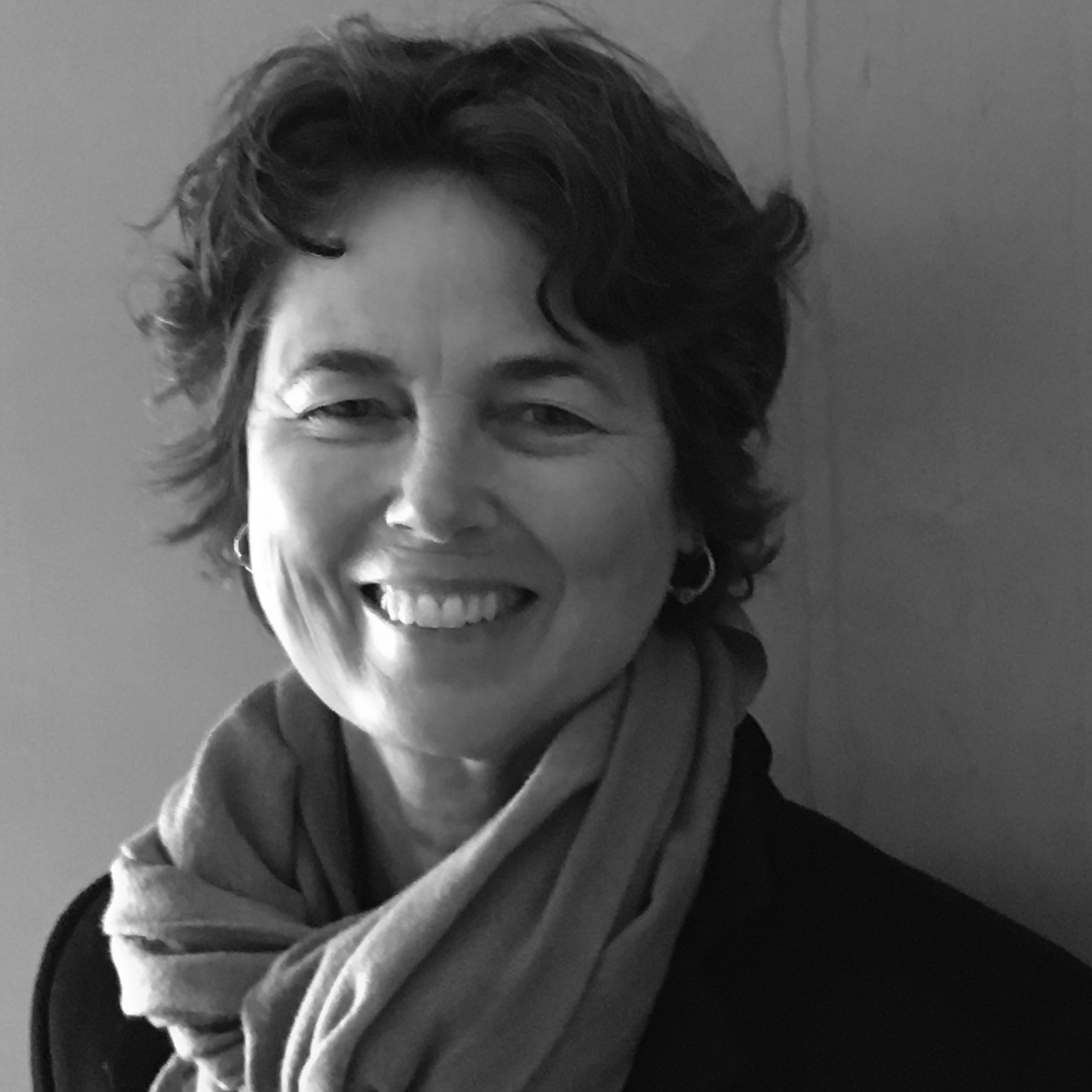
I grew up on the near north side of Chicago near the lake. The endless horizon line, burning coal, bus fumes, beach sand, roller skates, sirens, frozen waves, thunderstorms, pigeons, dandelions ... Life in the inner city was complemented by summers in the country forty miles west. Crickets, lighting bugs, oaks, jays, owls, leaves, slugs, snake grass, otters, bluegills, cabbage butterflies, algae, sumacs, worms, Queen Anne’s lace, garter snakes, rabbits, clover, flies, bullfrogs ... I was lucky to dwell in both worlds. And each winter we spent the Christmas holiday in Aspen, and I fell in love with the Rocky Mountains, too. Streams, Indian paintbrush, marmots, boulders, puffballs, eagles, gentians, boiled wool, marzipan, scree fields, cumulus clouds, ravens, purple snow shadows, ermine, the smell of wet dirt...
The natural world has always been an oasis for me—a sanctuary, a place in which to marvel and explore. I borrow imagery from natural forms, weather patterns, textures, to bring a sense of balance to my world. My content often comes from the mystery and magnificence of nature—the perfect designer.
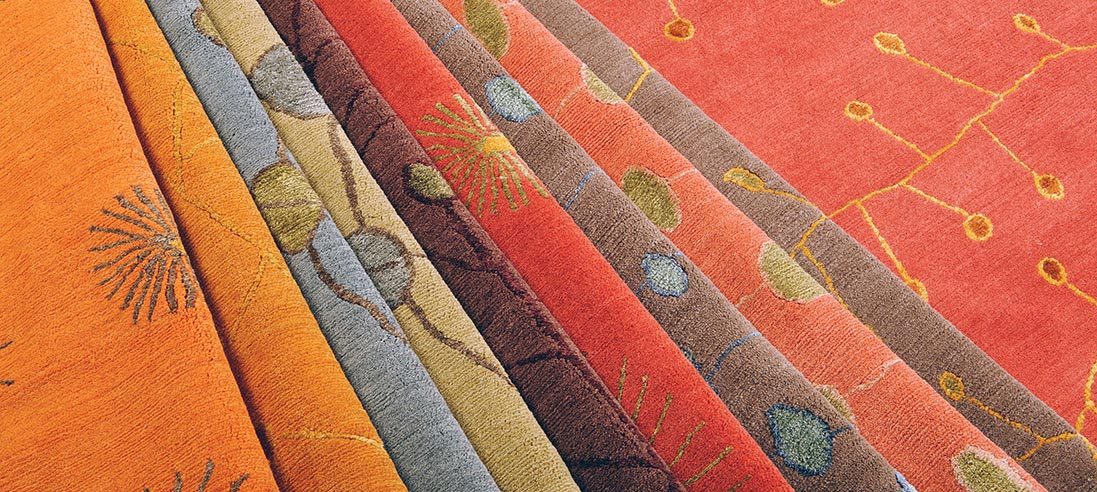
“My content often comes from the mystery and magnificence of nature—the perfect designer.”
Trained as a sculptor, I was attracted to site-specific work that often incorporated architectural elements. Printmaking was a natural antithesis to the rigor of planning and making sculpture, and as I look back, I have devoted most of my artistic life to works on paper. The ephemeral quality and the spontaneity speak to me. I am enchanted by the casual impermanence of a work on paper. And I am attracted to the minimal aesthetic, where I feel most comfortable. Less is more in my world.
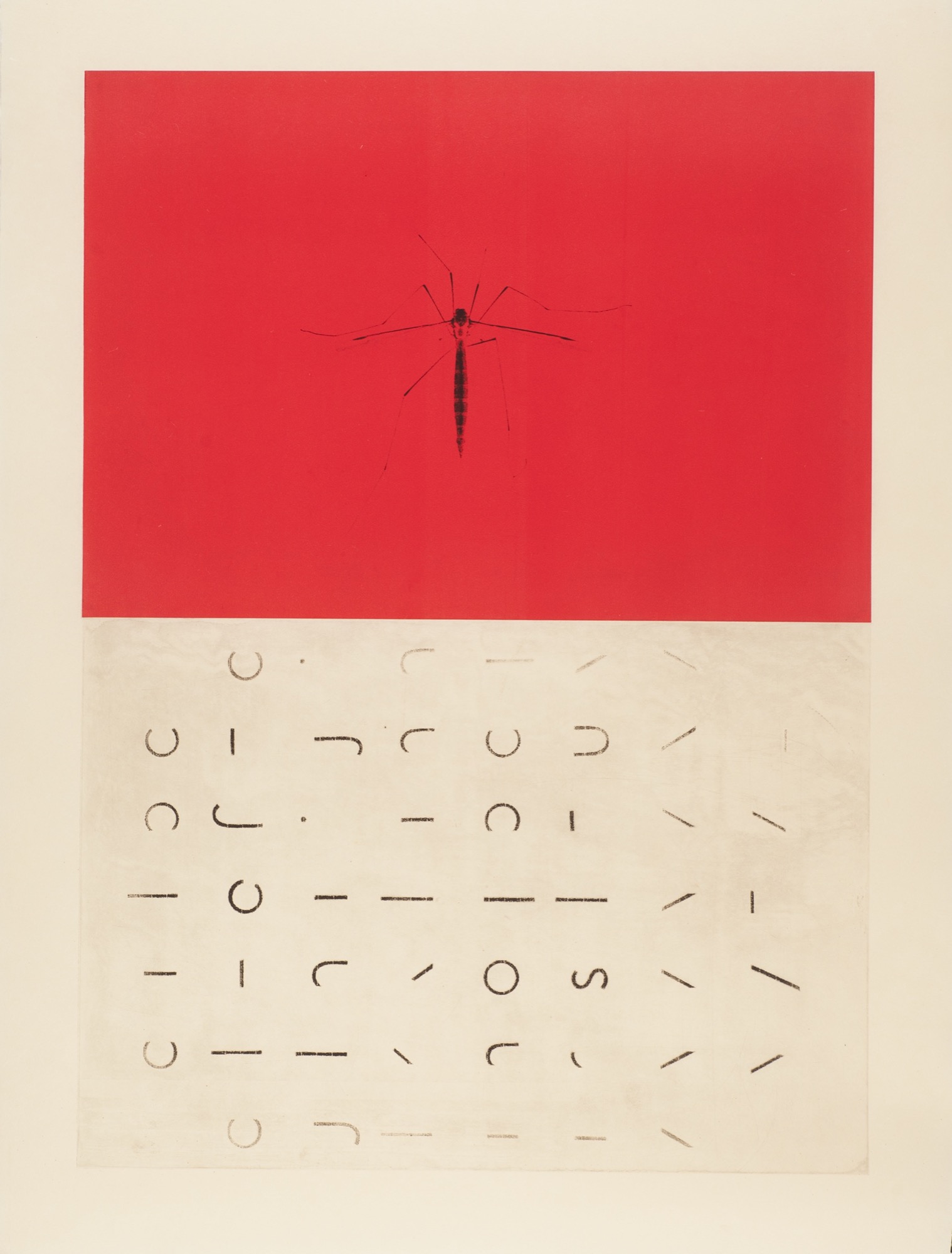
“I am enchanted by the casual impermanence of a work on paper.”
As children, we would get the nod from mother that our father was coming home and it was time to "clear the decks.” All toys would be scooped up and hidden away so he could walk into a clean and serene environment. To this day, clutter confuses me and divesting is actually something I enjoy.
I moved to New York after art school to become the famous artist that is expected of all Bennington graduates. That was a nine-year lesson in humility and how to survive amid intense turmoil and fierce competition. I learned how to discern the excellent from the mediocre in art and design. I danced, made sculpture, painted, and longed for the horizon line. I found myself walking down the streets in Manhattan looking up at the rooftops. There, the sky silhouetted another cityscape of water turrets, parapets, and fire escapes. After nine years in New York, “Manhattanism” (i.e., "New York is the only place to live”), had gotten a problematic stronghold on me, so I escaped and returned to Chicago where I could breathe again. I loved walking along the lakeshore with the density of the city to the west and open water to the east.
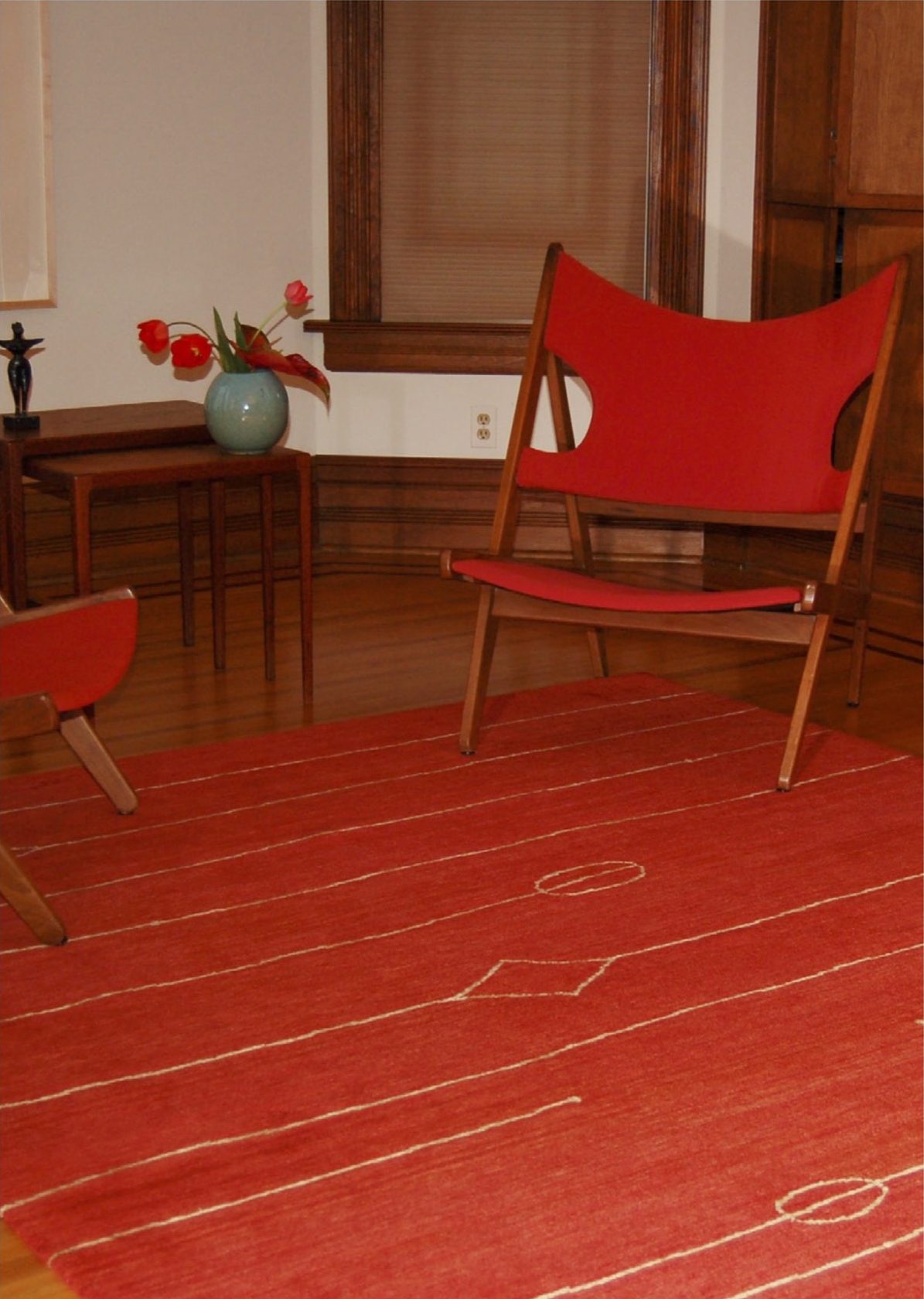
I continued making art but asked my mother to teach me the ins and outs of the interior design profession so I could more readily support myself. She taught me well, and I have worked collaboratively with architects and clients across the country over a number of decades. As an interior designer with a classical modern bent, I was always searching for the quintessential modern rug to harmonize the room. I only found beige, beige, and beige or super graphic patterns that looked like bad paintings. Serendipitously, I was introduced to a family of Tibetan sisters, who knew the rug trade and had cousins in the business in Asia. This was a happy union, and for the past fifteen years I have worked directly with Tibetans who weave rug collections to my design in Nepal. Recalling visuals of growing up on the edge of Lake Michigan and the Midwestern prairie, to hiking the crags of the Rocky Mountains, my designs stem directly from my intersections with the natural world. The patterns and color palettes present an assemblage of modern but timeless rugs.
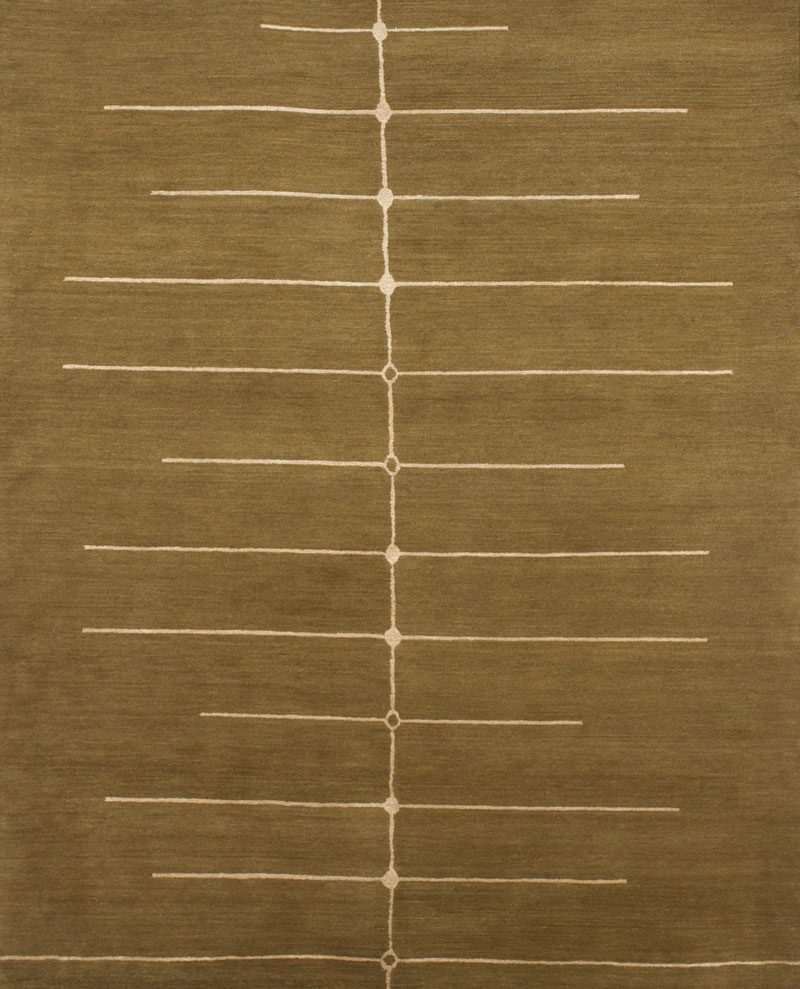
“As an interior designer with a classical modern bent, I was always searching for the quintessential modern rug to harmonize the room.”
When I eventually grew tired of Chicago’s pink skies at night and ached to see the milky way, I moved west to the Rockies.
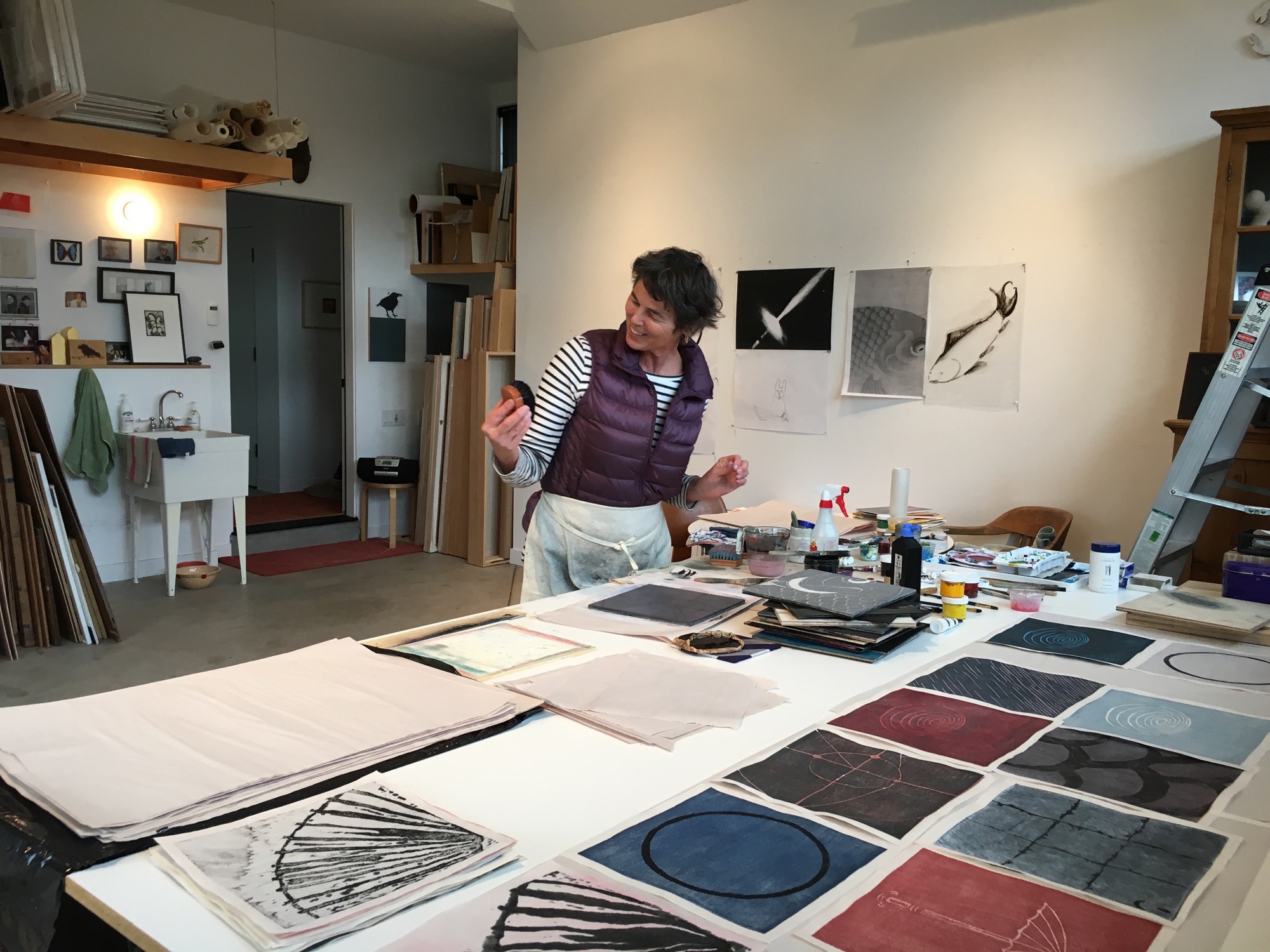
Decades have passed, and the early modernists are still in vogue. Thankfully, this is beyond fickle fashion, which warms my heart as I feel I am surrounded by old friends and family. These days, when I encounter “everyday simple,” I pause and give thanks to my parents for teaching me that less is more. And I appreciate the efforts that are being made by those who are committed to good design and who are carrying on that noble tradition.
And I am ever grateful to have been handed the baton of creativity. It is an ongoing quest, one that continues to nourish, atop the peaks and in the valleys. △
“Decades have passed, and the early modernists are still in vogue. Thankfully, this is beyond fickle fashion, which warms my heart as I feel I am surrounded by old friends and family.”
Read "How American Modernism Came to the Mountains"—a memoir by Marcia Weese as the daughter to a power couple of early American modernism. Together with fellow members of Chicago’s design elite, Harry Weese and his wife, Kitty Baldwin, flocked to Aspen for ski and summer holidays, bringing modern design and architecture to the Mountain West with them.
Peaceful Panopticon
Hikers throughout the American Northwest find solace in restored historical observation towers like the Park Butte fire lookout on Mount Baker
A hike to the Park Butte fire lookout on Mount Baker, Washington, tracks the forgotten history of the sparse observation towers that were once manned year round. Throughout the American Northwest, some are now restored as overnight shelters for solace seekers.

Walk-up getaway
It’s a torrid summer day. My husband, Andrew, and I are halfway up a trail in Mount Baker’s backyard in Washington. The heather flowers show signs of mortality, their normally bright, fuchsia-colored blossoms dried up into a brown, crusty shell. The open meadows are less vibrant than normal for this time of year.
The flowers came and are almost gone, signs pointing toward the end of summer. We are on a mission to spend the night in the historic Park Butte Lookout.
The hike is a steady uphill climb to the top, where we can see Mount Baker sprawling before us with emaciated pools of shallow water and red dirt staining the meadows in the foreground. The bright reds, oranges, and coppers are signs of mineral-rich soil and the fingerprints of the receded glacier on a slowly transforming landscape. We pass small groups of hikers, many with dogs, and come across a few larger Boy Scout and summer-camp parties. It seems the lookout towers fascinate young and old, serious thrill junkies, but also solace seekers.
“ It seems the lookout towers fascinate young and old, serious thrill junkies, but also solace seekers.”
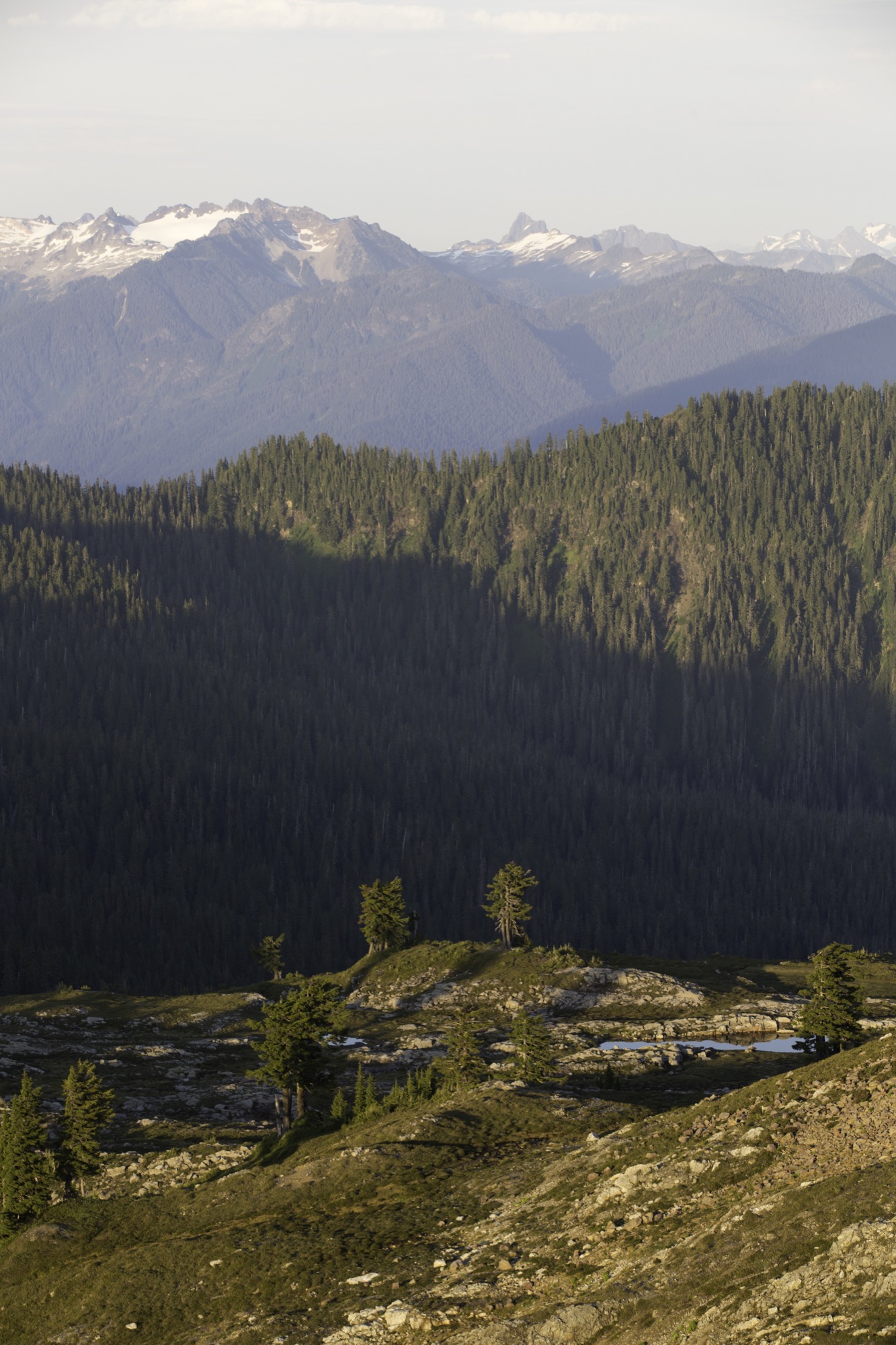
Fire lookouts — a tradition of the Northwest
Two years ago, I had no idea fire lookouts even existed. After moving to Seattle, I became obsessed with them when a friend mentioned there were numerous towers across the Northwest. Built as early detection and suppression stations for forest fires, the lookouts housed fire-lookout workers, who lived in them full-time. Usually set on the highest pinnacle, with a 360-degree view of its surroundings, the lookout tower provided a prime viewing platform with sight lines as far as the eye can see. Being an architect, I was fascinated by their iconic design, beautiful in its functionality and frugality, and a new typology for me.
"Usually set on the highest pinnacle, with a 360-degree view of its surroundings, the lookout tower provided a prime viewing platform with sight lines as far as the eye can see."
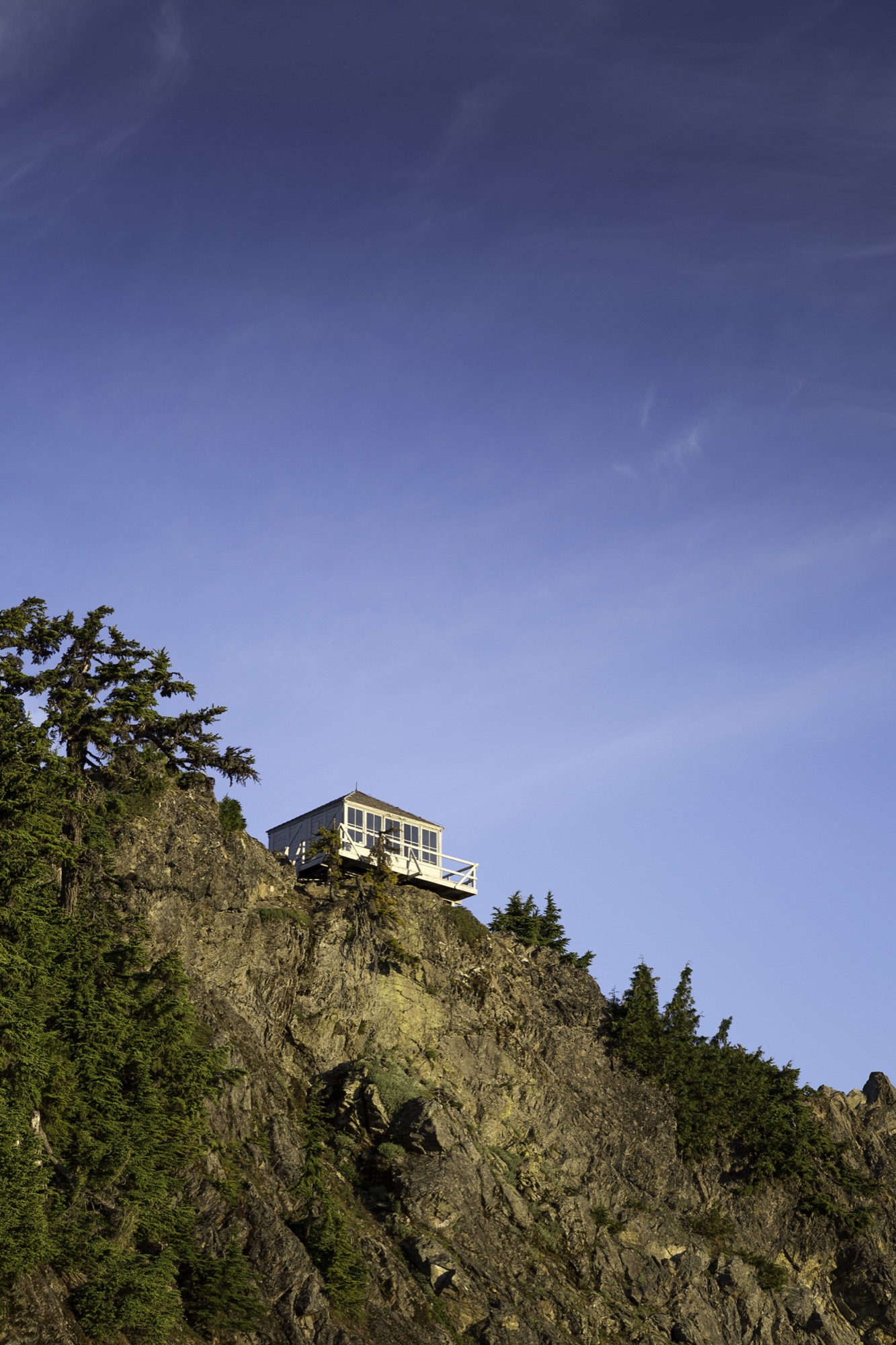
Most lookouts are made of wood and must withstand very harsh climate conditions, being located so high and exposed to the elements. So I respect the simple, straightforward design engineered for easy duplication and constructability. Thick layers of paint have been applied to the wood, protecting its wear from the weather and, hopefully, extending durability. The wooden windows no longer open, since they’ve been permanently sealed to halt the snow and rain damage, but the shutters still function with some old-fashioned elbow grease. Contrasting today’s cheap construction and design gimmicks, the towers reflect an authentic practicality that I can aspire to communicate with my architecture, and they are a humbling reminder of how we should be building our homes and cities, reclaiming a simpler time, when objects and things did not rule our lives.
"They are a humbling reminder of how we should be building our homes and cities, reclaiming a simpler time where objects and things did not rule our lives."
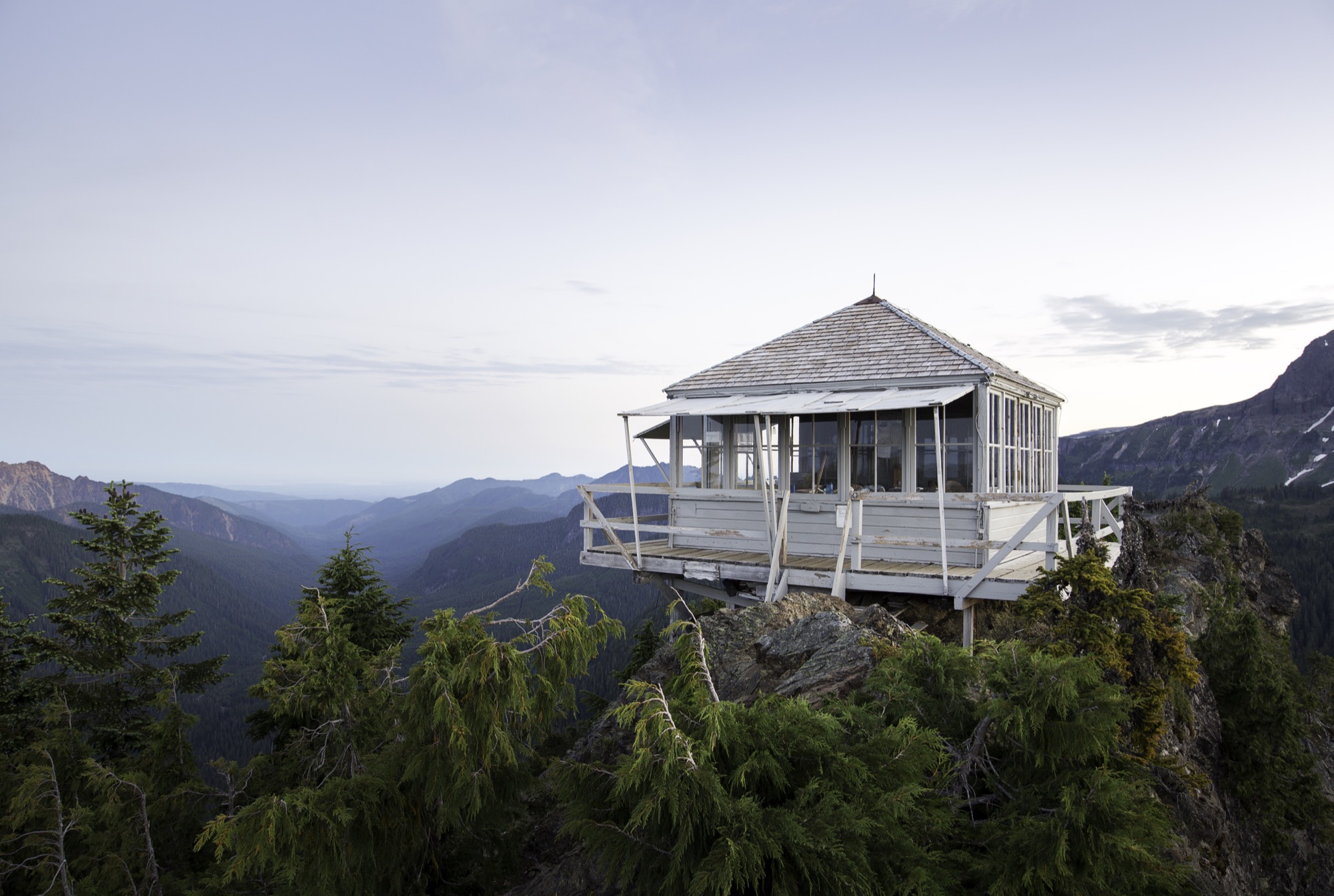
The lookout towers in the United States were first erected after the Great Fire of 1910, which burned three million acres of forest in Washington, Montana, and Idaho. The fire resulted in more regulations and protocols from the U.S. Forest Service, implemented to prevent this tragedy from happening again. The Civil Conservation Corps (CCC) constructed towers all across the nation in the decade following the Depression. During World War II, human lookouts also served as enemy aircraft spotters, especially on the West Coast. After about 1960, more advanced technology made most of the towers obsolete. Fires were no longer fought via human observation, but instead with radios, aircraft, and finally global positioning systems (GPS) with satellite technology. As a result, the lookout towers were no longer of use, and many fell into disrepair.
Park Butte Lookout
Our Park Butte Lookout was built in 1932 and was in service until 1961. Its style is known as an L-4, a square fourteen by fourteen-foot (about 4.27 by 4.27-meter) wood cab atop heavy timber posts with a cedar-shingled gable roof and operable shutters protecting a full width of ribbon windows at each side. It was the most popular live-in lookout design and one that was replicated across the Northwest. It perches majestically on the peak of boulders, like Foucault’s perfect panopticon, watching all of nature from its roost. What’s fun about lookout hikes is that the towers come into view not long after you set out on the trail up the mountain, hinting at the reward that awaits, though there is still much elevation to be gained before reaching the summit. I look upward to seek a vantage point, stealing glimpses of the perfectly square object perched and waiting for my arrival, and I know it will be well worth the sweat.
"It perches majestically on the peak of boulders, like Foucault’s perfect panopticon, watching all of nature from its roost."

Many of these lookouts are kept in working order by local volunteer groups or organizations dedicated to preserving them. Listed on the National Register of Historic Places, Park Butte Lookout is maintained by the Skagit Alpine Club, a group of mountaineers who service the exterior, occasionally clean inside, and stock it with the bare necessities for emergencies—or even forgotten matches. I appreciate the remaining lookouts even more for this reason; they have that element of home to them because knowledgeable caretakers conserve their special historical and spiritual ambience. It’s an inspiration to us all to treat other people and things with just as much tender care.

Once ascended, my usual concerns are a memory: The bustling urban life I live in Seattle is far away, and I slip into nature’s meditative rhythm. There are no deadlines, only observations and reflections. There are no agendas, only submitting to the mountain’s siren song. Layers are peeled back, noise stops, nonessentials dissipate. Time becomes the passing sky, clouds, and breeze, not numbers on a clock or phone. I replenish myself with water and food not because it is noon, but because I listened to the thirst and to hunger rumbling in my stomach. The question of what to do next is replaced with almost no thoughts at all as I easily succumb to nature’s nonexistent curriculum.
“Once ascended, my usual concerns are a memory: The bustling urban life I live in Seattle is far away, and I slip into nature's meditative rhythm.”
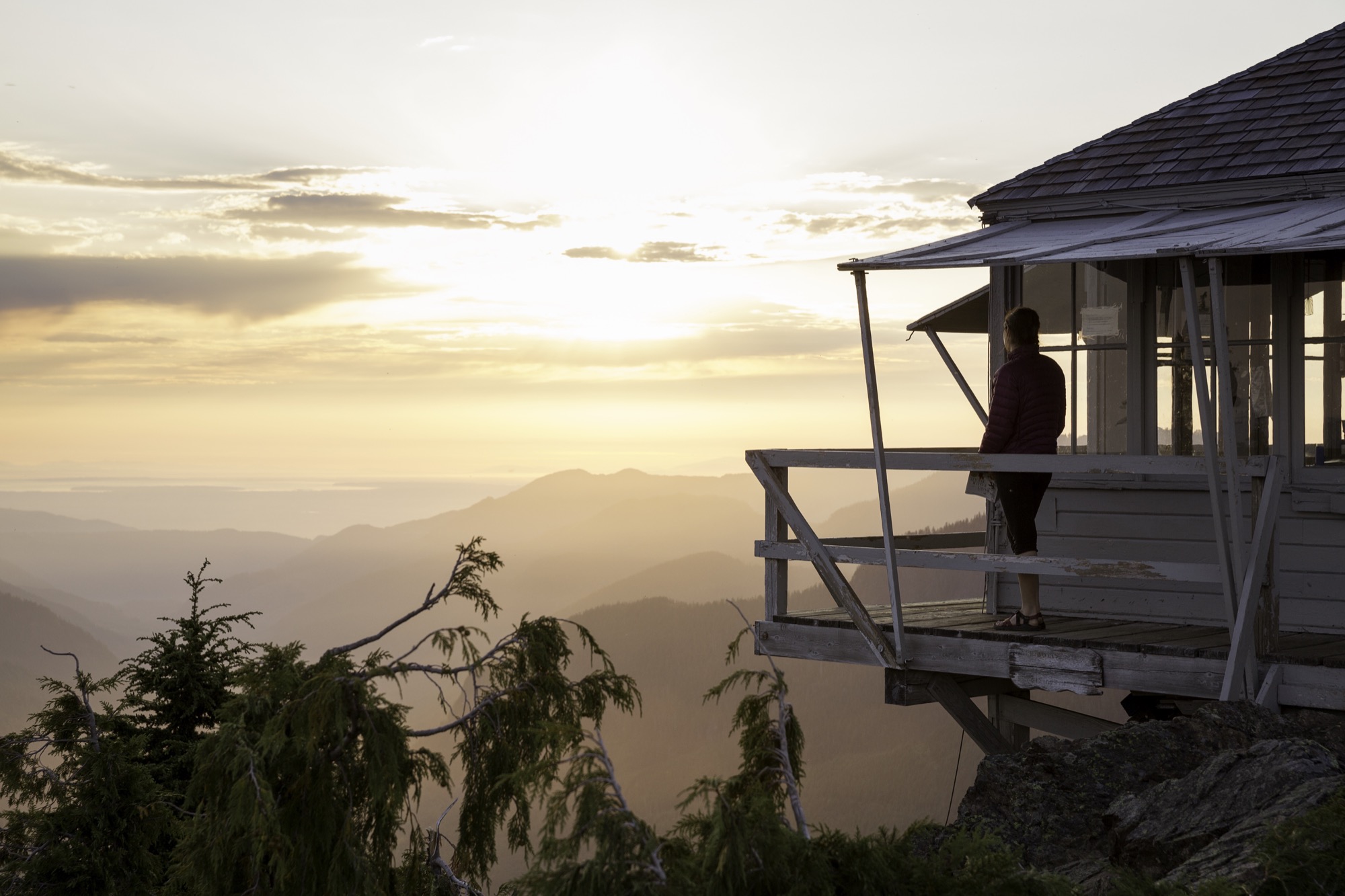
These lookout towers are remote. However, some have cell phone reception at the top, which makes for interesting observations as we relax on the deck reading, writing, and reflecting. Hikers come up huffing and puffing because the last stretch of the trail is perhaps the hardest. The gravel trail gives way to larger boulders that require a scramble, and the climb is steeper than the average grade on most of the hike. The lookout is perched on these boulders, lifted with stubby wooden posts so it oats slightly above. After taking in the awe-inspiring view, many visitors to the lookout immediately pull out their cell phone and snap photos; a few even have selfie sticks to capture their group with the stunning mountain backdrop.
Our most pleasant encounter happens in the hottest hour of the afternoon. We had just come back from a mountain lake swim and climbed back up to the porch. It takes us a while to notice someone sitting at the shaded side of the balcony. We manage to sneak around the corner to find a man with binoculars, no cell phone or selfie stick. We begin talking, and before long we exchange contact information and look forward to meeting again. It amazes me what happens when we put our cell phones away and embrace the existence around us. Beautiful and inspiring moments are always presented to us. Will we stop and pay attention or move too fast and miss them? Perched on a fire lookout, you see more than the view. △
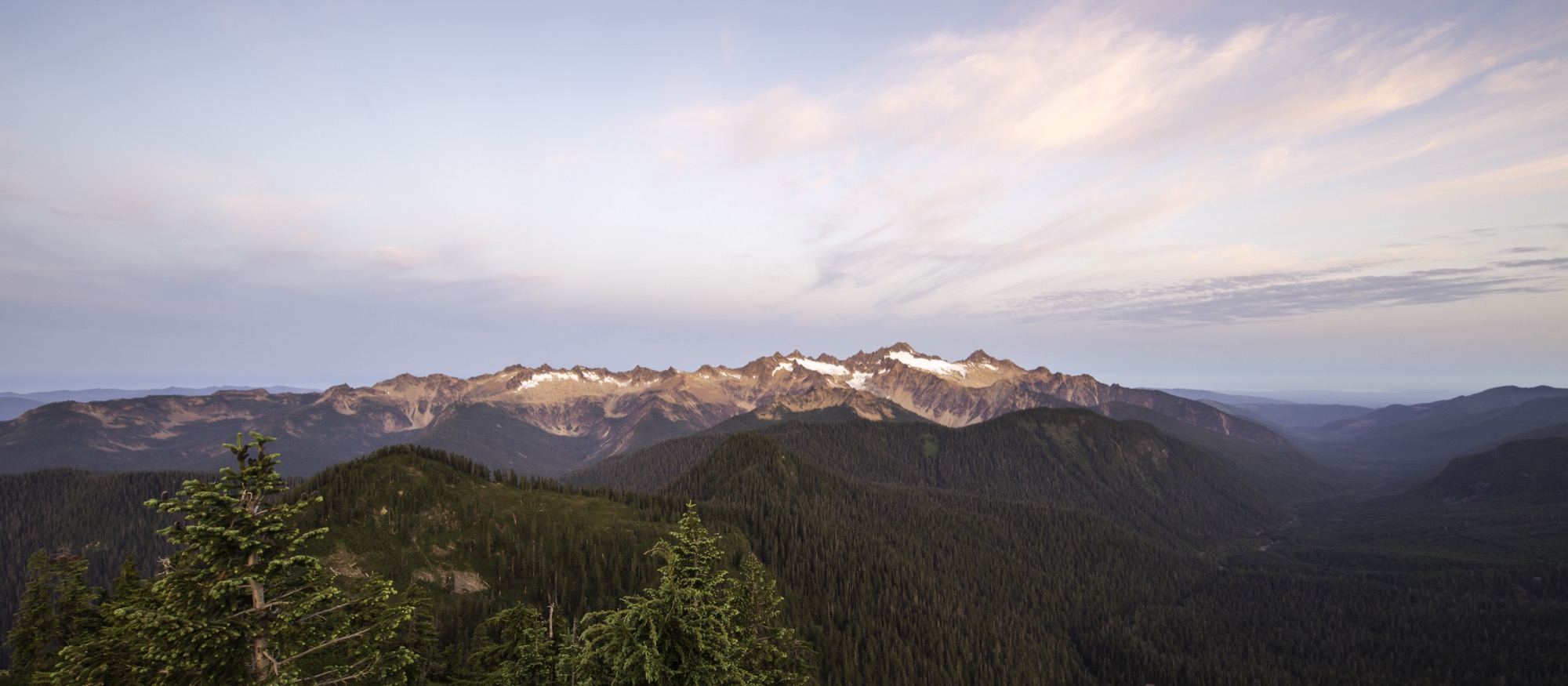
Retreat and Return
An essay on escaping to anywhere but here, getting messy in nature, and connecting to what is real
If you stand in the middle of an empty Downing Street, around 30th Avenue, in Denver and look straight ahead, you will see a light-rail station jettisoned beside the street and some low level buildings that litter the periphery as a long stretch of asphalt leads the eye to the horizon. Miles away, two grayish, 1980s skyscrapers frame a view of the foothills. You can make out the patches of snow and tree lines along the ridge and grasp for them. This glimpse of the mountains through the frame of the city, surrounded by civilization and commodity, creates the desire to run from the banal into the still, quiet reserves of solitude. Civilization and solitude, city and wilderness, the balance and distinctions can often be so tenuous and vague. Where does one start and one begin?
Filter of escape
When I think of escape, it’s about an ethereal atmosphere: where the light sending shafts across your face is just right, words fall with a satisfying poignancy; it’s very poetic and meaningful. It is the sort of moment where you imagine that you could probably write a play, or a memoir. It is often meticulously calculated and captured on social media. It’s this dream I sometimes have: his face clear amongst a hazy backdrop, and there is a golden glowing that moves warmly across his lips as they move. It is late summertime. I do not know what he is saying, but I feel the meaning of the words. There is a way that our photographs make things much softer, much more beautiful, much more inhabitable than they really are.
“It is the sort of moment where you imagine that you could probably write a play, or a memoir.”
How do we value the observing and interacting within landscapes without resulting in the dreamy nostalgia of escapism? What is the danger of over-romanticizing our nature, our hideaways?
Historically, “escape” denoted fleeing towards liberty, freed from an irksome or controlling reality. It was only in the 1930s that escape began to be used etymologically as a method for retreating from reality. To “escape” became “escapism”: the tendency to seek distraction and relief from unpleasant realities, especially by seeking entertainment or engaging in fantasy, modeled by escapist literature that provided a refuge for those harried by the changes in modernism.
Similarly, in the 1800s, the noun “hideaway” denoted a person running away or a fugitive but shifted in the 1900s to primarily be used to describe a place of concealment or retreat.
Modern escapism
Research on “escapism” began in the 40s and 50s, a post-war mentality in which escape was a necessity, and researchers examined the connections between media consumption and life satisfaction. In 1996, Peter Vorderer described escapism as the desire most people have, in unsatisfying circumstances, to flee reality in a cognitive, physical, or emotional way.
Geographer-cum-philosopher Yi-Fu Tuan’s book Escapism is a dazzling exploration on cultural manifestations of this desire. In Neolithic times, our ancestors may have built shelters and plated crops to escape nature’s harshness, but now we escape the urban for the suburban lawns and parks. Tuan speaks of Disneyland, glass-towers, ivory towers, and malls—all tenuous monuments to the dream, away from the uncertainties of life, often imposed by a nature we still cannot yet control. At what point, Tuan argues, is escape inescapable? How is escapism hardwired into our human makeup? If to escape reality is to create a malleable nature, then what aspect of culture is not escape?
“If to escape reality is to create a malleable nature, then what aspect of culture is not escape?”
Away, away
“The grass is greener on the other side,” runs the clichéd motto. I often search for discounted plane tickets the night before a large deadline or after a particularly nasty fight. I could move somewhere else; I could start over. I would not need to worry about these things if I ran. A sudden urge to sprint until I’m panting, until all the air has dispelled from my chest, to use my body, overcomes me. It reminds me of an Avett Brothers refrain:
The weight of lies will bring you down And follow you to every town 'cause Nothing happens here that doesn't happen there So, when you run make sure you run To something and not away from 'cause Lies don't need an aeroplane to chase you anywhere
Plainly, People want to “get away,” and I fully understand the desire. Ecotourism has exploded. We put rails along the edges of cliffs and commercialize Yosemite, all the while promoting an Airbnb in the middle of nowhere. Advertisements show us quiet beaches, toes in the sand, and shimmering waters devoid of noise and other tourists. We would be much better people, we are sure, if it were not for the distractions. A friend once told me, “Iceland is the one place on earth that looks the least like earth.” Beautiful, stark waterfalls and geysers against a backdrop of light yellows and green, an unearthly landscape, an utterly foreign nature. A place that seems to scream clarity from its minimalist landscapes. We escape to a place least like Earth; we want to stay there and soak in this alien feeling forever. We want to easily escape to places that are difficult to reach.
The desire to escape to simple and easy landscapes stems from a “milk and honey” mentality of the Promised Land that came to fruition in the literary genre of the pastoral. We’ve all heard the lines in our high school English courses from Marvell:
“Come lay with me and be my love and we will all the pleasures prove.”
Pastoral paradise
Scholars have condemned the pastoral for its flights of fancy and its tendency to oversimplify complex societal situations for a romanticized and reductionist nature. A genre predicated upon escapism, the pastoral offered a comfortable landscape to run to when society grew too weary or complex. Centered upon the notion of “Arcadia,” there was a landscape and realm of nature that remained untouched, primitive, and pure from the ravages of civilization where utopian harmony and balance reigned supreme. The shepherd sang of a “Garden,” a lost Edenic form of existence in nature. Raymond Williams, a key pastoral critic, argued that the pastoral rests upon the notion that the industrialized city has removed us from the peaceful existence we once had in the country. For him, this is “myth functioning as memory,” remembering a false past that our ideals have created, where the present looks back toward a decline of simple life in the past. We have all heard it, thought it, felt it: “Life was so much simpler back then.”
We want to escape back to the simple, when we were carefree and life had no troubles. When all we had to do during the day was watch a river lazily float by us. My friend and I plan trips to Moab, plan trips to Zion, plan trips to Yosemite. We think of the tiny homes we could purchase, the vans we could remodel, and slowly tweak our plans to escape from the grid.
“We think of the tiny homes we could purchase, the vans we could remodel, and slowly tweak our plans to escape from the grid.”
Which world is blasé?
At its core, escapism hinges on the question of the “real.” What is reality and what is fantasy? The critics tell us to blur the lines and mix them up; virtual reality asserts that these questions are passé.
But, rather, might they be blasé? Blasé came into linguistic fashion 1913 to denote when the ability to tell the distinction between particular things is lost. A haziness of atmosphere descends and mixes it all up. I often find that my escapist fantasies are dreamy: edges are blurry and details are vague, what I am reaching for isn’t concrete but an atmosphere, a feeling, that my memory has recreated for me. I am always confusing myself with my real life and the life I live in my head, the lives I could live and the person that I could be. It is easy to escape to the mind space where I have it all together; where I am writing my next work from the porch of my secluded mountain cabin.
“It is easy to escape to the mind space where I have it all together; where I am writing my next work from the porch of my secluded mountain cabin.”
Experiencing within context
When scientists speak of one’s ability to perceive, they talk about “enframing.” As we view a site or landscape, we are compelled to frame and categorize it. Our site defines our reality—we may know that other things exist because we have seen them before, but, at every moment, we are only capable of perceiving and understanding what the widths of our eyes allow us. Yi-Fu Tuan argues that modern men and women, living amongst aspiration and pretension, suffer from Milan Kundera’s “unbearable lightness of being.” Life up so high doesn’t seem so real. We want something material, something to come into contact with.
“Life up so high doesn’t seem so real.”
For Tuan, the “real” is the impact, sensation, and felt pressure of nature: callouses on feet at the end of a long, arduous hike; sweat lining our brows; dirt under our finger nails. The real exerts a feeling of “aliveness,” where habits are shaken up. It’s to come close to the ground. The Greek origin of the word humiliation stems from hummus and in its literal terminology meant “to come close to the earth,” mirroring the story of Anteaus, a Herculean type man whose strength only persisted as long as he was touching the ground. Bring Anteaus to the heights and he was helpless.
If, as Tuan argues, human restlessness looks for relief in geographical mobility, our desire to move closer to nature is a natural one. We search to escape to a place of lucidity that comes from simplification. For Tuan, if an experience brings clarity rather than just simplification, one can arguably say that they have encountered the real. This is the difference between appreciating moments, atmospheres, and landscapes, and escaping from the pressures to a “blank page.” What one needs is not escapism, but rather a middle landscape that stays in touch with the raw reality of the natural world that remembers the connection to civilization as well. False divides have never helped us. When we retreat to nature, we are never going to blank spaces, but places with a palpable, experiential essence—ecosystems with existence long before we imposed our imagination upon theses places.
What moves escapism toward the notion of retreat and return? Action, honest encounters with nature. Escapism rarely translates into action. It is usually a state of mind we hide in. Retreat, however, requires movement and action, relying on a balance between wilderness and civilization. When we only dream of escapism or see landscapes like National Parks as the locale of our get-aways, we create an abstraction that makes it easy to exploit other landscapes.
“Retreat, however, requires movement and action, relying on a balance between wilderness and civilization.”
Return with clarification
Thoreau may have secluded himself to retreat to Walden, but he returned with an answer, a prophecy for a complex and frazzled society, teetering on the uncertain brink of industrialism. George Puttenham, one of the first pastoral theorists, did not see the form as merely recording the escape to a more rustic form of life, but as a serious guise for societal discourse. It had a didactic duty to return with clarification for modern life. It was about bringing back balance between the wild and the human.
What we need is a return to dirt, to the messy physicality of nature experiences. Not the coziness that we seek to escape to, but places of deep meaning that we return to for the quiet balance we desire. As William Cronnon argues about wilderness theory: If we imagine that our true “home” is a wilderness we can escape to, we often forgive ourselves for exploiting the land that we actually live on. Instead, a quality of “wildness” might be instilled in all the landscapes we inhabit, not just the sublime we want to run away to. Escapism, in this way, can be a dangerous nostalgia: despising the real in favor for the imagined. Escapism operates off a dissatisfaction and false dualism that can actually subtly encourage environmental exploitation: instead of seeing nature, wildness, as something that continually surrounds us, we escape to “wild” places, while leaving the urban to continue to die. We forget to gently tend our gardens, when the goal of our relationship with landscape is the task of making a fulfilling home within it.
“What we need is a return to dirt, to the messy physicality of nature experiences.”
“If we imagine that our true ‘home’ is a wilderness we can escape to, we often forgive ourselves for exploiting the land that we actually live on.”
It’s the difference between a dreamy pasture and the dirt. In the dirt, there is a beauty that has forgiven its sense of idealism. It is not about the ease, though this can be a benefit. While the reconstruction of the event can be nostalgic, often the journey in the wilderness is not: one sweats, scrapes their knees, huddles under a tree from a thunderstorm, or comes into contact with an animal much larger and more powerful. What we reclaim in a retreat and return is real action and the sense of our bodies—the sense of touch, of reconnecting with the environs that surround us. The retreat into nature can remind us to be consciously aware that we are not separate from nature but a part of and subject to it. We are wrapped up, intertwined within it—where then can we escape from ourselves?
“In the dirt, there is a beauty that has forgiven its sense of idealism.”
Wilderness therapy
There are countless organizations today that rely on this sort of wilderness therapy—bringing people out into nature as an opportunity to disconnect from the virtual and remember the real. While not all of us are ready to live in a van or fend for ourselves in the wild, retreating and returning gives us the pros of a connection with landscape without falling back onto distraction, selfishness, and a misconstruction of nature. Retreating away for solace, meditation, and a clean slate, remembering the environment and mountains that sustain us, and returning to tend for others in a harried society is the beauty of the soil.
In Norway, Arne Naess, the father of the Deep Ecology movement, pioneered the “Friluftsliv” movement—a conviction that an outdoor life can provide an antidote to the stresses of urban conditions. It’s not about an either/or but a both/and. A hideaway, a landscape, an escape that connects you to the “real” can never be escapism. It is an experience that connects you to materiality, a grounding that comes closer to the earth, an eye that recognizes beauty in the particular.
So here’s to the weekend warrior, the backcountry skier, the Chautauqua walker, and the Rocky Mountain National Park junky. Here’s to the gardener, the climber-conservationist, and the trail runner. Here’s to the people who aren’t afraid to shove their hands in the dirt, who aren’t desperate for a chance to run away but longing for a connection to the still, quiet moments of reality. Here’s to the mountains that are always beckoning us to come closer, get humiliated, and find contentment. △
Dirt
Antaeus reveled in the materiality
of his strength
which became humiliation
like its root hummus
like to come close
to the level of the ridge
and feel the terra.
To know that aspens
are rhizomes,
interconnected,
roots woven through soil,
nothing left out.
To hideaway from
the dirt is to
drift toward the sun,
risking a heavy pitch
downward, mutually assured destruction.
I am trying to get close to the reality of taxonomy,
the soil, the naming, the root.
Here is best I can say,
far from despair:
From dirt we came
and dirt we shall return.
Poem by Haley Littleton / Illustration by Ben O'Brien
The Nomad Behind the Lens
A conversation with photographer Garrett King, @shortstache on Instagram
Garrett King, a Colorado transplant from Texas, goes by the moniker “@shortstache” on Instagram. The name originates from a company he and a friend started after college, and while the company is no longer a part of King’s life, the tongue-in-cheek name remains and leads 119,000 followers to King’s photography.
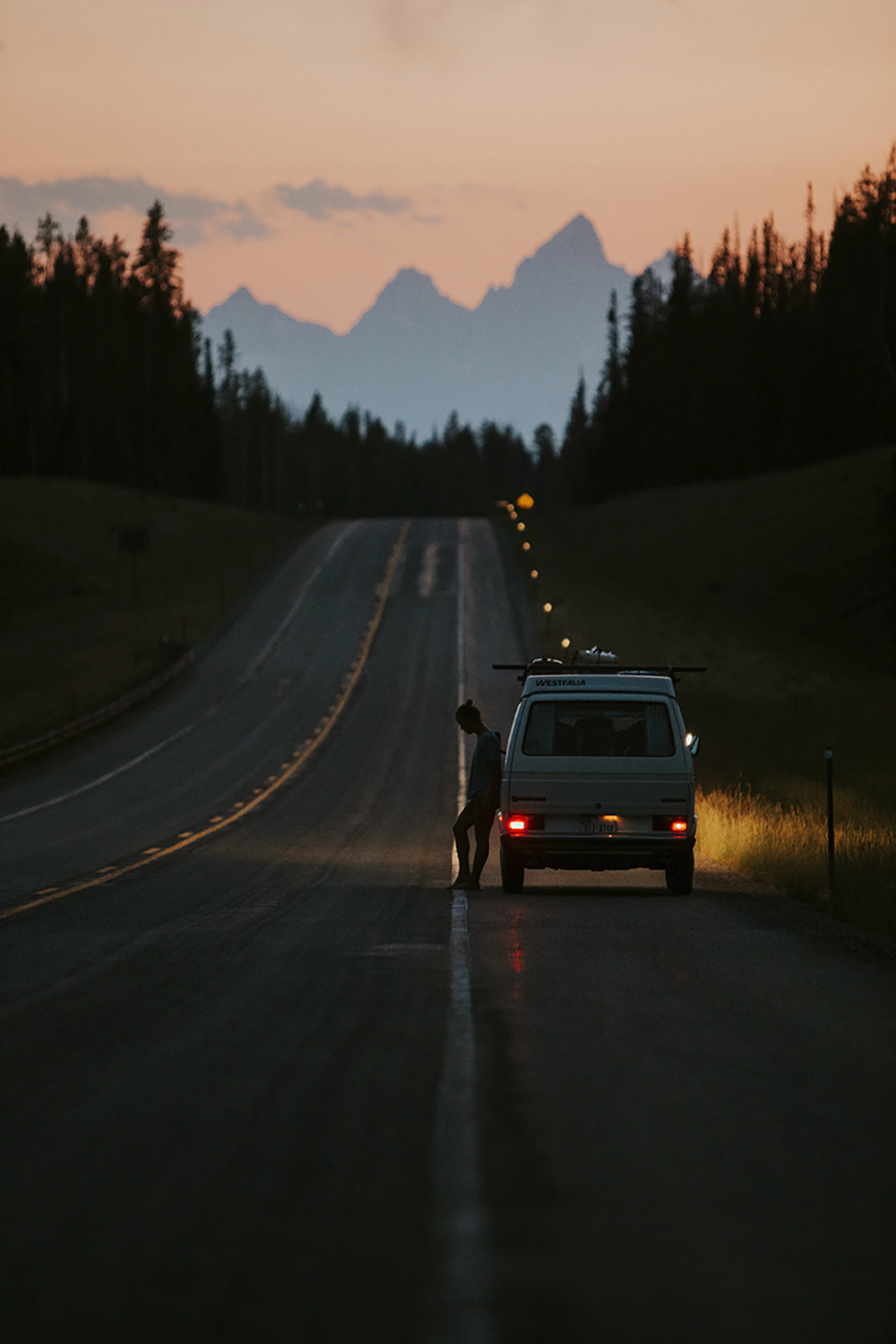
King, more comfortable with anonymity than self-promotion or marketing, worked his way from a “weekend warrior” to a full-time photographer and shares his thoughts on the longevity of the field, as well as the community he’s creating through his work in collaboration with others. King’s work emphasizes perspective and playfulness of natural landscapes, while not sacrificing composition and contrast.
A conversation with Garrett King
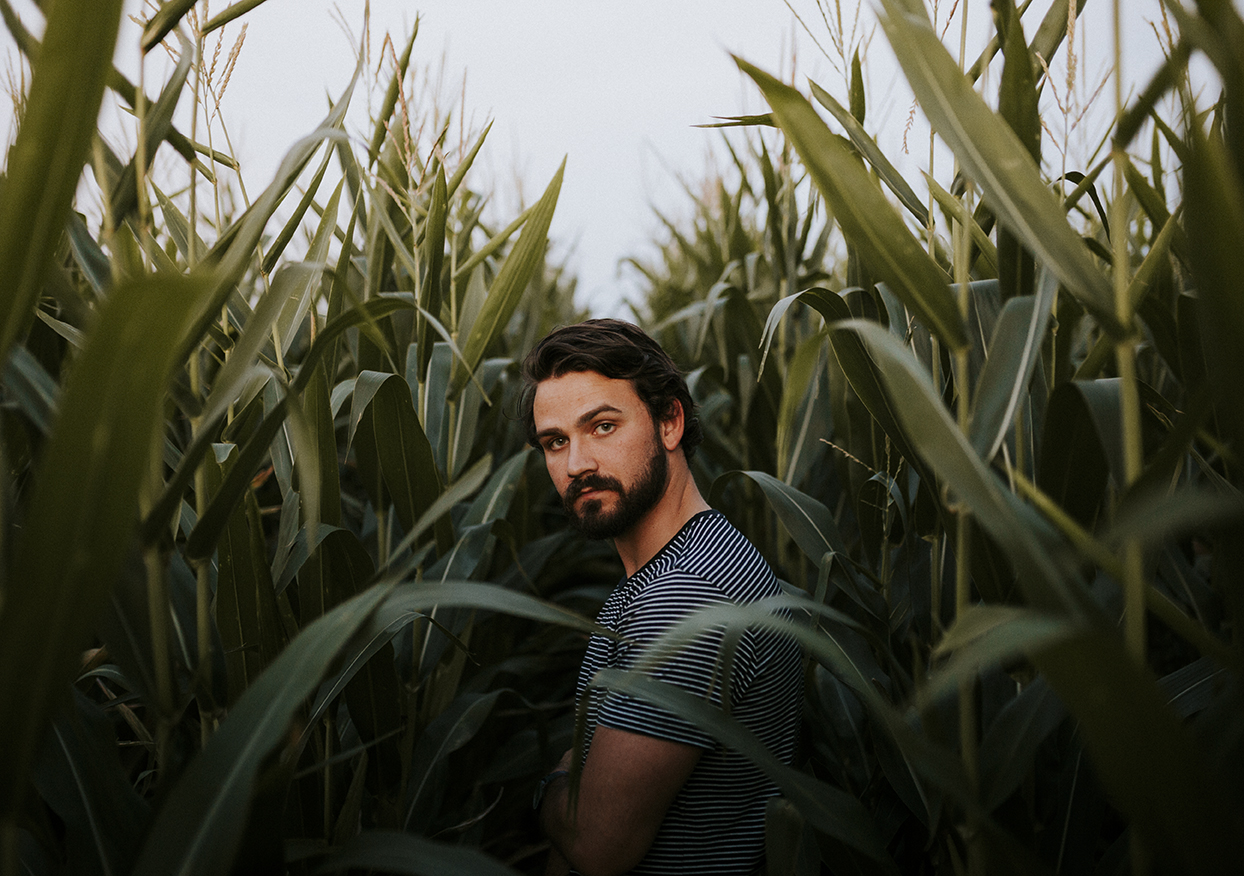
What got you into photography?
I was born in Amarillo, Texas, and studied design and fine arts at Texas Tech and West Texas A&M. I mainly focused on videography, though, not photography. My friend and I started a company called “Shortstache” where we made short films about people in Texas who inspired us, like the oldest letter-presser in the state and a woman who made bicycles out of recycled materials.
Hence the name: @shortstache?
Right. At the time, we were competing in a mustache-growing contest, and it kind of stuck. Now it’s just me.
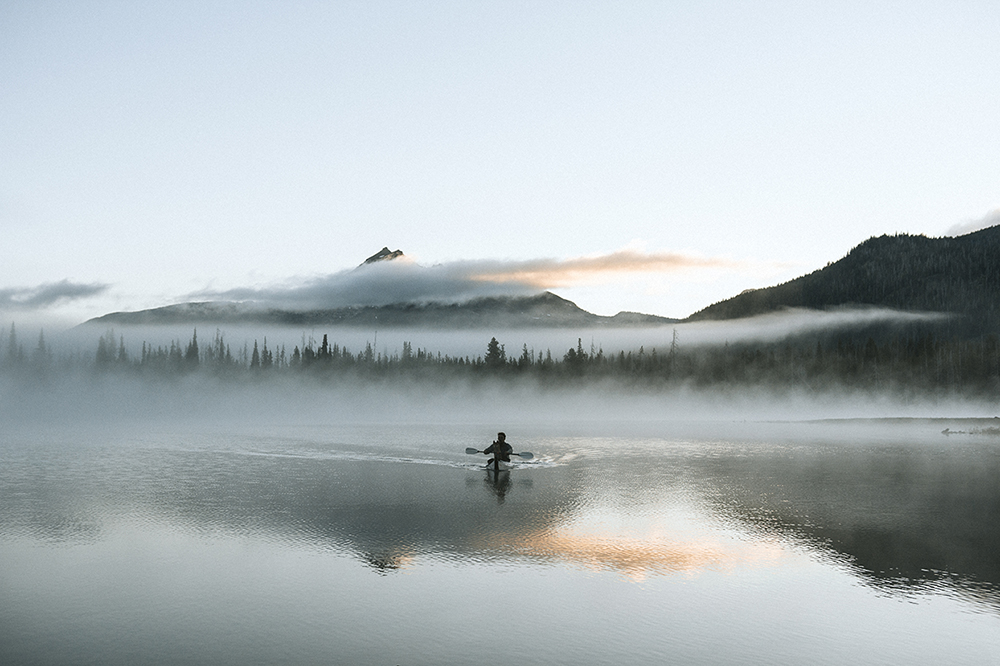
And then Instagram came along…
I joined Instagram about two years ago and never had the intention of using it as a platform to turn my photography into my career. I never intended to “make a name” for myself on Instagram. I would just respond back to everyone. They would respond; I would respond. It just kept going.
So it became a platform for community for you?
Exactly. I’ve met some of my best friends in the world through Instagram because we connected over a common goal or interest. I love that I can travel almost anywhere in the world and link up with someone through Instagram. It’s great because you can ask a question about a new place and get feedback almost immediately. Once, a few friends and I went to Portland, Oregon, and I posted that we didn’t have a car but would love to go around the city. Quickly, I got a message from a guy saying that he could be there in an hour, and I’ve been close friends with him ever since.
"I love that I can travel almost anywhere in the world and link up with someone through Instagram."
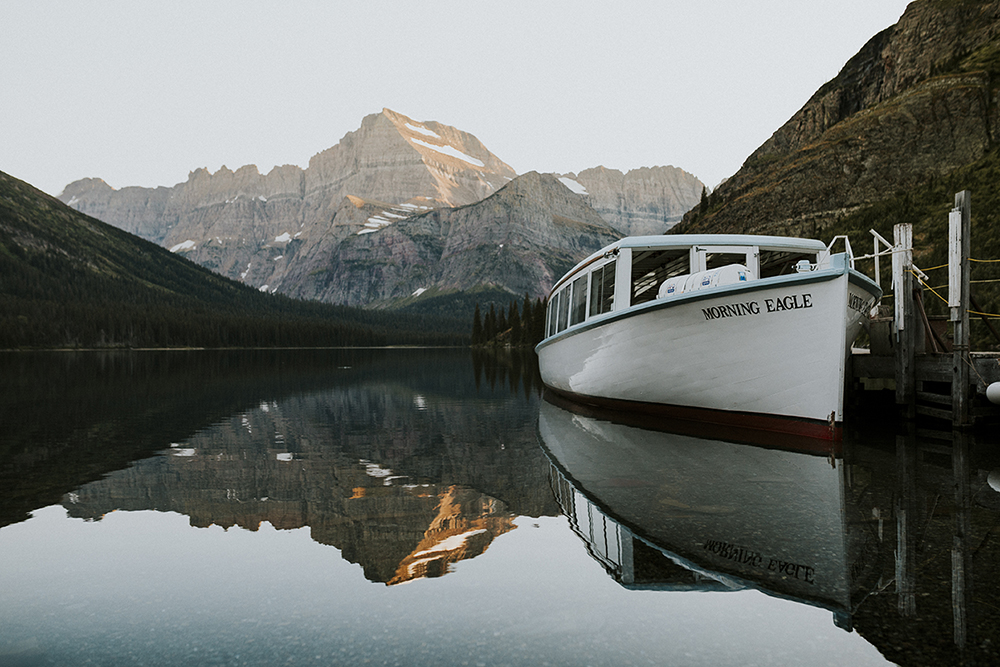
Instagram has this great way of building up trust between people, making the world smaller and traveling much easier. I’ve found a mutual respect pervades the community, and it’s been fun to see that come into fruition in my life and work.
"Instagram has this great way of building up trust between people, making the world smaller and traveling much easier."
How did you find yourself transitioning from videography and design to photography?
I’ve spent most of my working life designing. Photography was always an offshoot, a side hobby. It was interesting how things shifted: When I moved to Colorado two years ago, I quickly became a weekend warrior. I was leaving work at 5 p.m. on a Friday, driving until 2 a.m., camping and exploring and shooting wherever I could. I started posting my photos from these trips on Instagram, and, I guess, it sparked people’s interest.
Why camping and natural spaces in particular and not classic city shots or portraits?
I could only do the city thing for so long. You can get nightlife and restaurants in a lot of places, but, when I moved to Colorado, the mountains were in my backyard, and there was just so much to see and do. I found myself always escaping to the mountains to build stories or create memories. I will say, though, some of the photographers I respect the most are those who can be in the mountains, city, or middle of nowhere and produce beautiful and engaging work.
"Some of the photographers I respect the most are those who can be in the mountains, city, or middle of nowhere and produce beautiful and engaging work."
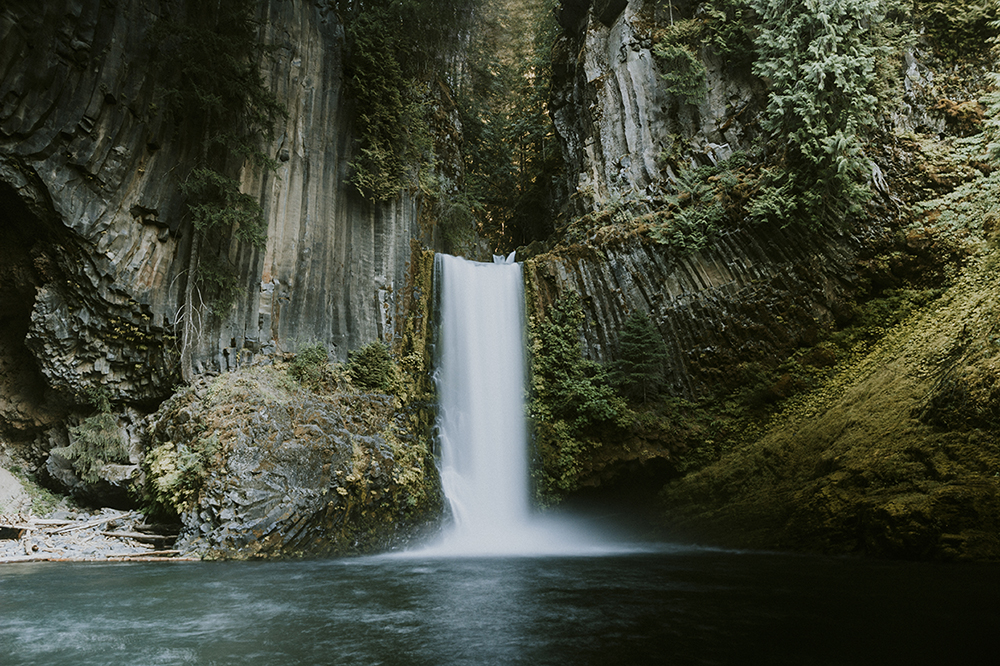
What has your focus been in developing your work?
For me, it’s always been about storytelling. You could consider me an adventure photographer, but the goal is always about capturing a moment. I want to continually get to the bare essentials and strip things down to the core. When I look at the bigger picture, I hope my work is inspiring and propelling me to see more and do more, while growing as a person. It is an extension of myself, after all. As it gets better, I want to get better. People are always asking me about what gear I use but it’s not really about gear; it’s about a developed style and whether you’re producing consistent and engaging work. I think you have to have the eyes and passion to discover good shots and you have to practice, practice, practice.
"It’s always been about storytelling."
Now that you’re a full time photographer, there must be a necessary separation between Instagram and work for you…
There definitely has to be. Anyone who asks me about their photography and how to make it big on the platform, I try to remind them that it’s a launching pad and business tool. I’ve had companies see my work through Instagram and invite me to shoot for them. It always goes back to the work. Instagram will die at some point, as much as I love it, and you can’t let it make or break your creativity. If you’re good and passionate, people will find you.
"Instagram will die at some point, as much as I love it, and you can’t let it make or break your creativity."
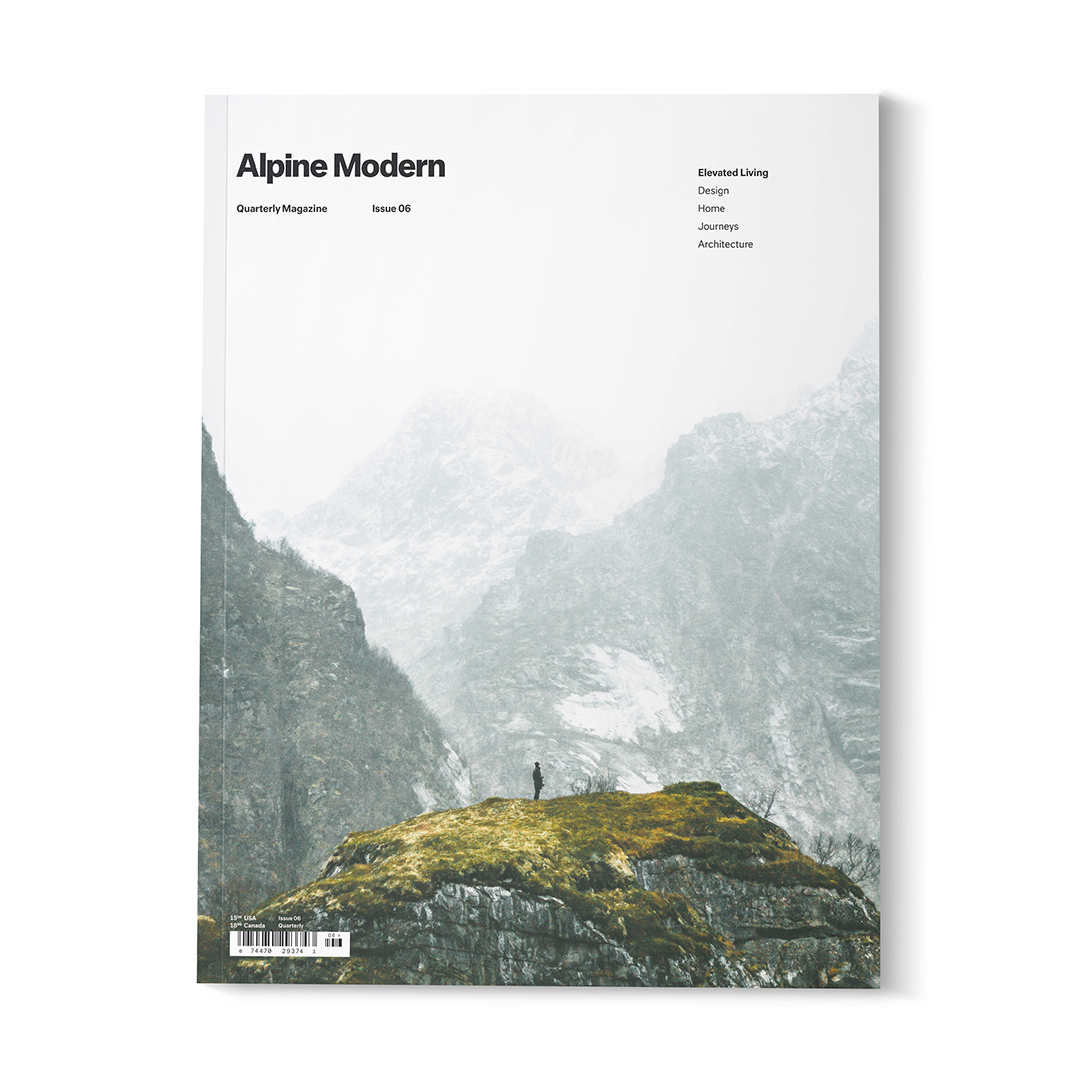
Any current projects?
Something I’ve been really excited about is a collaborative effort with other photographers I know, called @collectivenomads. We wanted to take creative people in different mediums and build each other up.
What do you want people to think when they stumble across your photography?
I hope they ultimately see that I’m a real person. Yeah, I want to have a consistent and built-up style, but I want people to see who I am, as a person who does the same stuff as them, and engage.
I never want my work to be dependent on a platform. I’m all about being on Instagram for the right reason: to know people and build relationships. It was never about free gear or “blowing up.” The dream was always to make my lifestyle I love into a paid job. I love design and want to continue to do that while also exploring my work as a photographer. △

Nature Is Architecture without Enclosure
Why Alpine Modern has a brief cameo in ml Robles' upcoming book "Under the Influence of Architecture"
From my upcoming book "Under the Influence of Architecture"...
So much of architecture is about replacing what exits. We remove buildings or parts of them, we scrape off land. We like new.
Then we get immensely attached to the buildings that have weathered throughout centuries. Think, Venice or historic buildings like Monticello or Westminster Cathedral. And we want to preserve them, not change a thing.
This is the discussion design enters into when we begin the critical examination of a project’s circumstances: What actually exists? Although the direction that is uncovered in the partí—the basic concept of an architectural design—holds both the physical and ephemeral, it is innumerate. Design, therefore, is a process of uncovering and illuminating the exact constructs necessary to meet the partí. And this is where the eye of the beholders produces the endless solutions to any given design problem. (Put another way, this is also where all hell breaks loose, for who is to say when a partí has been met?)
If architecture begins at the beginning of everything, and it is guided forth by secrets that cannot be told within the mind alone but are revealed by light, then it would seem that in order to uncover and illuminate the exact constructs necessary, design would have to continuously trace back to origin, to tapping the feeling that instantaneously shoots into the infinite.
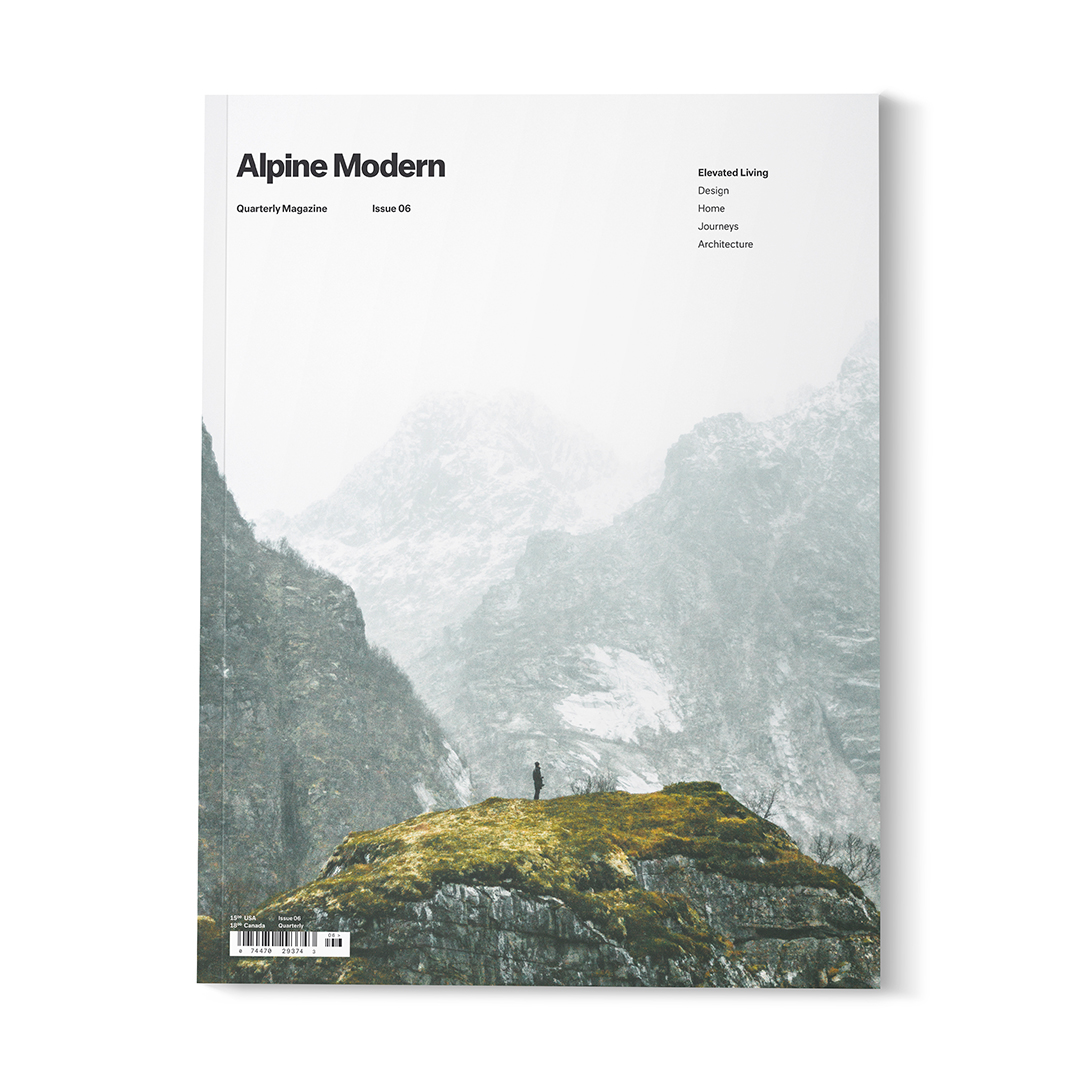
There is an image on the farewell cover of Alpine Modern’s print magazine. It is an image that fades from a near-white mountain backdrop to a dark silhouette of a lone person in profile standing on a mossy green capped rock. I stare at that cover often because it describes everything architecture is, without a shred of enclosure. △
"I stare at that cover often because it describes everything architecture is, without a shred of enclosure."
When not practicing architecture or creating singular built environments at her research-based firm Studio Points in Boulder, Colorado, ml Robles explores the source of architecture in her writings. She is currently writing her book "Under the Influence of Architecture."
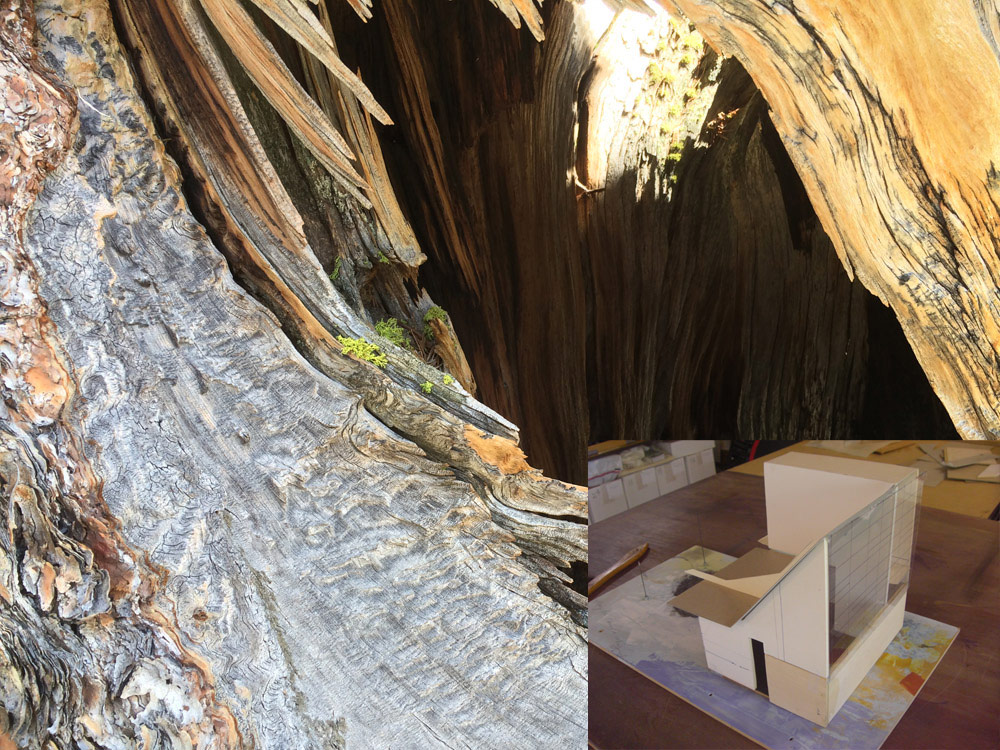
The Woolly Wonderland of Donna Wilson
A conversation with the London-based creator of cashmere creatures and other wild things.
Donna Wilson's imagination runs wild. In her studio in East London, the textile and product designer, who has been named "Designer of the Year" at Elle Decoration’s British Design Awards, creates cuddly cashmere creatures and designer objects from richly textured sofas and plush cushions to hip-cute bowls and plates to the planet's most darling socks.
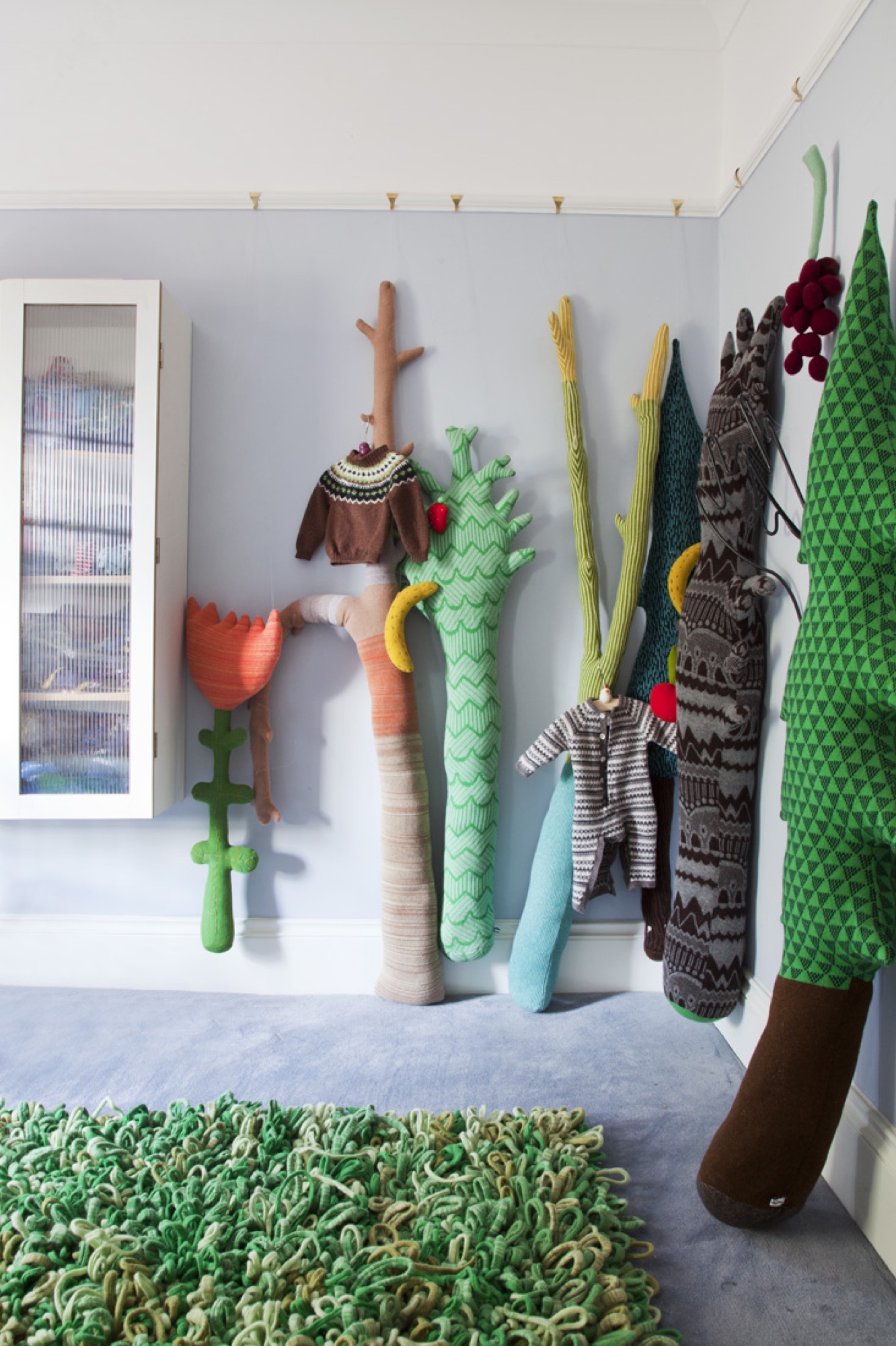
The artist and craftswoman's continuous outpour of creativity began very early in her life, on her parents’ farm in the beautiful countryside of Aberdeenshire, Scotland. Encouraged and inspired by her grandmother, young Donna soon found her happy place in an old hen-house that became a cabin of crafts.
Her unbounded passion for making things with her hands and her love for art and design impelled Wilson to attend the Royal College of Art in London. It was there she knitted her first creatures and began selling them to local shops in the city.

These days, she greatly enjoys turning a 1860 cottage into a home for her little boys, Eli and Logie, and her partner, Jon. And she is busy designing a new collection of woolly woodland creatures, furniture, homewares, clothing, and so many more designer goods she now sells all over the world, with help from her team of craftspeople.
A conversation with Donna Wilson
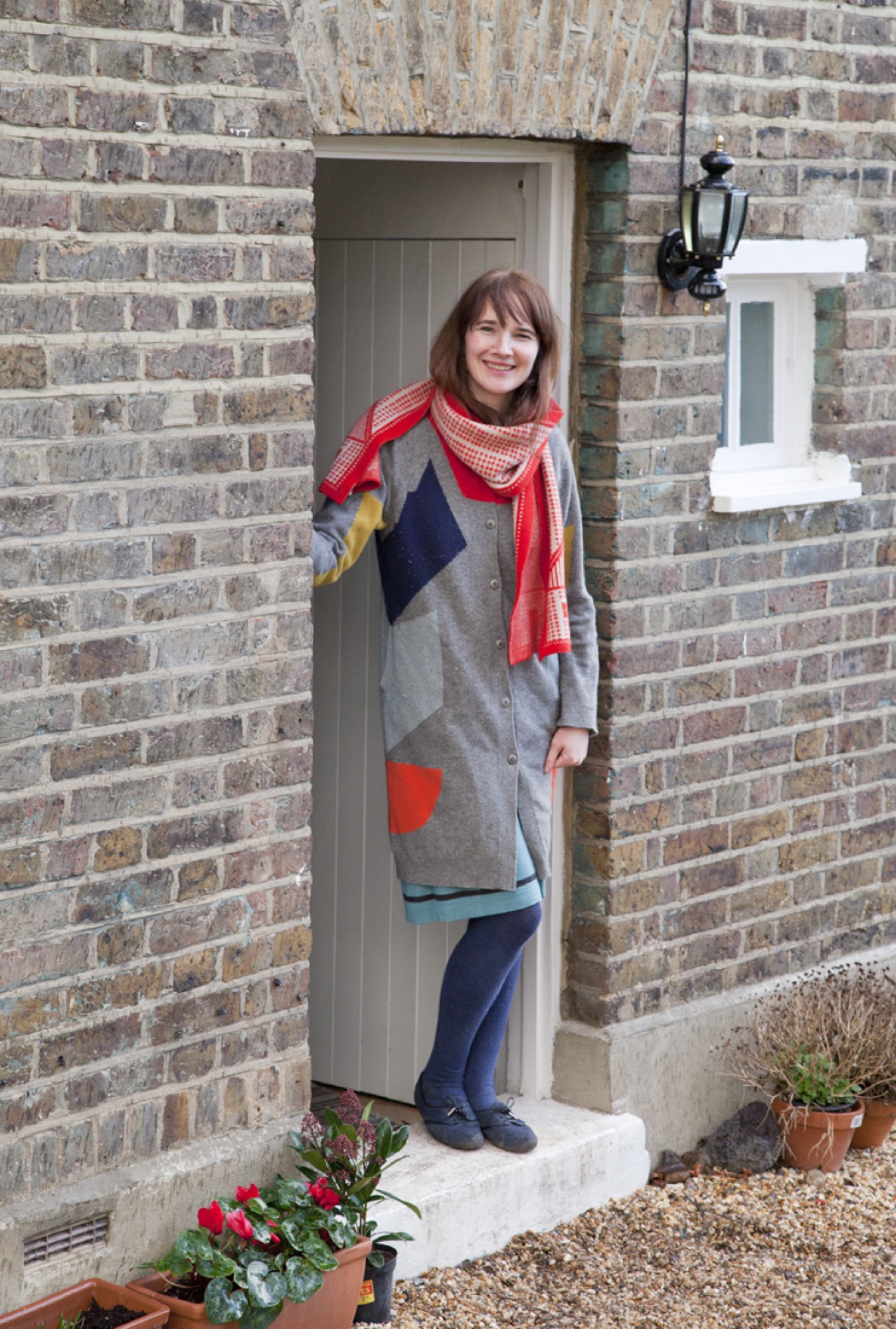
What is your vision for your brand?
To create a wooly wonderland where patterns and color collide and imagination is free to run wild. It’s important to me that people can relate to the creatures and products, and that they evoke emotion — maybe a feeling of nostalgia, sentimentality, or happiness. Even if they just induce a smile, I feel I have done my job.
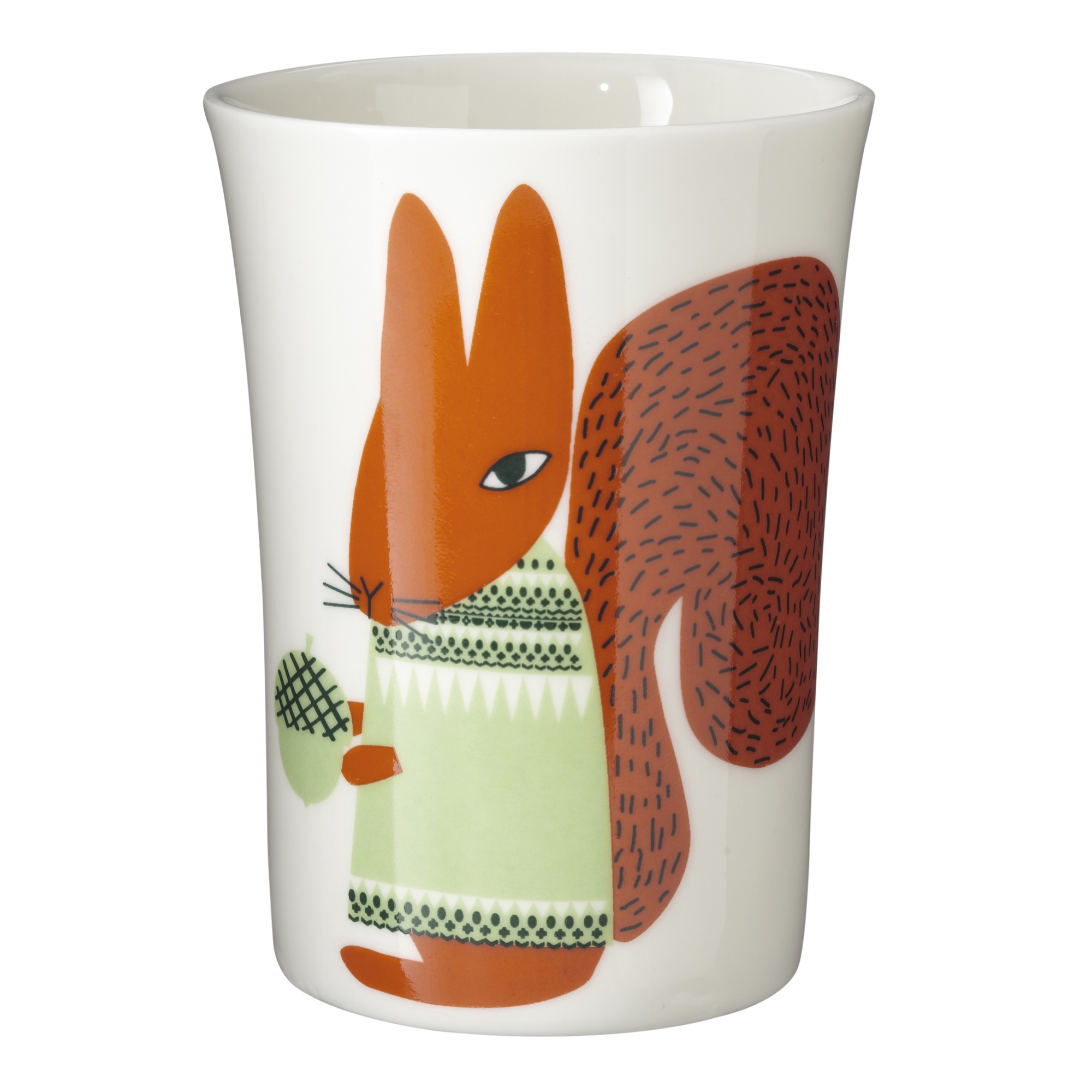
Where did the inspiration for your woolly wonderland come from?
I grew up on a farm, so I'm very familiar with natural landscapes. In my work, I find it very exciting to be able to replicate textures found in nature using wool and to try to mimic textures like moss, bark, and stone. It still amazes me that you can create a fabric from a bit of yarn.
"I find it very exciting to be able to replicate textures found in nature using wool and to try to mimic textures like moss, bark and stone."
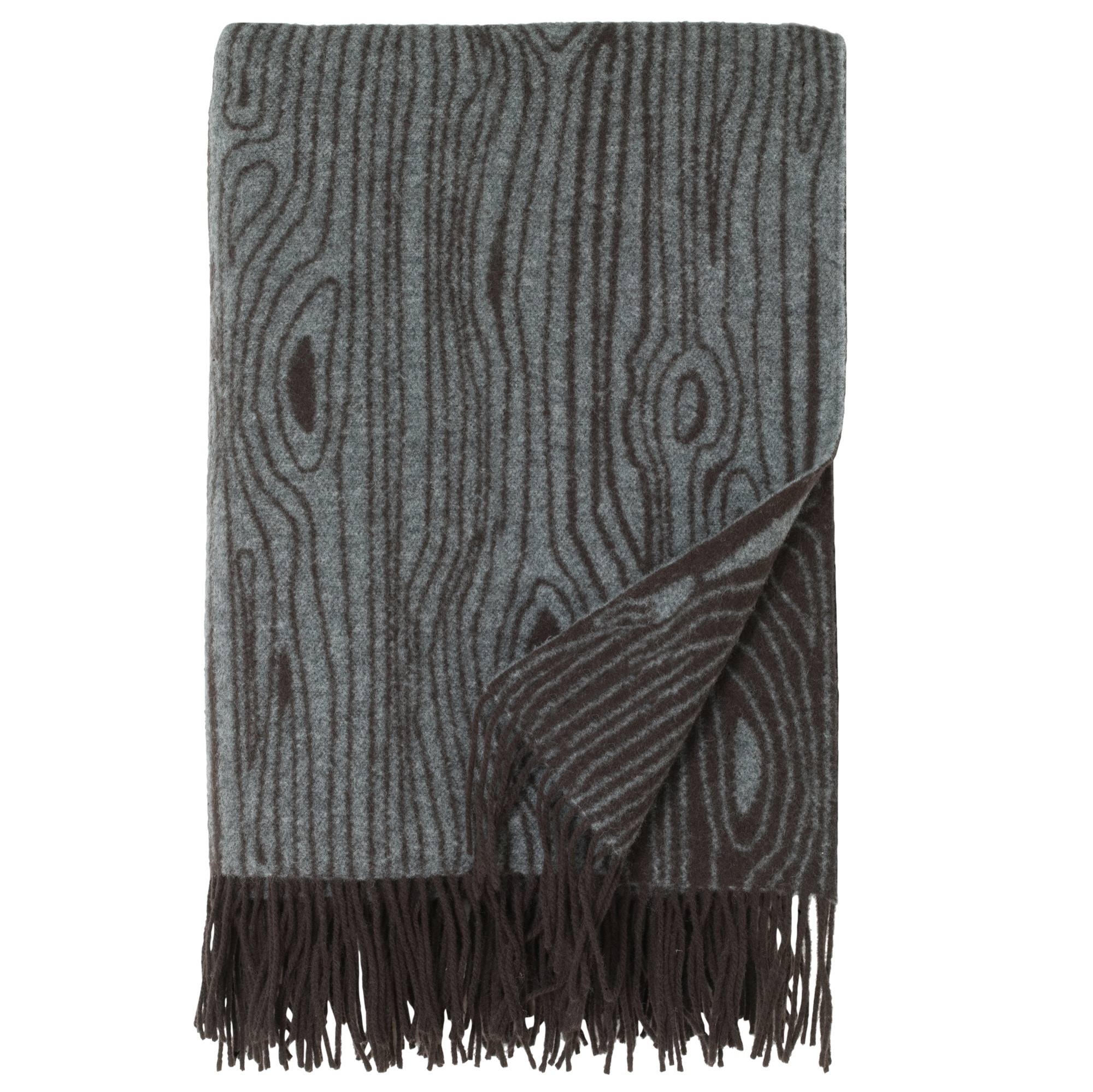
My inspirations do come from all over the place — the landscape, music, dreams, magazines, ceramics, people, Scandinavian design. Sometimes, I just see a tiny snippet of something, which triggers an idea that is then developed into a product.
How would you describe your design style?
I try not to look at trends too much and try to keep focused on creating original designs that are distinctively colorful, graphic, and figurative, with a nod to traditional crafts and a pinch of whimsy.
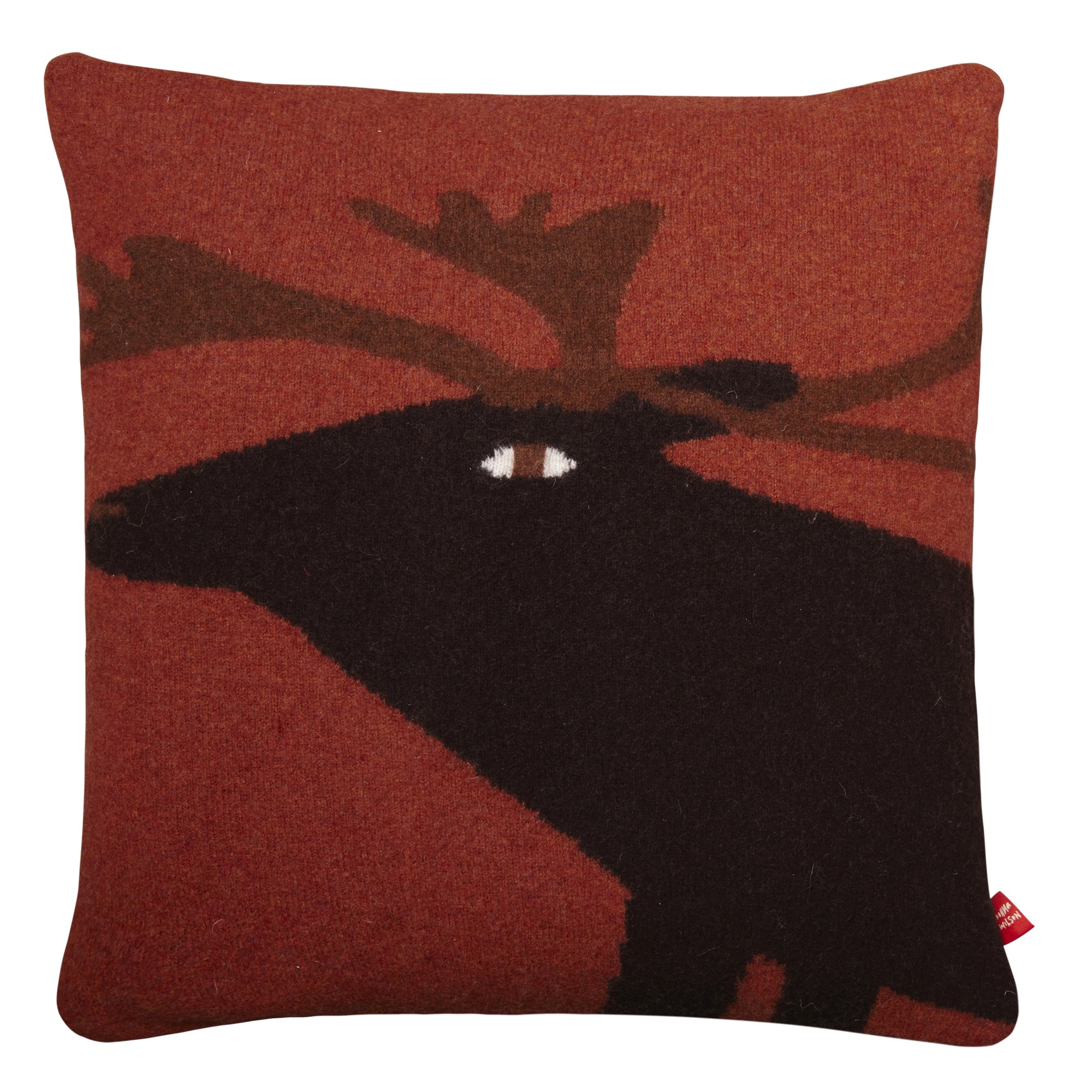
What does quiet design mean to you?
It’s a reaction to the bombardment of images, products, and design we see on social media. Quiet design is more of a classic, true, folksy take on design.
What is your legacy (for now)?
It’s very important to me to promote local manufacturing and to help keep British craftsmanship alive. There’s too much disposability in products and consumer goods nowadays, and it’s environmentally irresponsible. I believe that if you have something that is handmade and is somehow more special than something made carelessly or mass-produced, you’re more likely to keep it for years, instead of throwing it away. I want to make things that people use, keep, and treasure for years.
"It’s very important to me to promote local manufacturing and to help keep British craftsmanship alive."
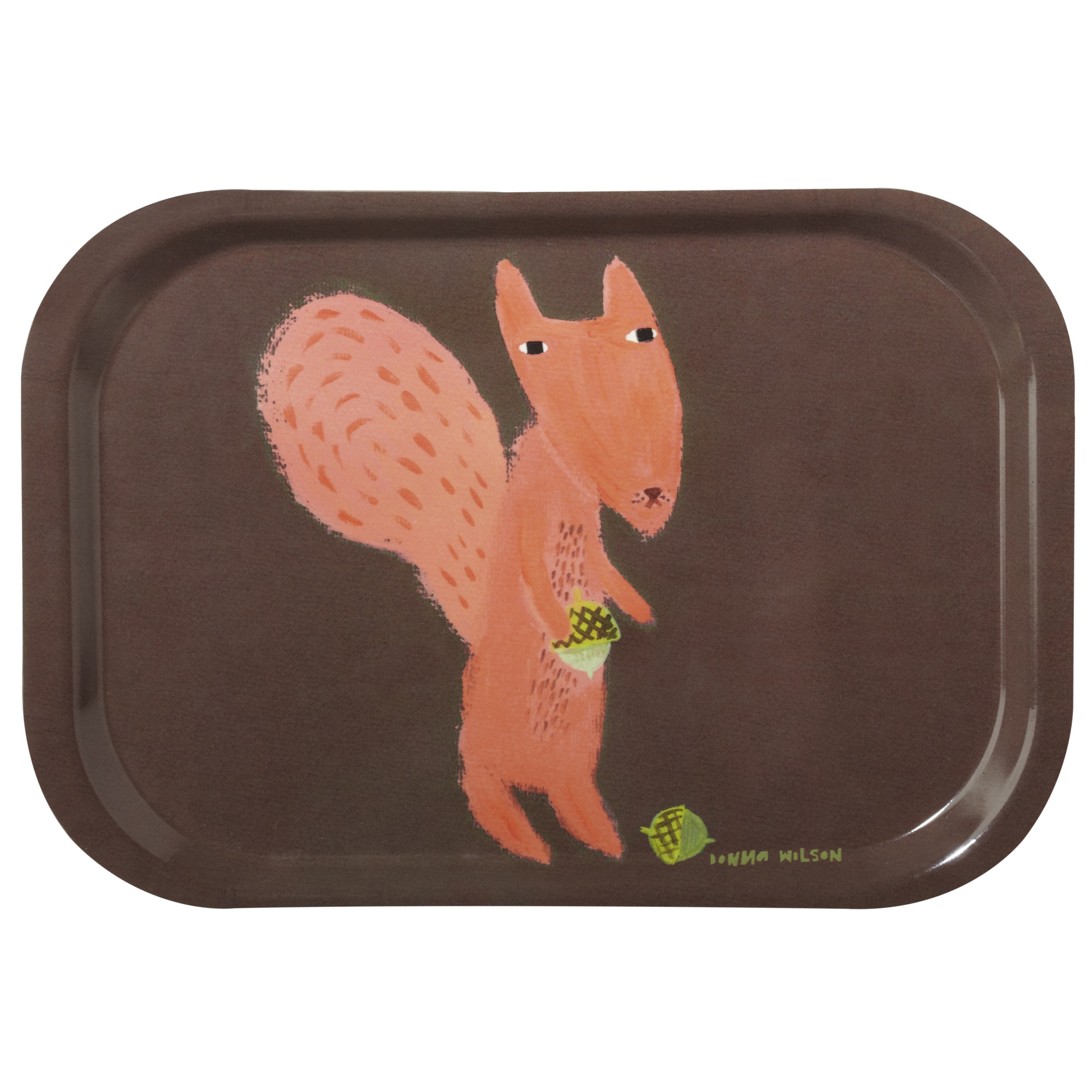
"I want to make things that people use, keep, and treasure for years."
What’s your favorite place in the world?
A few years ago, I was invited to design some furniture and wallpaper for a boutique inn that was being build on Fogo Island, off the coast of Newfoundland. We went as a small group of designers and stayed in an original Fogo Island house together. It was winter, and the snow was so deep it covered the cars. We drank gin-and-tonics with ice from 10,000 year old icebergs! We saw caribou and took a skidoo to remote places. The whole experience has really stuck with me and inspired my work.
"We drank gin-and-tonics with ice from 10,000 year old icebergs! We saw caribou and took a skidoo to remote places. The whole experience has really stuck with me and inspired my work."
Describe your dream home...
Amazingly, we live in a detached cottage with gardens and allotments surrounding it, which is pretty rare in London. It's an old building, built in 1860, and we are taking out time getting it the way we want, gradually. I'm really enjoying making this house our home. It's a lovely little house.
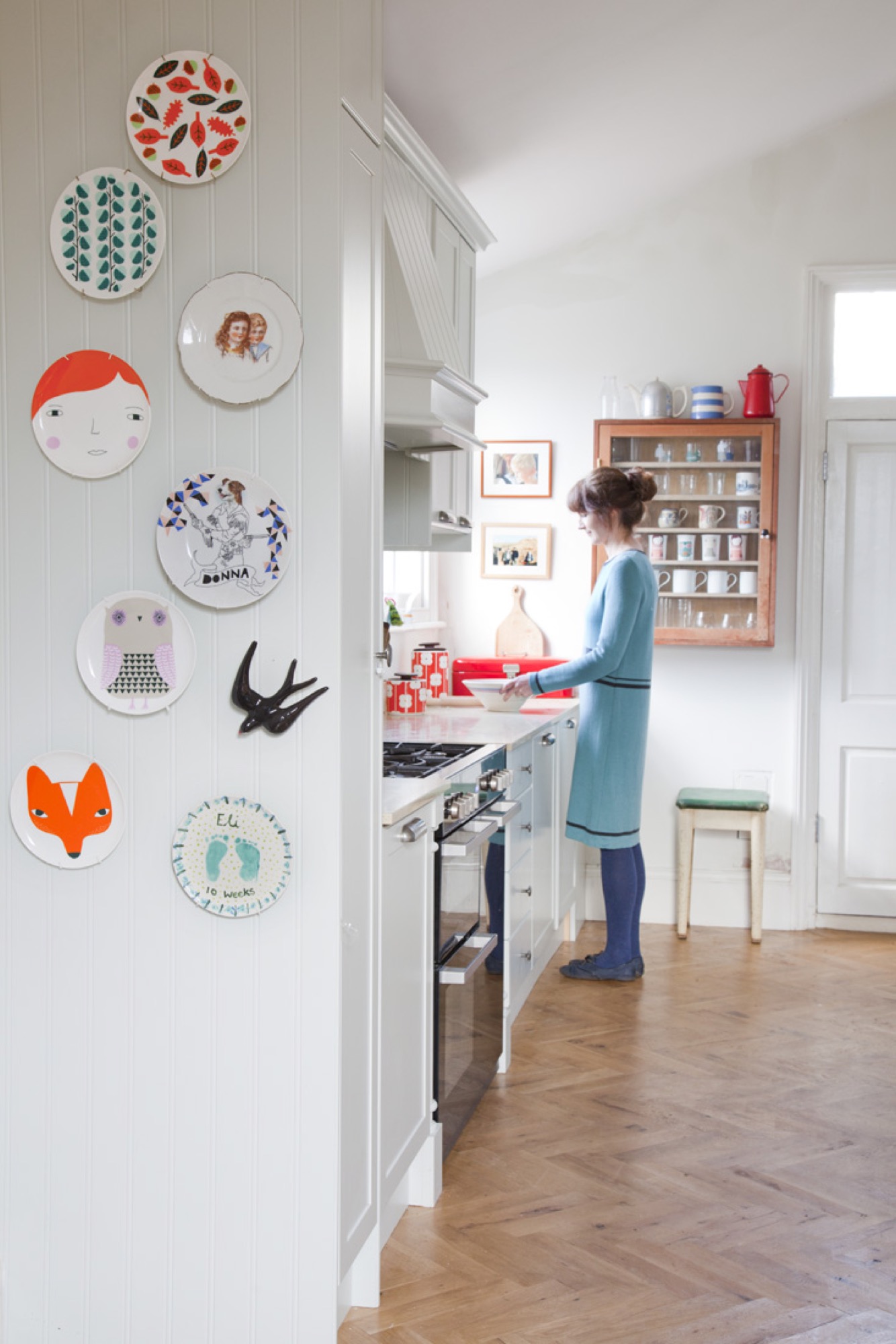
What does “home” mean to you?
Home is a place to have fun, make memories, play, make things, and relax. We have recently moved into our new house, so I am so aware of how much my home means to me, now more than ever. As I am finding places for my belongings, it feels like it is becoming our home more and more. A person’s home is so unique to them. We shouldn’t be afraid to express ourselves through our own decor and style. It might not be as obvious as what we wear — it’s more of a personal thing, and only our close friends get to see our homes.
"We shouldn’t be afraid to express ourselves through our own decor and style."
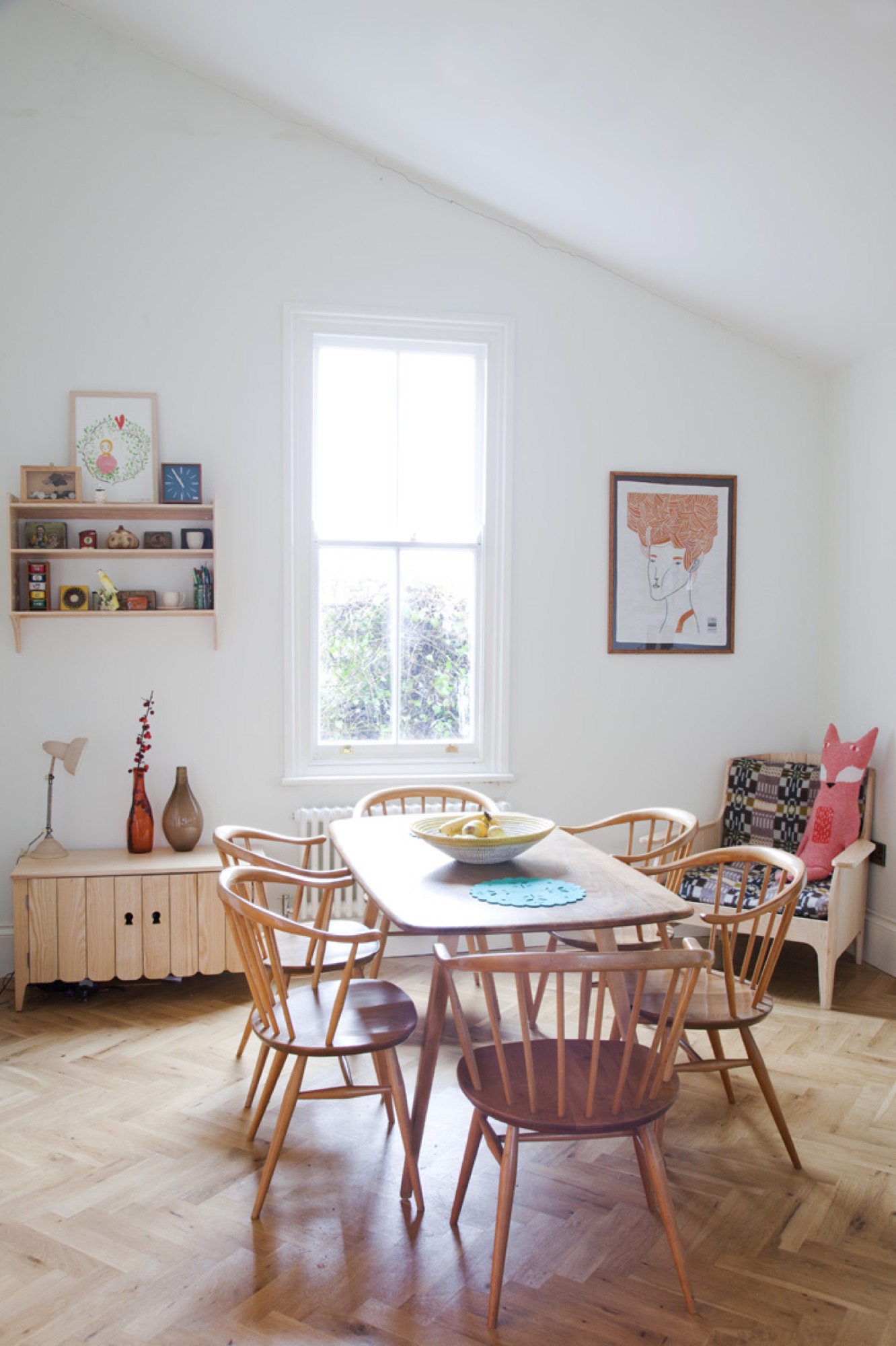
What’s more important to you in life?
My boys. Before having children, I could never have imagined how much these little people would mean to me. It has changed everything, and strangely, I am less stressed than I used to be. I think, I put things in proportion in life.
When are you happiest?
When I’m being creative. There’s noting better than having a day just to play, make, design, and produce lots of ideas, then finally you get something you like. It’s the best feeling in the world.
"There’s noting better than having a day just to play, make, design, and produce lots of ideas, then finally you get something you like. It’s the best feeling in the world."
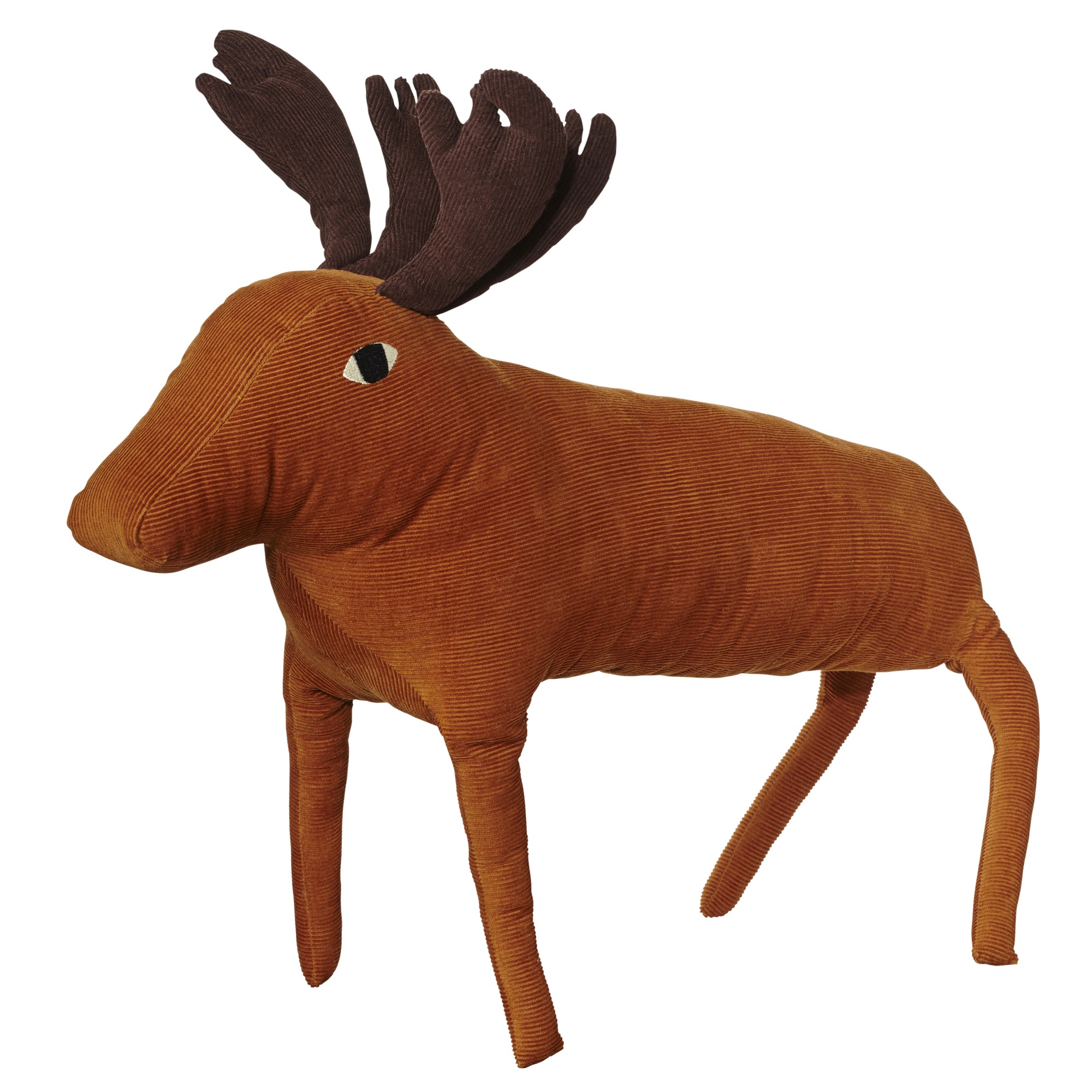
Who is your design icon?
I like Alexander Girard, Stig Lindberg... and my grandma! Another designer I admire is Hella Jongerius. I love the sofa she did for Vitra a long time ago, with odd buttons. I’d never seen anything like this, and I love the way she uses textiles and color a lot in her work. Her designs are clever and thoughtful and have that human element.
Who inspired you to be the person you are?
My grandmother. She encouraged me to be creative and work with my hands, She was always trying to teach me things, like how to knit and crochet. I started being creative at quite a young age. I was always drawing and making things and was always happiest with a pencil in my hand. As a child, I didn’t know what I wanted to be when I grow up, but I knew it was going to be something to do with art and design. Now that I’m a mother, I’m inspired to encourage creativity in my kids and love seeing them getting all messy and using their imaginations.
"I started being creative at quite a young age. I was always drawing and making things and was always happiest with a pencil in my hand."
What is your life philosophy?
Do what you love and love what you do.
What are you working on right now?
We are working on the new collection for spring and summer 2017. We’re developing some new designs for ceramics and glassware. We are just about to launch our autumn/winter collection at the trade shows this month. I’m really happy with it, and there are lots of fresh, new products, like odd cashmere creatures and bamboo fiber picnic ware. We also have some special creative projects in the pipeline. △
More from Donna Wilson's collection:
In Search of Tenkara
The founder of Tenkara USA travels to Japan and brings back the traditional method of fly-fishing with a long rod and without a reel
Upon returning from Japan, my mind was filled with the mountain culture of tenkara, a traditional method of fly-fishing with a long rod and without a reel. I had to share my discovery with the people at home. My next journey was founding Tenkara USA.
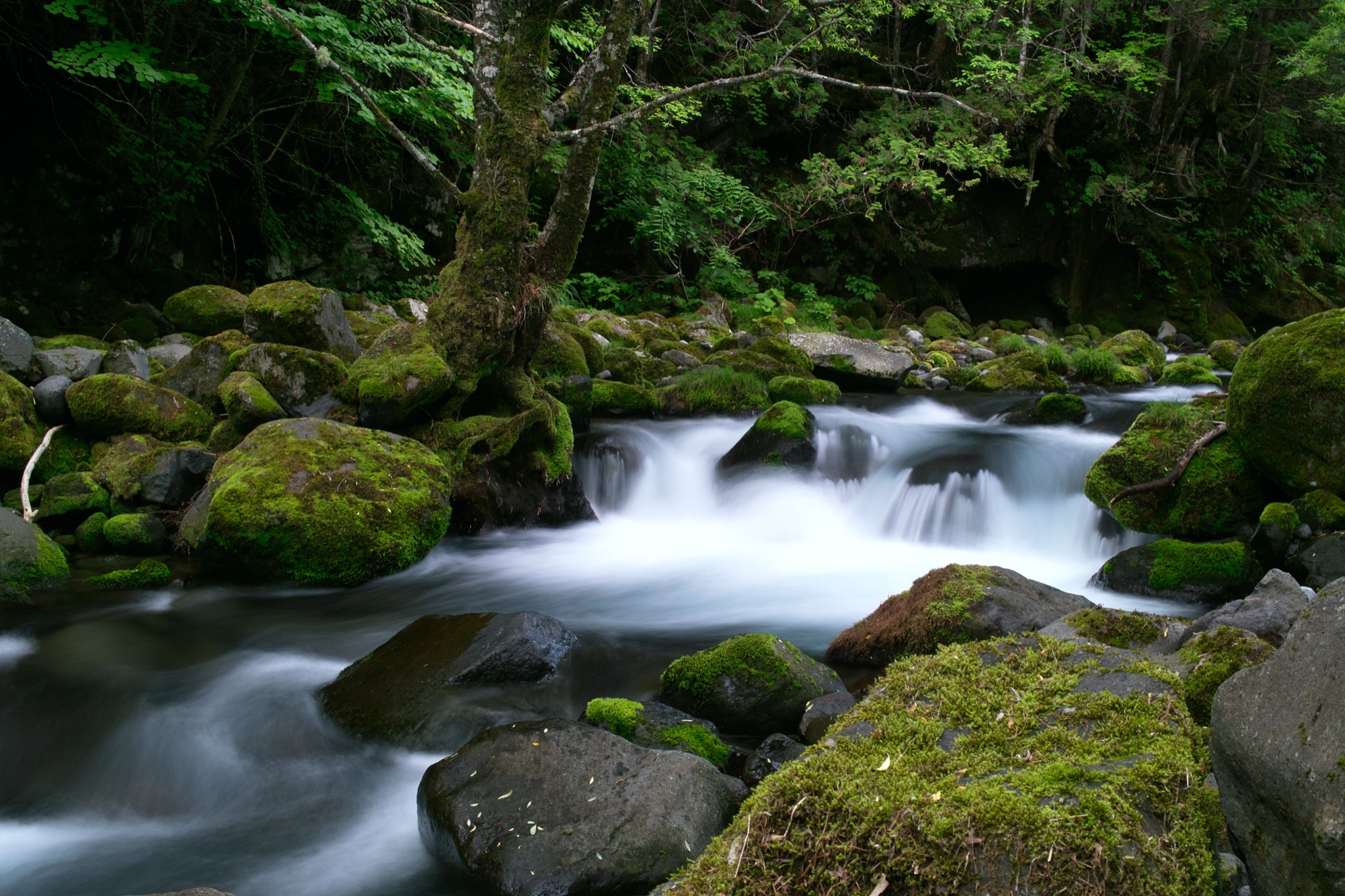
Clinging to mossy rock with half my body under a waterfall, I watched the torrent crash into a small basin fifty feet below, sending mist into the air and soaking my companions. Mr. Futamura observed apprehensively. Next to him, Mr. Kumazaki preferred to stare at the pool in front of him for any signs of iwana, the wild char found in the mountains of Japan. A fishing rod, small box of flies, and spools of line and tippet were stowed away in my backpack. No reel required.
As tends to happen with shing, we lost track of time somewhere along the way and now faced the crux of the trip. It was seven o’clock in the evening and would soon turn dark inside this lush forest. After a full day of rappelling, swimming through pools in impassable canyons, climbing rocks and waterfalls, and, of course, shing, we were all tired. The route ahead looked straightforward and within my comfort zone, the only caveat being a very wet climb.
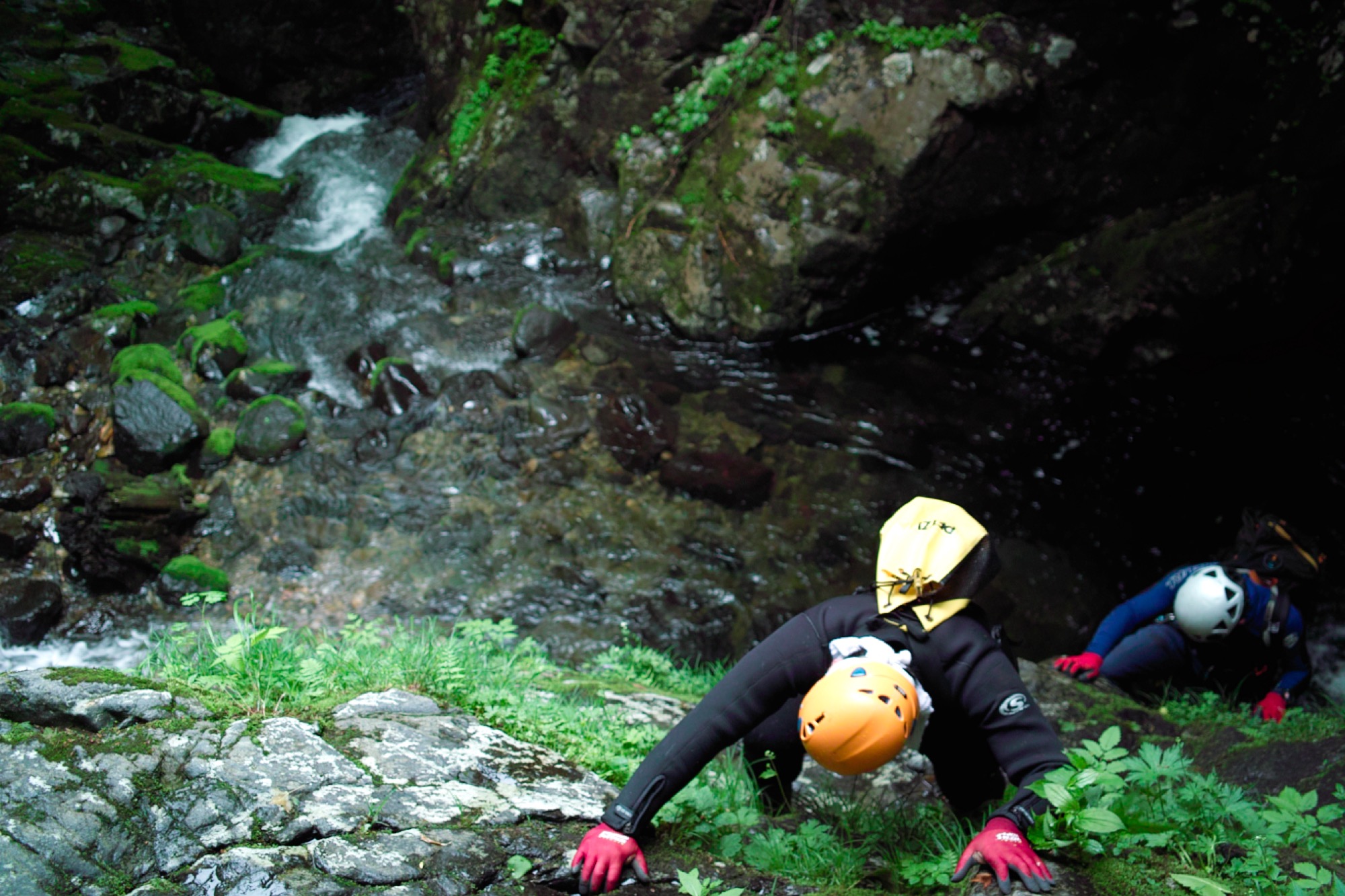
My task was to climb to the top, set up an anchor, and belay my partners up. Twenty feet from the top, features on the rock face disappeared on the drier left side and forced me closer to the waterfall, where thick moss oozed like a wet sponge. I was long past the point of no return. I pushed past the fear and focused: hands and feet, hands and feet, hands and feet. The banter between Futamura and Kumazaki suddenly stopped. All sounds, including the roaring of the waterfall, seemed to vanish.
Getting there
My trip to Japan was a journey of discovery. For two months, I stayed in a small mountain village, learning everything I could about the one thing prompting my journey: tenkara.
In reality, I already knew a lot about tenkara. Three years earlier, on my first trip to Japan, I introduced myself to this traditional Japanese method of fly-fishing that uses only a long rod, line, and fly—no reel. After returning home, all I could think about was tenkara. It offered a new way for me to challenge those mountain streams I love. I imagined how great it would be for backpacking and introducing people to fly- fishing in a simple, fun way. There were just so many possibilities.
"After returning home, all I could think about was tenkara. It offered a new way for me to challenge those mountain streams I love."
With little information and no gear available stateside, I took on the task of introducing tenkara to the United States. Over several long months, I created Tenkara USA and since 2009 have been introducing tenkara to anglers outside of Japan. However, despite the knowledge I gained in the last three years, particularly under the tutelage of Dr. Hisao Ishigaki, Japan’s leading authority on tenkara, I knew there was much more. Tenkara is a deceivingly simple form of fly-fishing that holds deep historical, cultural, and technical layers.
"Tenkara is a deceivingly simple form of fly-fishing that holds deep historical, cultural, and technical layers."
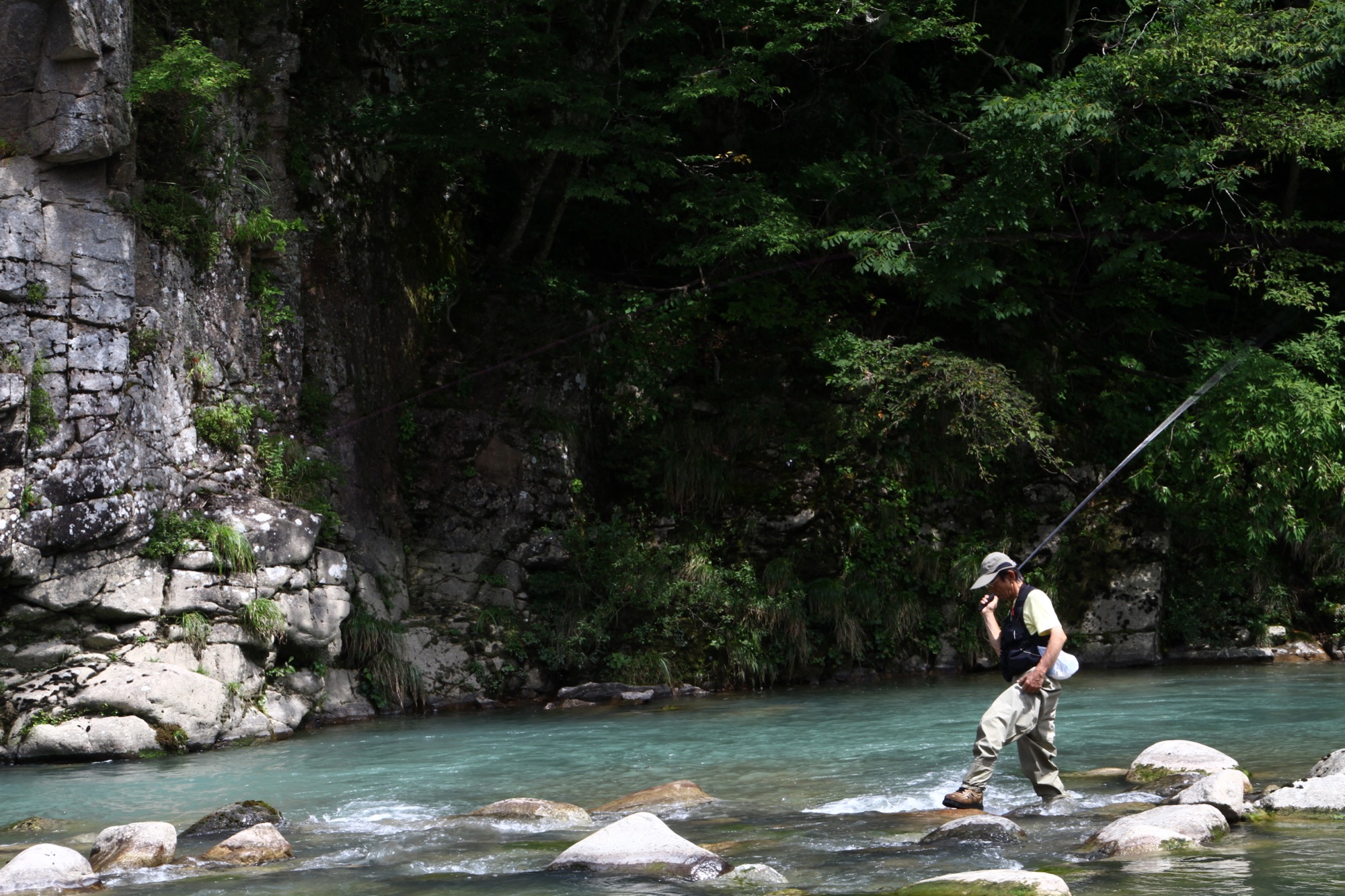
History of tenkara
Just as the practice of metalworking appeared independently in the Fertile Crescent of the Middle East and among the Incas in South America, evidence suggests that fly-fishing emerged in Europe and Japan independently of one another. Tenkara is similar to the original mechanics of fly-fishing practiced by the likes of Dame Juliana Berners and Charles Cotton, the best-known historical practitioners of fly-fishing in the West. Anglers have practiced similar fixed-line methods in many other parts of Europe, including Spain, France, Italy, and Poland. Yet, unlike the original Western fly-fishing methods, tenkara still lives in Japan.
One main distinction separating tenkara from Western fly-fishing is its origin—tenkara was an art of necessity for peasants, not a sport for the idle classes. While the West went to work designing fly patterns, weights, strike indicators, and other gadgets to control the reach of a fly or make the activity “easier,” the typical tenkara fishermen of today adhere to the original practitioners’ thrift and reliance on skill. At the risk of seeming irrational to a Western fly angler, most tenkara anglers rely on only one fly pattern, no matter where they fish or what is hatching. As the tenkara philosophy goes, attaining a mastery of skills and technique is more important and efficient than second-guessing fly choice.
"Tenkara was an art of necessity for peasants, not a sport for the idle classes."
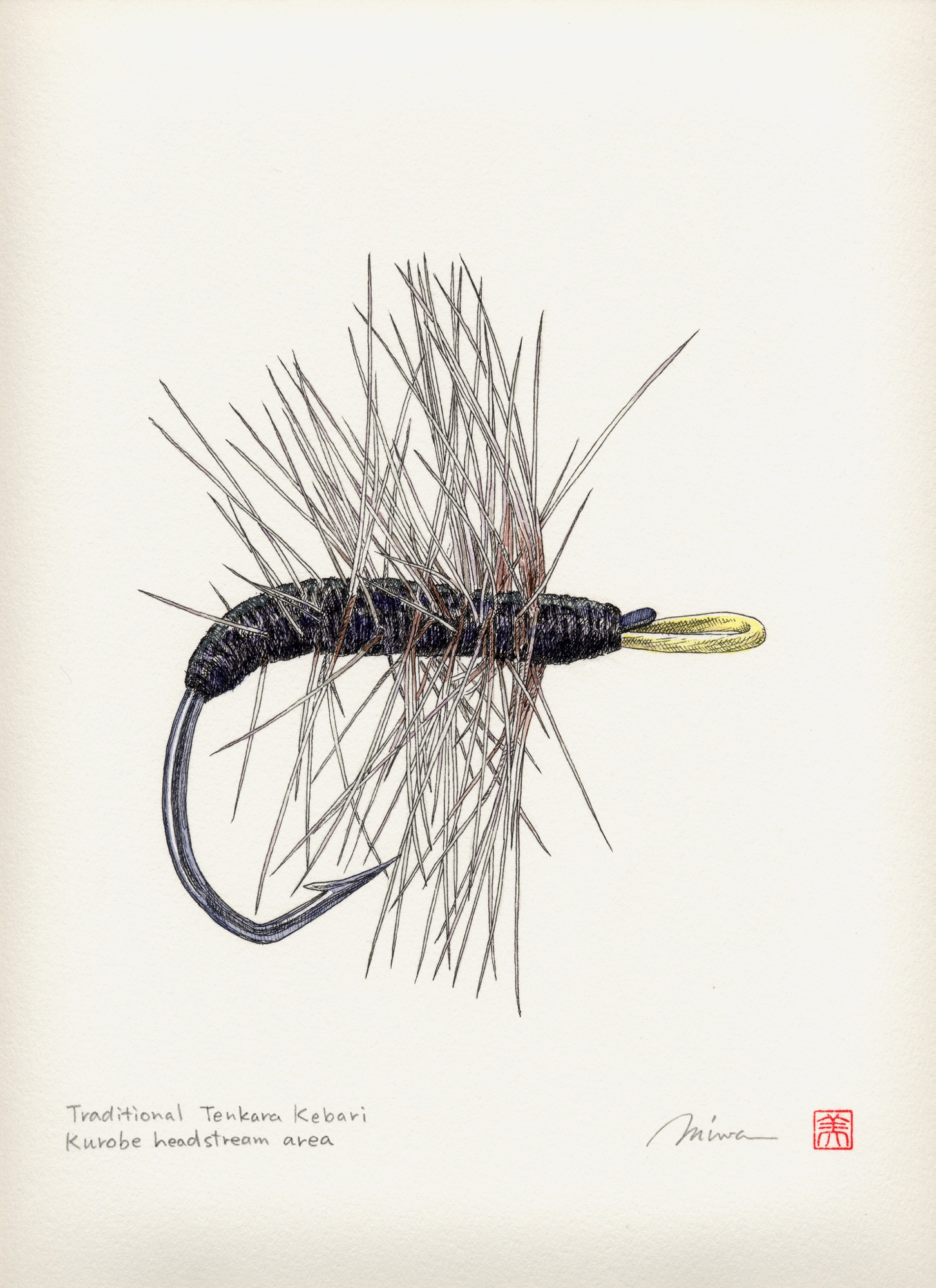
"As the tenkara philosophy goes, attaining a mastery of skills and technique is more important and efficient than second-guessing fly choice."
Ancient and mysterious origins
Tenkara felt like my own personal Machu Picchu. Here was a rich but hidden mountain culture relatively unknown to the West, so unpublicized that the coastal Japanese themselves only became more aware of it in the second half of the twentieth century. Although researchers can find numerous Western fly-fishing references going back as far as AD 200 or beyond, in Japan, records of the sport only travel back a few generations before disappearing into the forest along with the original, albeit illiterate, practitioners of tenkara.
Even the origin of the name, tenkara, is unknown. The phonetic reading of ten kara could give it the meaning of “from heaven.” However, the name is written in katakana characters, a Japanese syllabary mostly used for words of foreign or unknown origin. This leaves few clues but opens several theories on the original meaning of the word. The most common stems from the way a fly lands from a fish’s perspective, as if it were coming “from heaven.”
Until recently, in most parts of Japan, the method was referred to as kebari tsuri. Kebari means “haired hook” (artificially), and tsuri means “fishing.” In the late 1970s, as the Japanese rediscovered traditions such as tenkara that had flirted with extinction during periods of dramatic economic dislocation, a handful of tenkara enthusiasts began using the term tenkara exclusively to clearly differentiate the practice from other types of fly-fishing. Nowadays, in the appropriate context, it’s used to describe fly-fishing sans reel.

The adventure
I wasted no time getting to the mountains of Gifu prefecture, the region of Japan where tenkara possibly originated. Two friends from Tokyo met me at the airport, we loaded into a rented Nissan and immediately headed for the mountains. The suburbs of Tokyo sprawled endlessly on both ends of the city, a sea of lights with tiny rice paddies in lieu of backyards. Mountains on the horizon appeared impenetrable, abruptly bordering the suburbs as though the country were too small for foothills.
The seven-hour drive southwest was a bridge between two worlds, betraying how a mountain culture could have remained unexplored within a country the size of California. Traveling at sixty miles per hour I imagined how, just a hundred years ago, it would take a full day to cover what I did in ten minutes. I could easily envision how a mountain fishing technique could survive here, unknown to the population centers on the coast and the world beyond, for so many years.
"I could easily envision how a mountain fishing technique could survive here, unknown to the population centers on the coast and the world beyond, for so many years."
We arrived in Maze, a small mountain village of approximately 1,400 souls in the prefecture of Gifu. Kazuhiro Osaki, who goes by the name Rocky, and his wife, Ikumi, would host me during my stay. For several years, Rocky and his wife have managed the Mazegawa Fishing Center, a tourist center established on the banks of the Maze River to promote angling tourism and other activities in the area. Their home was quaint, my lodging a traditional tatami room with its typical grassy fragrance. A seat at the kitchen table provided a clear view of the mountains to the south. Being the monsoon season, sparse clouds frequently enveloped the mountains. I couldn’t have asked for a more scenic location or for better hosts—it felt like a dream.
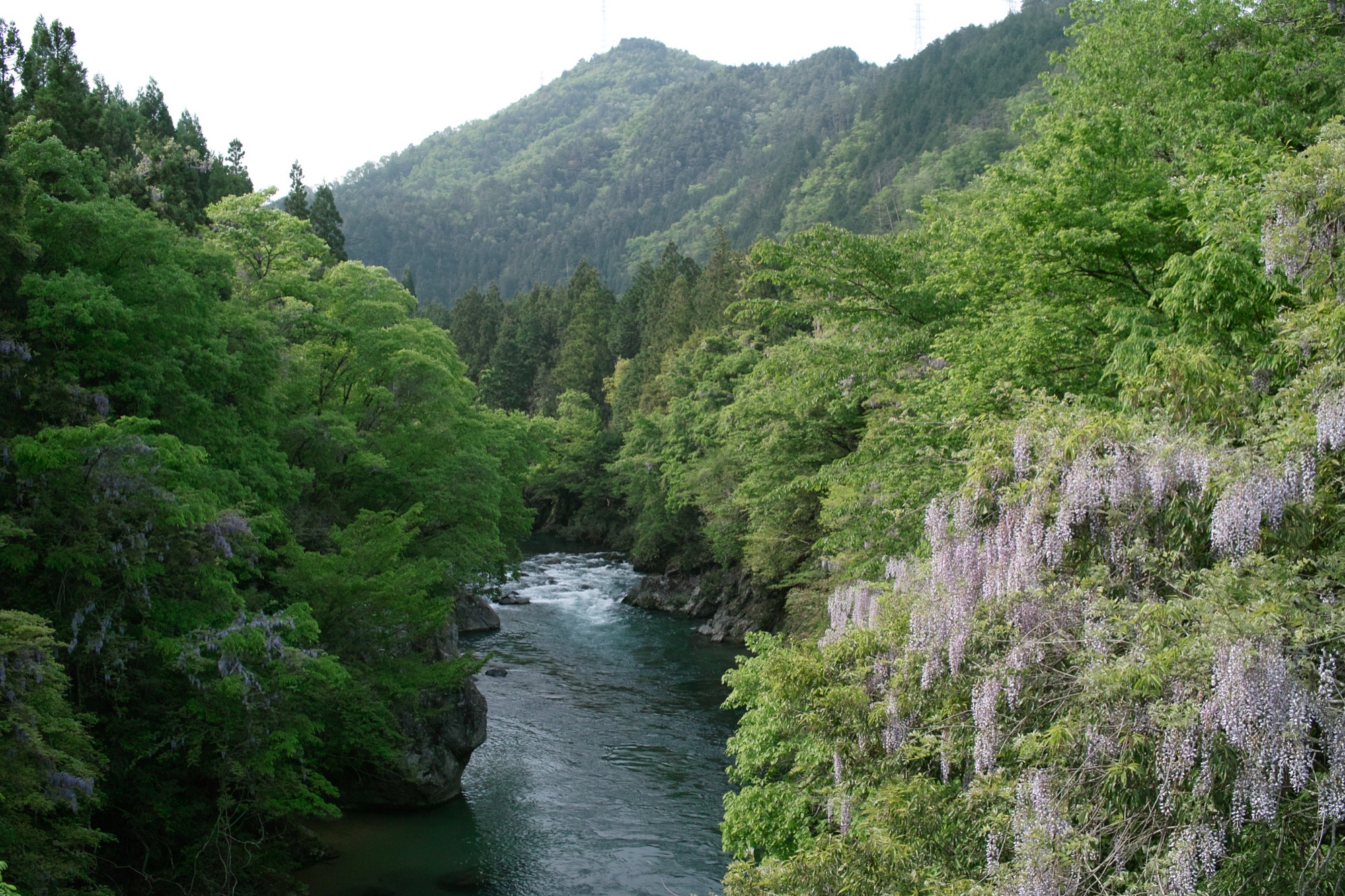
Most mornings evolved into a pleasant routine of writing and taking care of the business side of Tenkara USA while drinking a cup of coffee and enjoying the mountain views. In the afternoons I visited the fishing center and tried to uncover the different layers of tenkara through fascinating interviews and encounters with individuals who made (and continue to make) its history. In the evenings, I’d try to fish the yumazume, loosely translated as the “evening activity period,” until it got too dark to see.
A living tradition
Perhaps the mountain culture of tenkara has always been too rich to ever really be at risk of true extinction. Talking to some early Japanese explorers of the tradition, I wonder how close Japan came to losing tenkara.
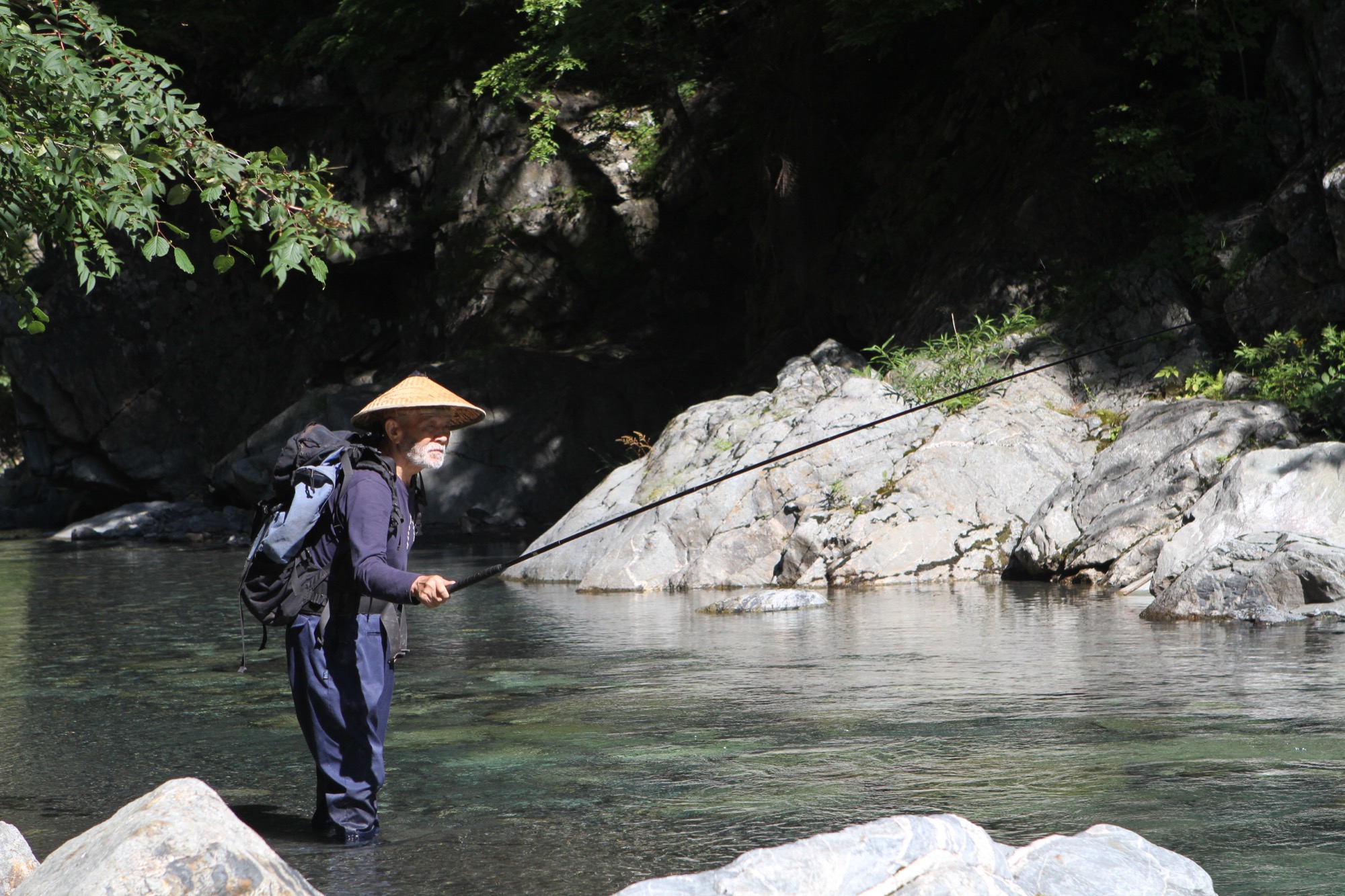
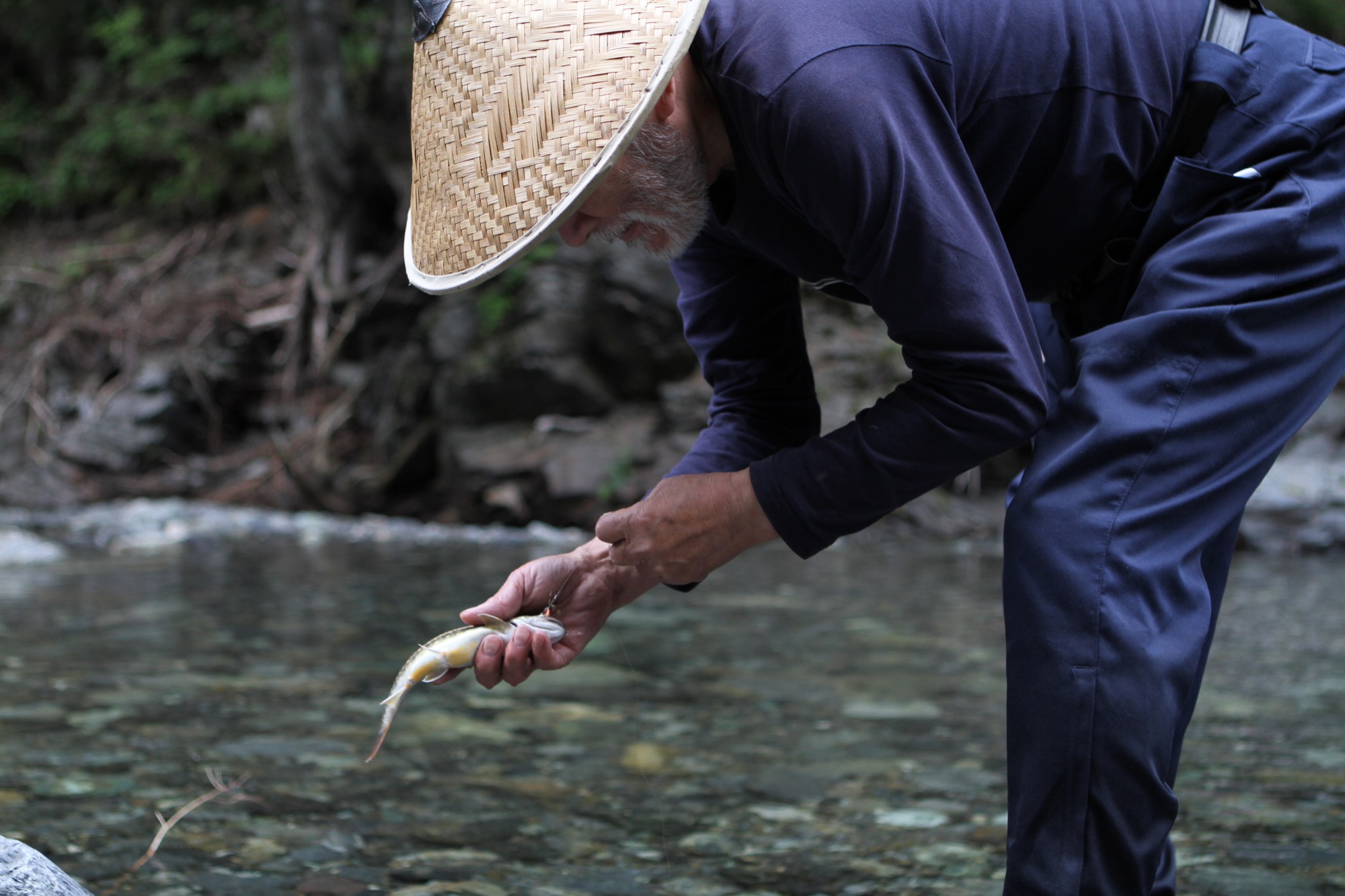
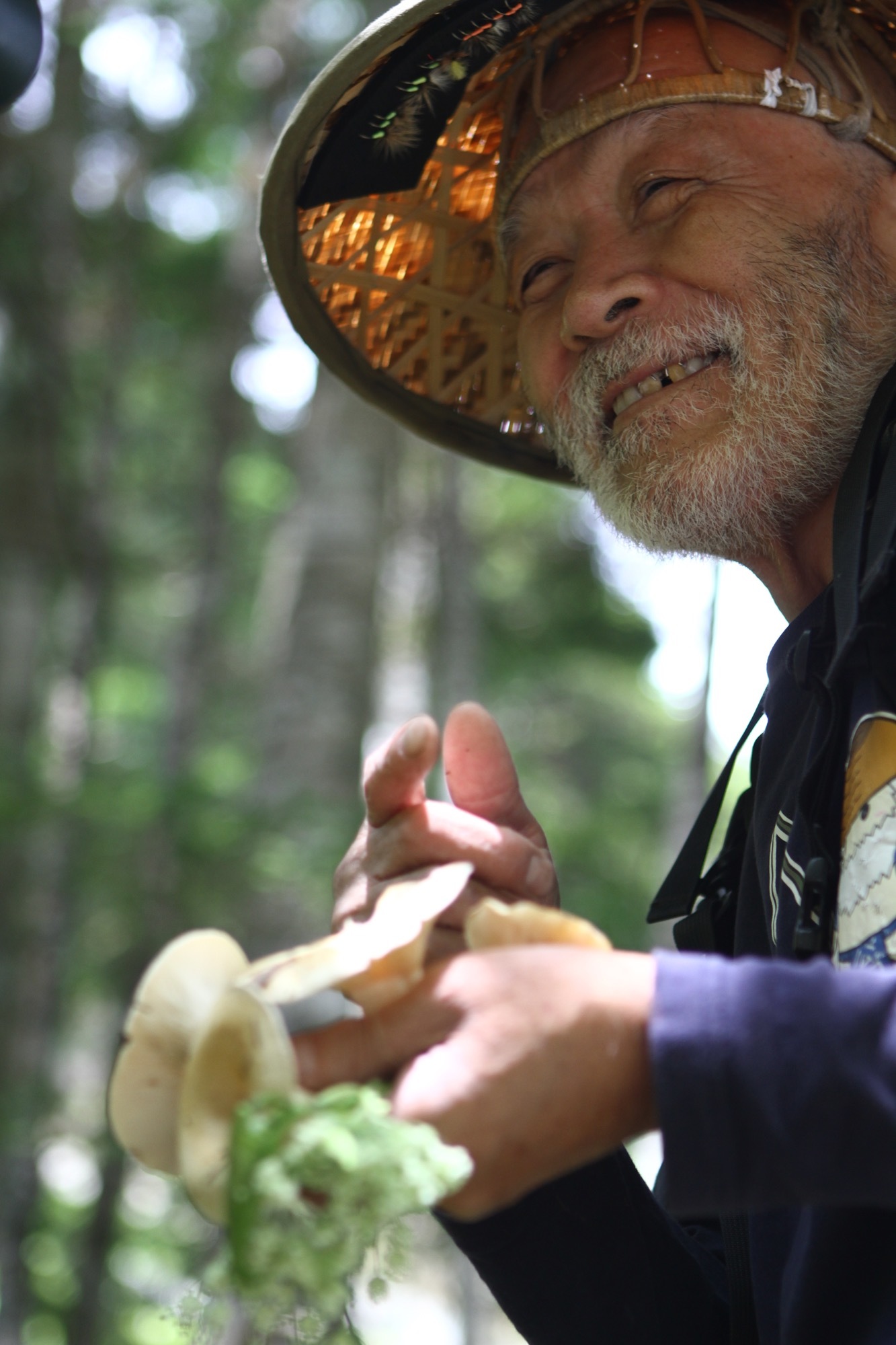
Eighty-nine-year-old Mr. Ishimaru Shotaro heard about my curiosities through the region’s social network. He came to the fishing center to meet this gaijin (foreigner) who was so interested in his tenkara. He guessed it was 1934 when he began watching a tenkara angler near his hometown of Hagiwara. He explained that approaching a stranger to ask about his techniques simply wasn’t done at the time. Keeping a subtle distance, Shotaro-san followed the angler for an entire summer, periodically going off on his own to try out the techniques he observed. This is how he learned tenkara, then taught others in the area, and is now often referred to as a tenkara meiji, or “tenkara master.” Without any records to prove otherwise, Shotaro-san may have been the rst tenkara teacher in the country.
I asked him why today’s young people think that fishing is difficult—despite the availability of books, magazines, and videos—even though Shotaro-san taught himself the practice simply through observation. He responded simply, “There were a lot more fish back then.” Mr. Shotaro described how at that time, when the damming of the rivers that accompanied Japan’s industrialization was far from complete, he often caught 100 fish a day, with a personal record of 150, numbers common and somehow sustainable among the professional tenkara anglers of the time.
“There were a lot more fish back then.”
When I met him, Shotaro-san couldn’t trust his body the way he did a decade earlier. His legs started giving out three years ago, and since that time, he had not visited the water. Nonetheless, one hour of talking about tenkara was just too much for him to bear. As he had done a hundred times in our conversation, every time he remembered a story about fishing and his youth, he smiled. But this smile was different. I could tell he wanted to fish again. In a very soft voice he turned to his nearby student and said, “Tsuri o shimashoo!”—“Let’s go shing!”
After helping him put on waders, his student and I assisted Mr. Shotaro into the waters of the Maze River. Mr. Shotaro said he wanted to fish with me, since he didn’t know if he’d ever have another chance. With a new vigor, his casting was fluid and precise, the manipulation of the fly enticing. In a stretch of river that had yielded few fish in the two months I was there, Shotaro-san got a fish to rise on his third cast.
Stolen technique
In the early 1960s, the practice of tenkara was as mysterious as it had been in the prewar period. Katsutoshi Amano, a name known to all Japanese tenkara practitioners, had to learn the sport exactly the same way Shotaro-san did before him. As Amano-san said, “Asking a man about his technique just wasn’t done at the time; I had to ‘steal’ the technique from him.” Ironically, given their age difference and the fact that both are from Hagiwara, there is a good chance the man Amano-san followed and mimicked was Shotaro-san himself.
Dr. Hisao Ishigaki, my principal tenkara teacher, and Mr. Amano were instrumental in popularizing tenkara among the Japanese starting in the late 1970s when Japan, at the height of its economic boom, began to rediscover itself and its traditions. In 1985, Japan’s largest TV network produced a segment on the sport, giving people throughout Japan an idea of what tenkara was about. Nowadays, newcomers can look it up online, watch videos, and choose from a collection of books and magazines that offer lessons on knots, flies, and techniques. A once-secretive practice that provided employment to landless peasants is now a source of fascination to urbanized Japanese and a growing number of participants in the United States and other countries.
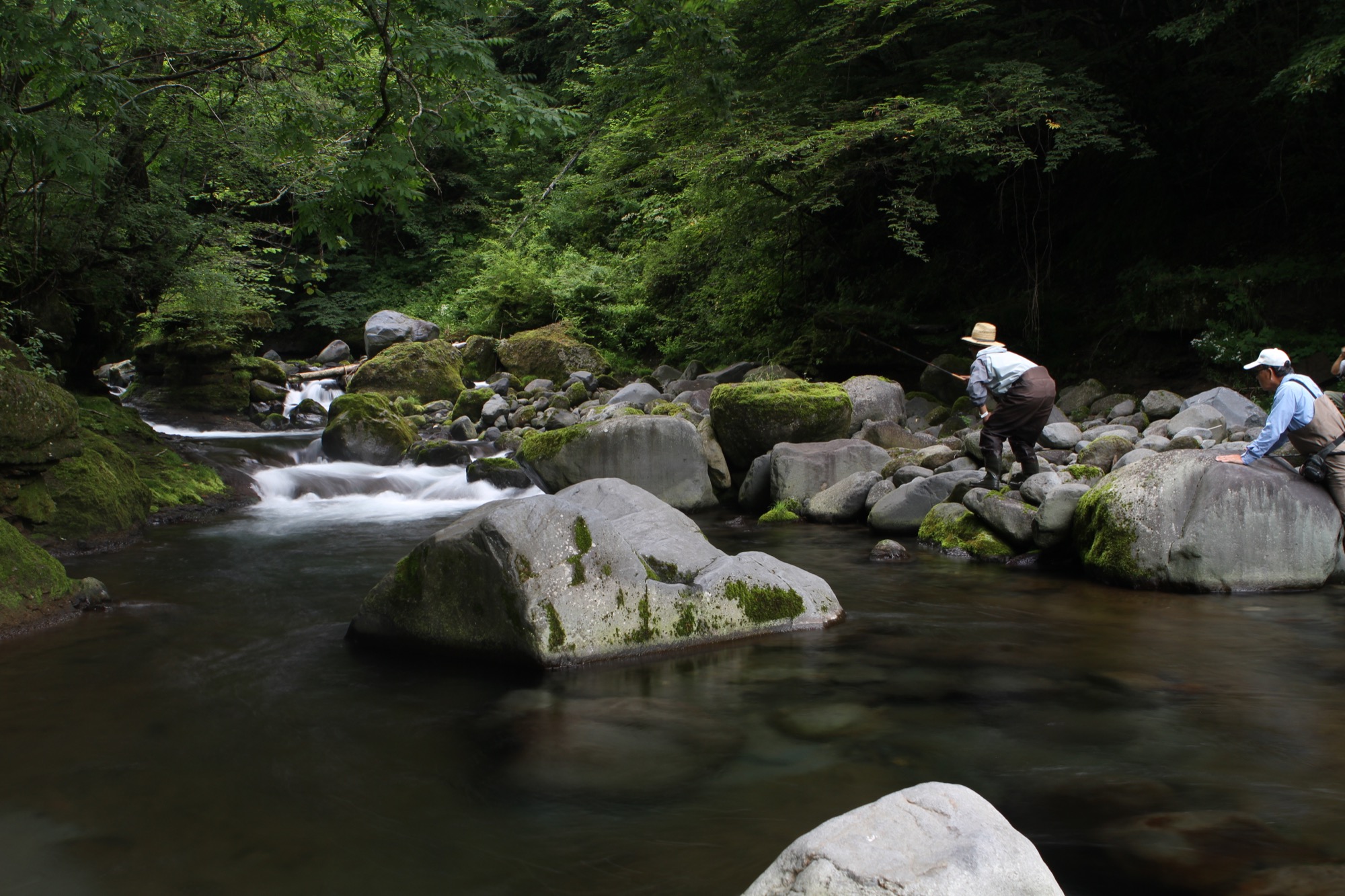
Tenkara with a twist
Two months went by faster than the glimpse of a rising trout. But I was happy I had found the time to fish a little on a daily basis. My worst fear was that I’d end the journey wasting a lot of time and not “finding tenkara.” I feared my relatively reclusive nature would send me deep into the mountain streams searching for the soul of tenkara anglers from centuries ago, rather than seeking people who are alive and carrying on the tradition.
My fear of wasting time didn’t come true. I enjoyed incredible encounters with old masters, meetings with craftsmen, a very enjoyable time with my hosts and their friends, and a lot of fishing, too. But I also craved adventure.
The same isolation early tenkara fisherman enjoyed was a little more difficult to achieve in modern Japan. So we took to the challenge with canyoneering shoes, neoprene wetsuits, ropes, and harnesses, and our tenkara kit, mixing fishing with what is known as “shower-climbing,” a mix of canyoneering with climbing waterfalls. It seemed tenkara and shower-climbing were made for each other. Our portable gear didn’t add weight to our packs, and the telescopic rods could quickly be stowed away as we prepared to climb a waterfall. By conquering wild, pristine, and remote waters, we would earn our right to practice tenkara there.
"It seemed tenkara and shower-climbing were made for each other. ... By conquering wild, pristine, and remote waters, we would earn our right to practice tenkara there."
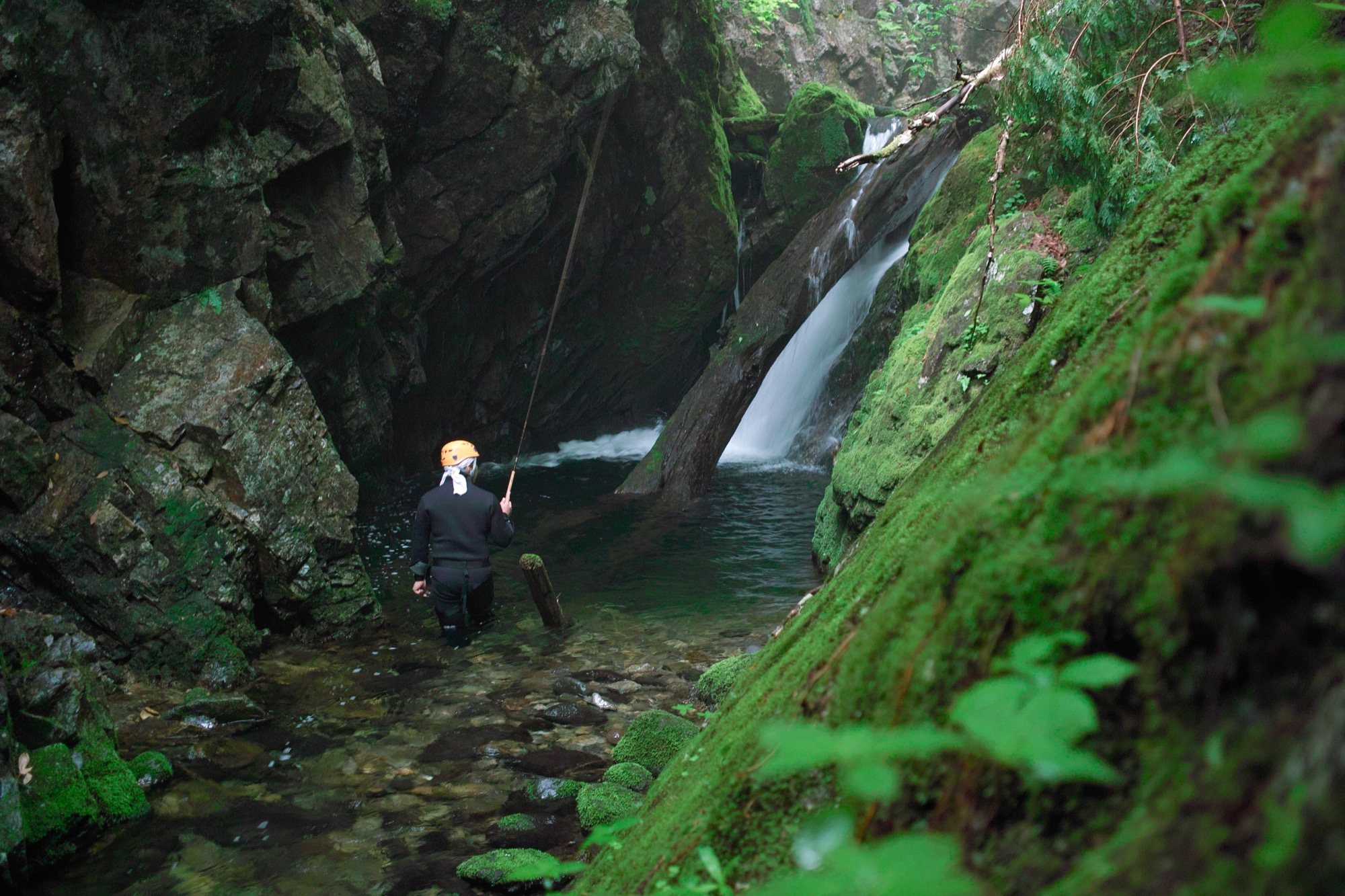
We set off on an expedition that took us to rugged tenkara-perfect mountain streams, far from the masses that leave many streams ravaged and devoid of fish. Out here, I finally felt the spirit of tenkara fishermen from eras gone by: They disappeared into the forests for weeks at a time, camping and fishing the streams, drying caught fish, and finally, when the catch threatened to be too heavy to carry out, headed back to the village markets.
We planned to build a fire by the river, where we would cook a trout “shioyaki-style”—only sea salt coating the skin, a firm branch serving as a skewer. And we would drink kotsuzake, a drink that, as I have come to appreciate, is underpinned with ceremonial and philosophical significance—though one shouldn’t picture a neat Japanese tea ceremony.
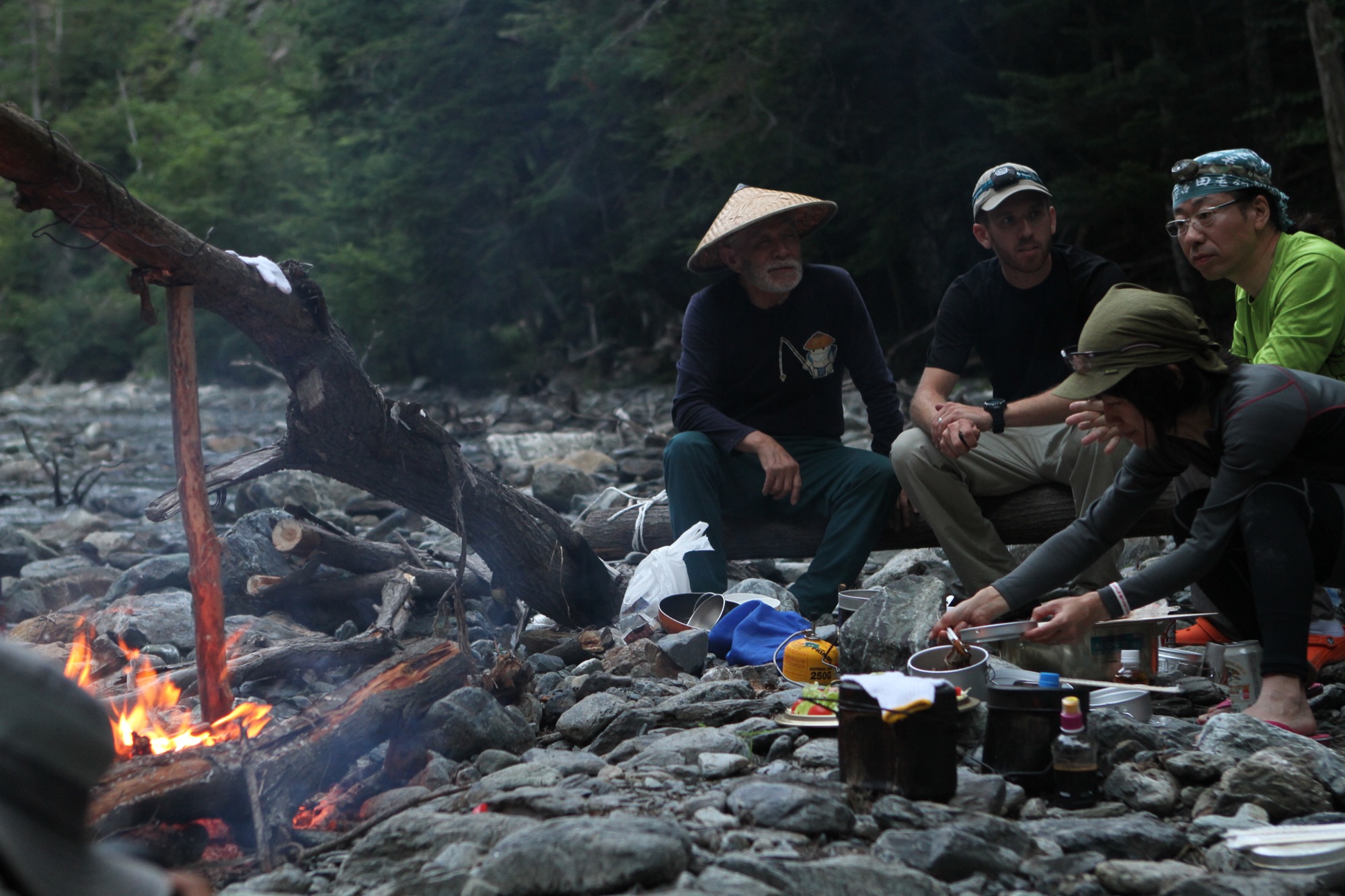
Kotsuzake is primitive and raw. Preparing and drinking it is an act of homage to the principle of not wasting the resources nature provides. After separating the bones from the meat, we placed them over the coals of the re to lightly roast and bring out oils and flavor, then immersed them into the warm sake. The result is sake with subtle and tantalizing fish flavors—all part of the Japanese mountain culture, and now a personal practice if I must eat a trout that I catch.
The cliff-hanger
Back on the treacherous, wet rock face, a small overhanging cluster of bamboo far to the left started to seem more reasonable the longer I clung immobilized by the waterfall. I normally would never trust plants to hold my weight over a fall that could potentially kill me, but at this point, adrenaline dictated my actions. I grabbed a bamboo stalk and slowly shifted the weight off my feet. I placed my trust in a root system that was out of sight under a thin veneer of soil. Through the patch of bamboo and other vines, I finally topped the cliff, beaming in relief. Under heavy rain, I wrapped an anchor rope around an ancient tree lying across the stream. When Futamura-san reached the top, he looked down at the pool below with a nervous smile and said, “Good job; difficult climb.” △
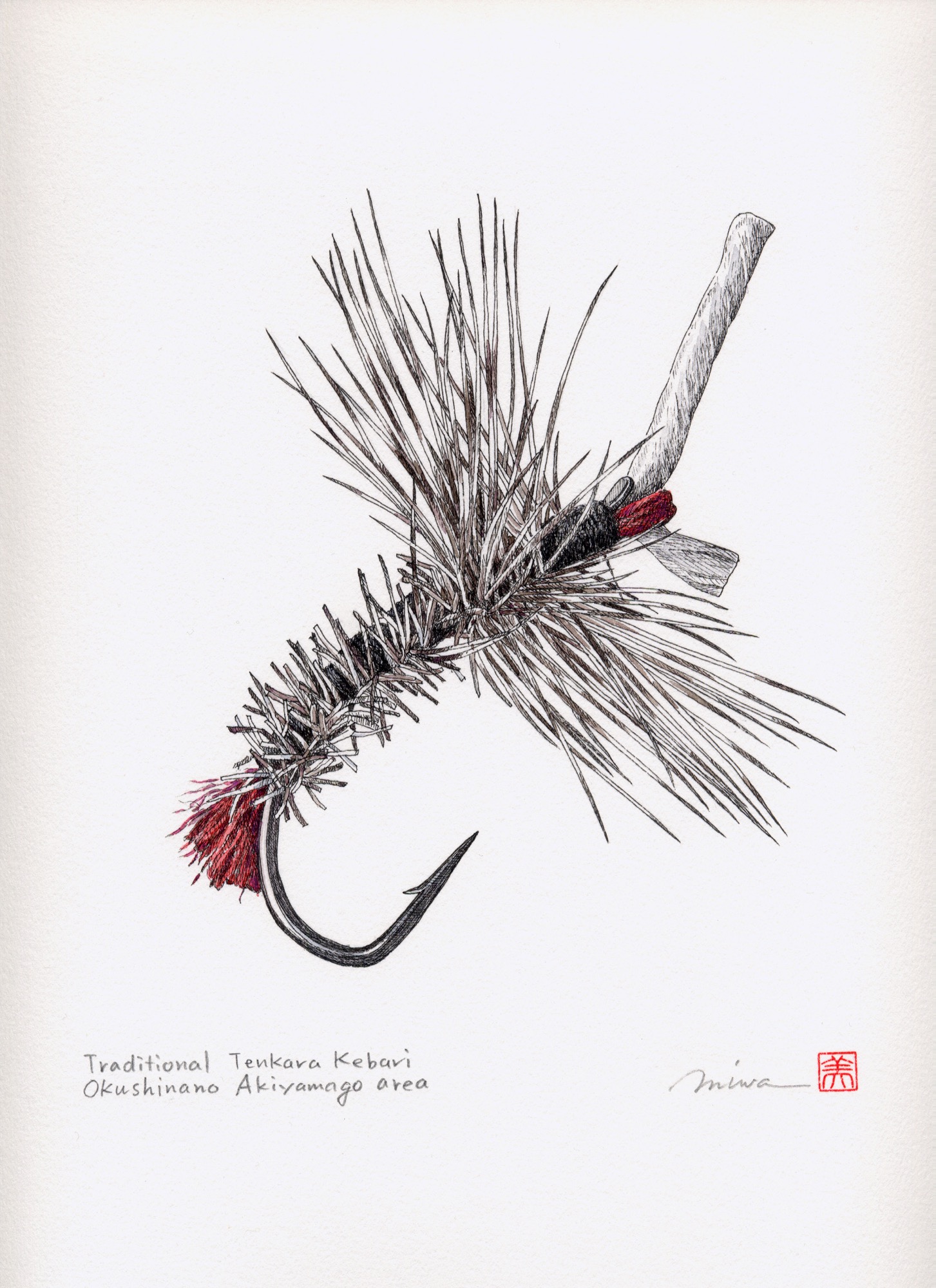

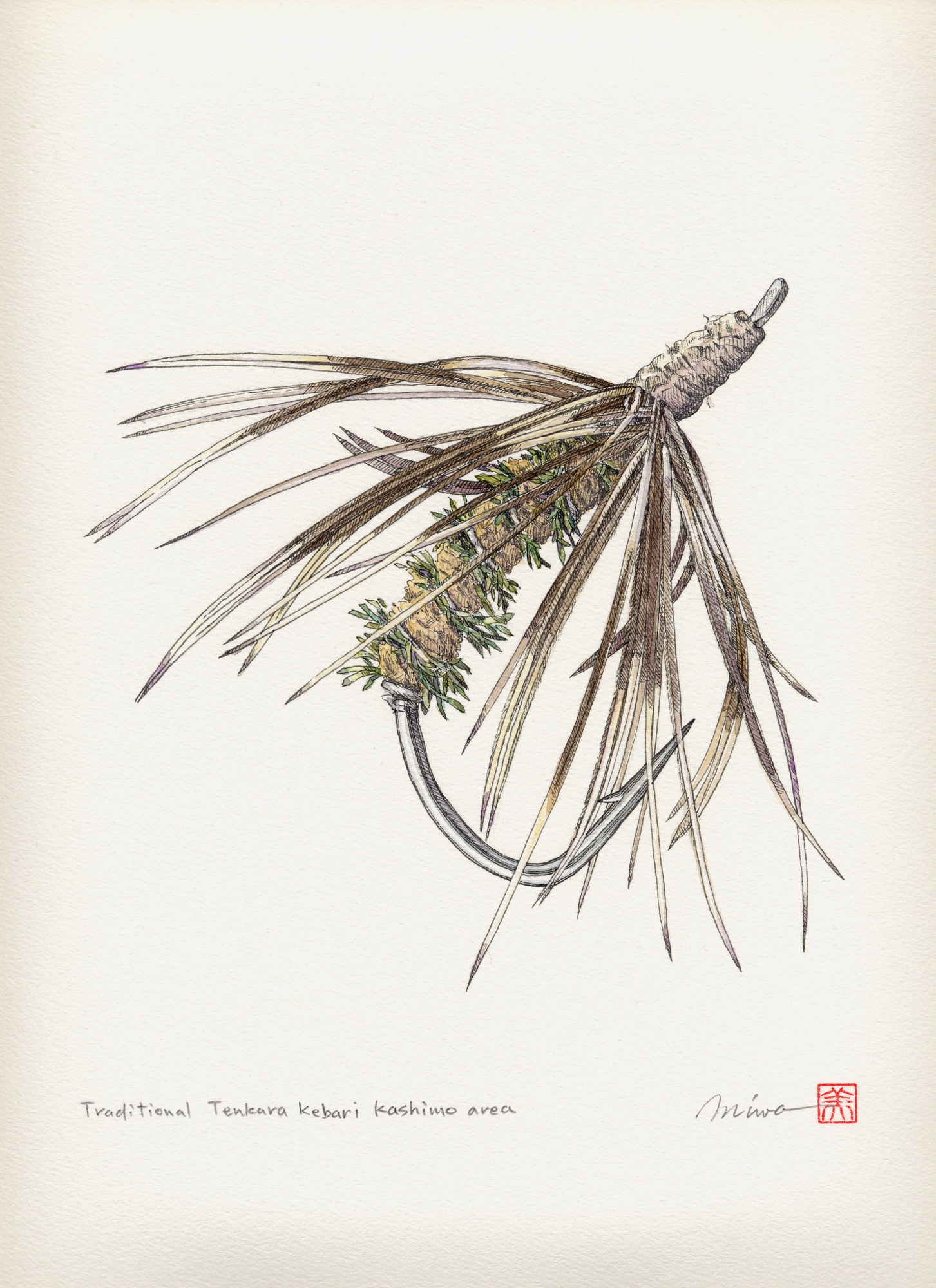
Hideaway Cabin
Åkrafjorden Hunting Lodge by Snøhetta in Norway
Seemingly growing from the mountain, the impossibly small Åkrafjorden Hunting Lodge by Snøhetta shelters up to 21 people. The Norwegian firm Snøhetta creates architecture, landscapes, interiors and brand design. And in this case, incredibly small architecture with a big task.
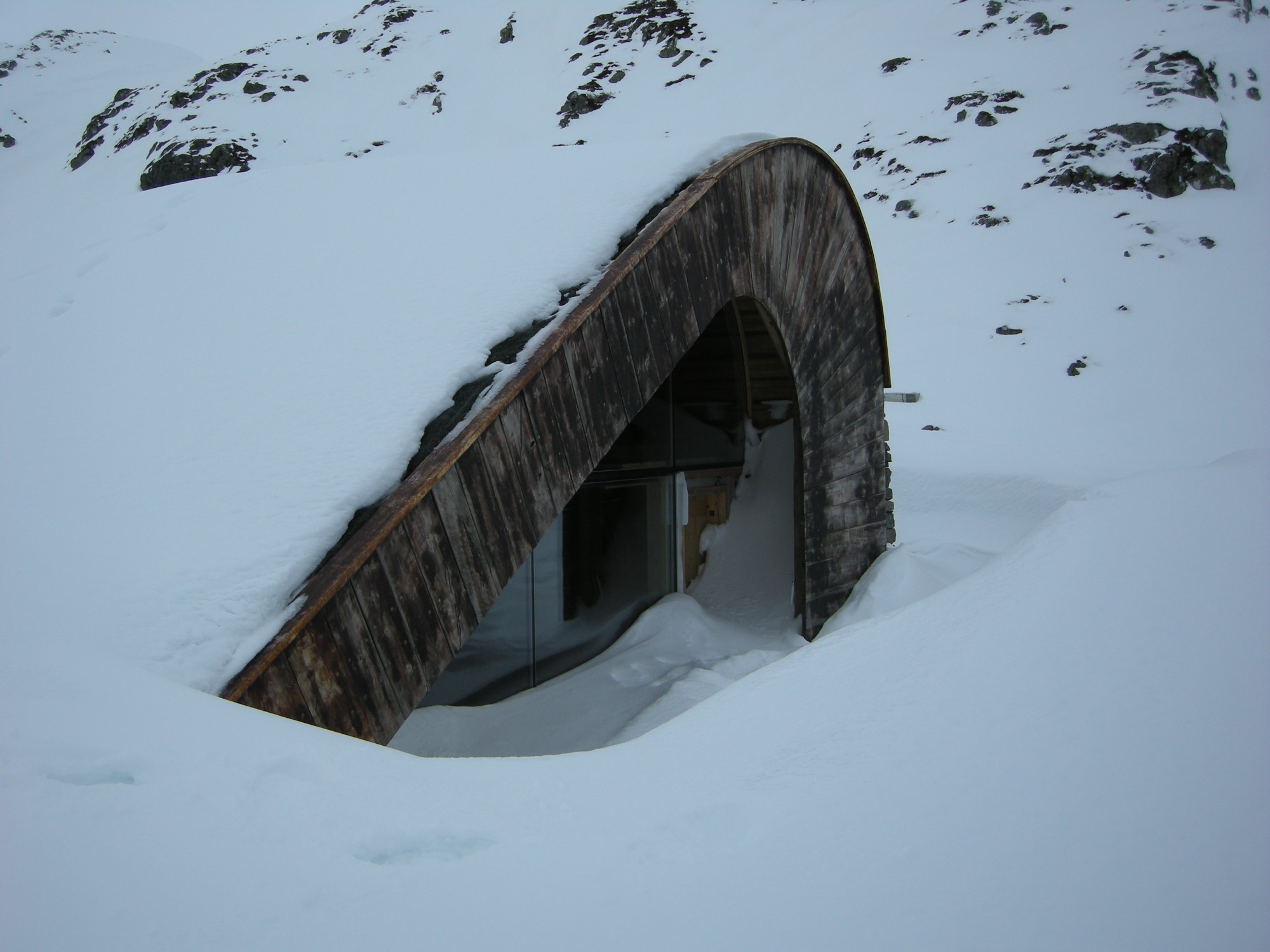
Family shelter
The project was commissioned on family farmland by Osvald Bjelland, who is chairman and CEO of the global business advisory Xyntéo and founder of The Performance Theatre, a leadership think tank.
The challenge in designing the Åkrafjorden hunting lodge on a fjord, high in the mountains above the village of Etne in Hordaland, Norway, was indeed its small size in the face of its intended use: The mountain hut was to be maximum 35 square meters (ca. 377 square feet), with the capacity to shelter up to 21 people (the same number of beds as at the family's farmhouse down in the village). Plus, the off-grid structure with no running water needed to look like it had always been there.
Only accessible by foot or on horseback, the remote lodge’s setting is beautiful, isolated, beside a lake in the untouched Nordic wilderness of West Norway.
One important part of the design concept was to integrate the hut into the landscape. Thus, the small hut’s shape, orientation and materials are influenced by the terrain’s characteristic composition of grass, heather and glacial rocks. In winter, the cabin becomes another brown fleck — like the rocks — in mounds of snow.
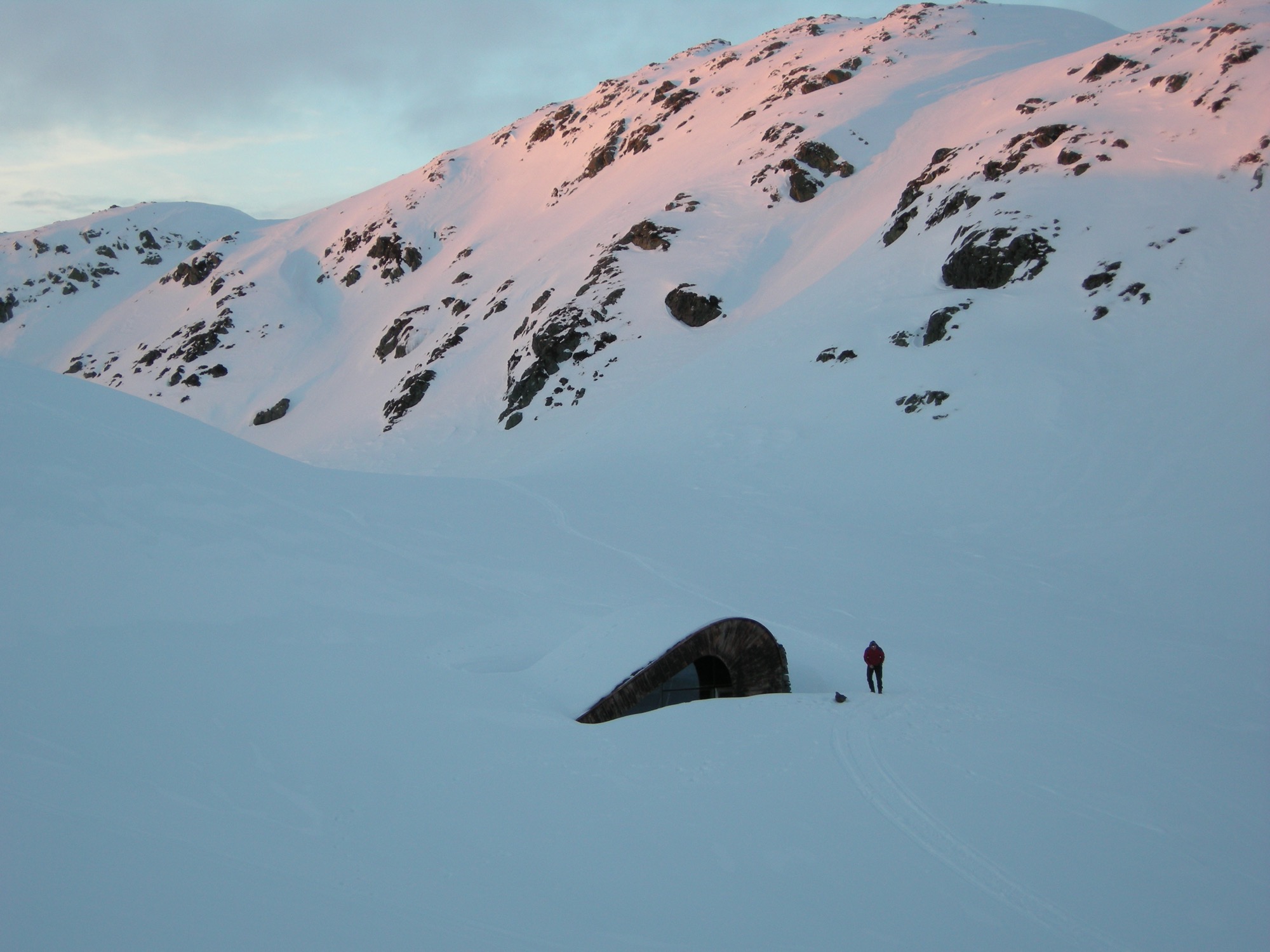
Modern expression of ancient traditions
The structure consists of two curved steel beams, covered with a continuous layer of hand-cut logs of timber — a fusion of modern architectural expression and the style of traditional Norwegian mountain cabins. The roof, with its organic form, “grows” out of the landscape and is overgrown with grass. The materials of the facades are local stone, tar treated wood and glass.
To make room for a surprisingly large number of guests in such a tiny space, the architects found inspiration in ancient lodging traditions: The space in the center serves as gathering place, and the beds along the walls provide a spot to sit comfortably around the middle of the room in the evening — one piece of furniture for socializing, eating and sleeping. A narrow nook by the entrance accommodates cooking equipment and storage. △
Nature Lovers
A photographer takes couples into the wild and shoots "Adventure Love Stories"
Marrying his love for the outdoors with his gift for putting people at ease, Seattle-based wedding and adventure photographer Greg Balkin shoots couples in the wild. The self-proclaimed professional third-wheeler takes his subjects backcountry camping and wakes them at sunrise to capture “Adventure Love Stories,” set in alpenglow.
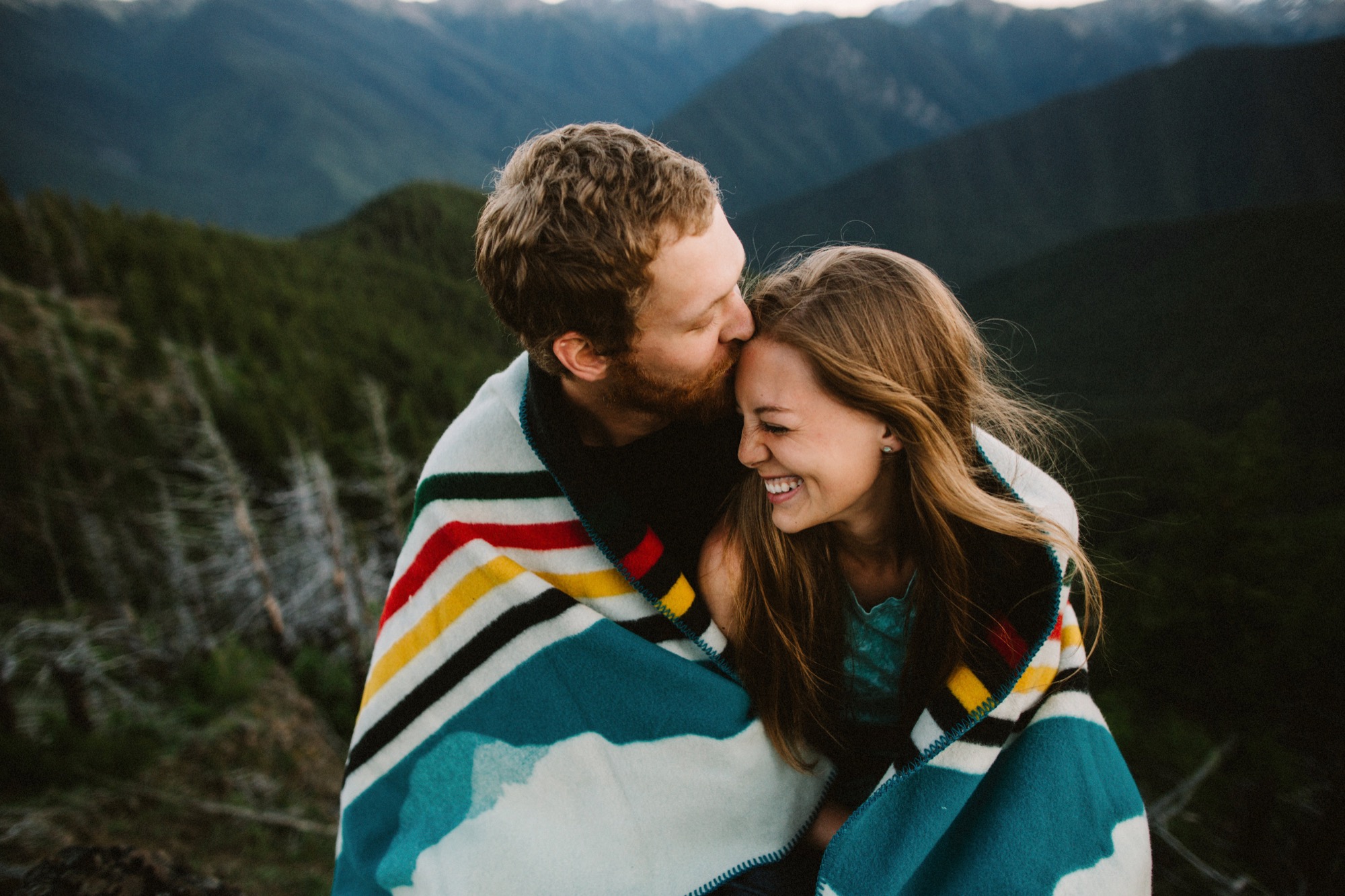
What does a dollar still buy you today? Ask Greg Balkin and he might tell you, a future built on your passions. That’s what the soft-spoken outdoorsman bought himself when he purchased Brightwood Photography from a friend for this symbolic amount.
The happiest day — forever captured
Prior to launching his photography business, Balkin worked full time in the film industry for six months before realizing his career got off in the wrong direction. Fascinated by the fabric of relationships, he started shooting weddings in 2013, many of them outdoors. “The outdoors has been a huge part of my inspiration,” says the keen backpacker. “It’s where I find peace and love.” Nevertheless, the young man is anything but a lone wolf. His pursuit of happiness in the wilderness is fueled by a desire to mesh with fellow nature lovers. “It’s about connecting with people when they’re happy,” Balkin says. “That’s why I love shooting weddings. It’s their happiest day, and that’s awesome to experience.”
Yet he soon began to ponder how to combine his love of nature and comradeship with his passion for photography—all while making a living. “The whole idea just pieced together and made sense,” he says, looking back at how he created the photographic genre he now calls “Adventure Love Stories.” After shooting dozens of weddings over the past three years, Balkin knows the big day’s pressures and expectations can obscure a couple’s natural mien and candid moments. “Sometimes, I can get them to chill out and focus on each other,” he says. “Most times, they’re trying the best they can to hold on to the day.” So Balkin thought of a better way to help the couples be at ease with each other—and their photographer—and remember why they came together in the first place: He takes them into the wild. “When they’re outside, they get to goof off, and it pulls the stress away from them. It gives them a chance to not worry about what’s back home.”
I got you, babe
The shoots, Balkin says, sometimes feel like a relationship-building boot camp, testing a couple’s trust as he asks them to climb on top of a boulder or stand on the edge of a cliff. “I’ve definitely heard couples say, ‘I got you. I’m not letting go. We’re in this together. I’m standing right next to you, and we’re just going to hold on tight.’ ”
It doesn’t escape Balkin that there is plenty of potential for things to get awkward. “My job is watching people kiss and taking pictures,” he says, laughing. “I’m a professional third-wheeler.” From behind the lens, the photographer gets an intimate glimpse into a romantic relationship. For a short time, he joins two people on their very personal journey. Moreover, he shoots his Adventure Love Stories in remote locations, deep in the national forests or high among mountain peaks. To be there in time for the best light at dusk or alpenglow at sunrise, Balkin and his subjects typically camp together in the backcountry. Still, he knows when to retreat and give the couple space and time to be alone.
“My job is watching people kiss and taking pictures. I’m a professional third-wheeler.”
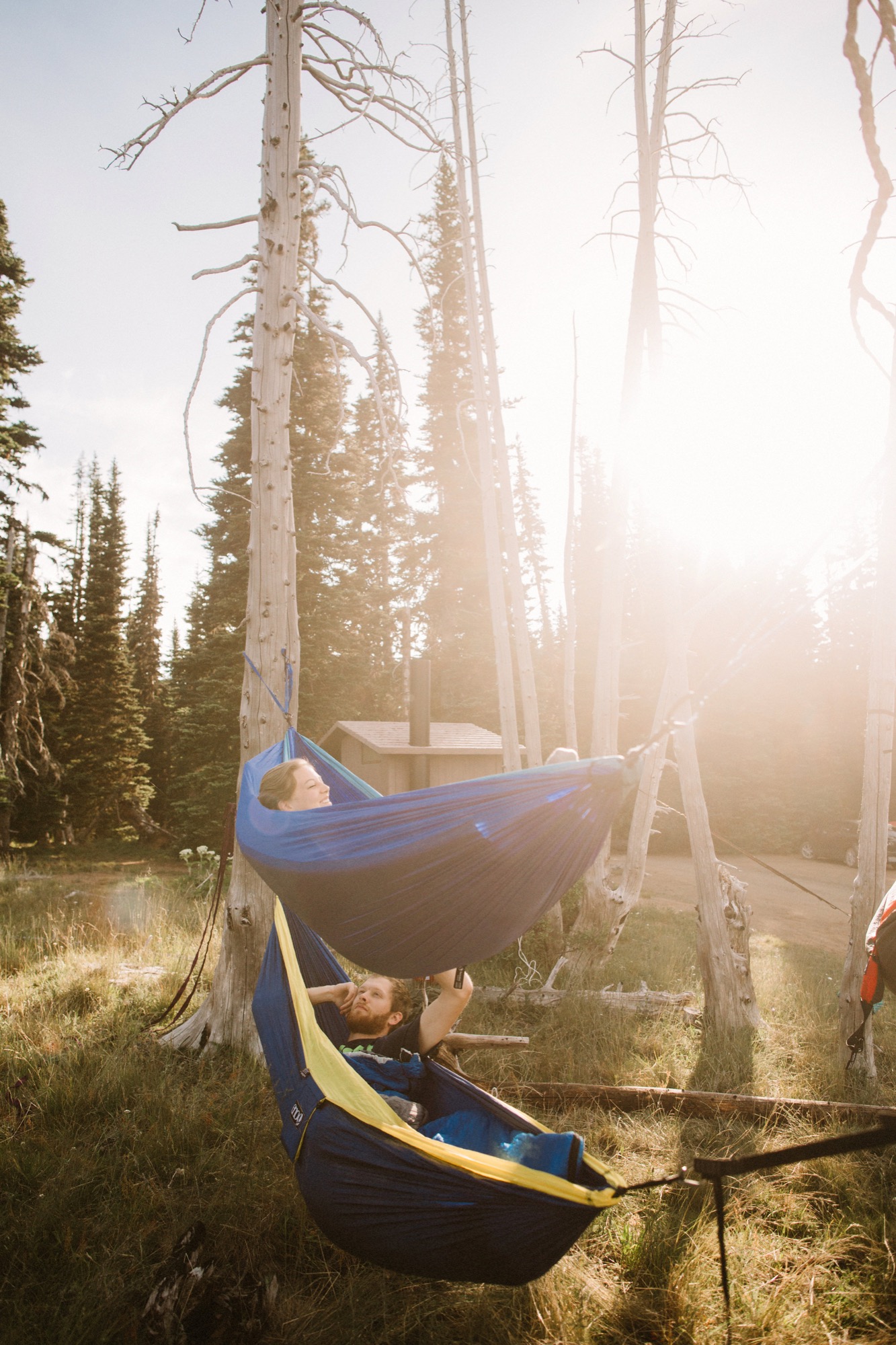
Veronica and Craig
One pictorial Adventure Love Story—set among the trails and peaks of Deer Park in Washington's Olympic National Park—tells of Veronica Vanderbeek and Craig Torgerson’s deep connection. Balkin met Vanderbeek through a mutual friend at the time she was planning her upcoming wedding. Although he wasn’t available to shoot the actual wedding, the bride-to-be was quickly enthusiastic about his idea for an engagement photo shoot in the wilderness.
When the time came to take Vanderbeek and Torgerson camping for the shoot, a flat tire set Balkin back on the eight-mile dirt road. They finally arrived at the peak just as the sun was setting. “We ran out to the big rock with the blanket and just had fun with it for twenty minutes while we still had light,” Balkin remembers. “Greg spent the whole weekend with us,” says Vanderbeek. “He set up our campsite, and he cooked us a gourmet dinner and breakfast. He was a friend hanging out with us, rather than a professional we hired.” The group sat around the campfire at night before Balkin retreated to his car for a few hours of sleep.
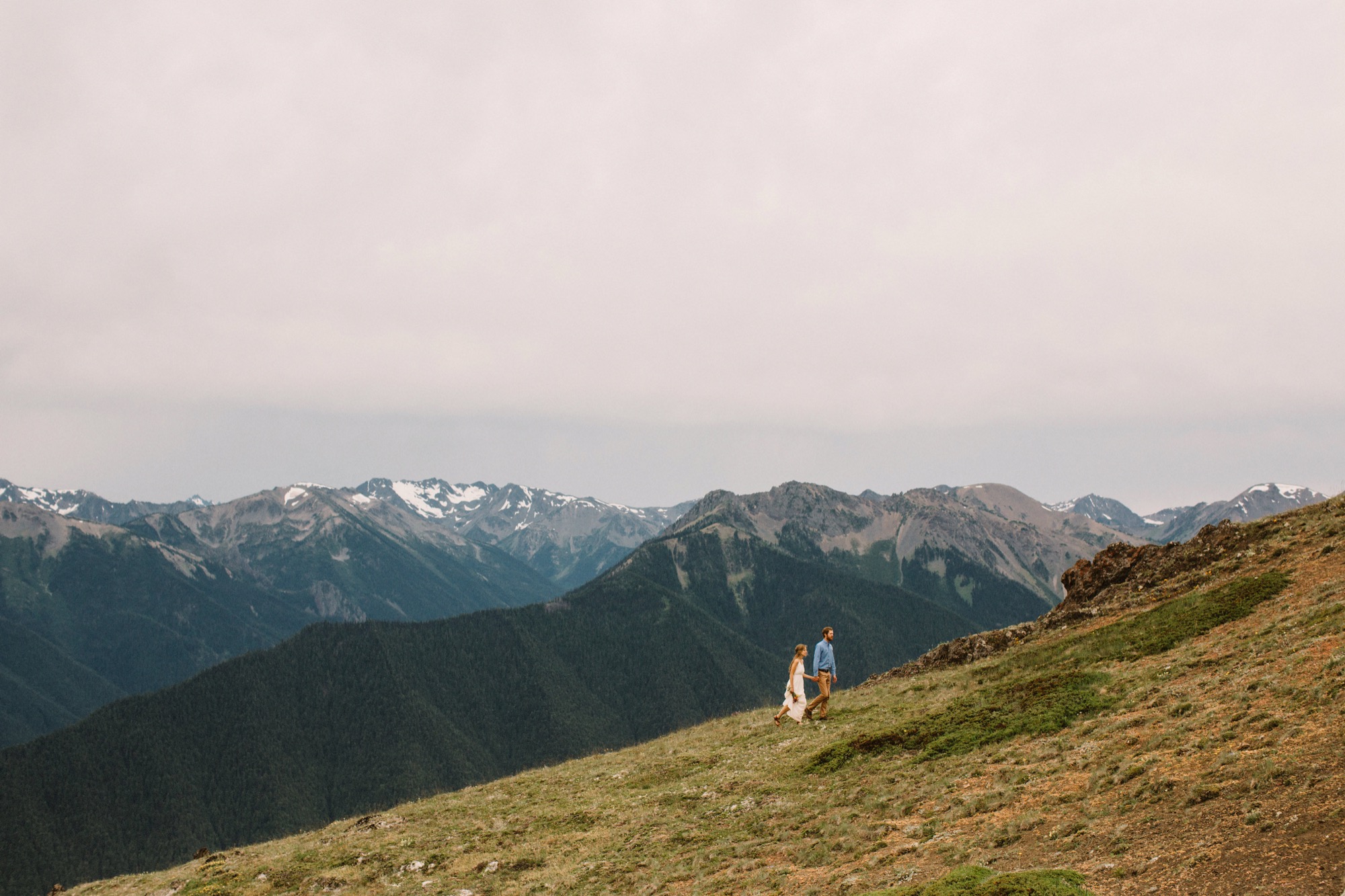
It rained the next morning. But Vanderbeek defied the drizzle with grace, wearing the white, flowy dress she had packed for the photo shoot. “The place was freaking gorgeous,” remembers Balkin. “For the next couple of hours, we just ran around, and I called out to them, ‘Turn around and look where we are, because it’s super pretty.’ ” With a deeper understanding of his subjects as a couple, the photographer captured something outside of visual representation. “Veronica and Craig are both quiet people, but you can tell they are willing to sacrifice a lot of themselves for the betterment of the other,” Balkin reveals. “Their love is so apparent.”
A love story set in nature
Disarming wilderness, breathtaking landscapes, and the couples’ unconcealed intimacy are protagonists in the Adventure Love Stories, too. Often, Balkin’s clients already know what place they want to explore together, and frequently choose a backdrop that perfectly reflects who they are as a couple. “I love watching people become awestruck by the places we shoot in or watching them play on rocks or run around the ocean,” he says.
The photographer wants to shoot more Adventure Love Stories, holding on to what he cherishes about wedding photography: spending a day with people and capturing their memories—minus the nuptial stress. “I love getting to celebrate them in a place that means a lot to both them and myself,” Balkin says. “I find it important to be outside. How cool is it that I get to connect with people and take their pictures and make memories in beautiful places, such as Big Sur, Joshua Tree, Deer Park? I love it.” His natural empathy and connection with others—a powerful part of humanness rendered in conscious awareness—is a landscape in itself. The camera is only a tool for the photographer’s outward expression of how he understands others.
"I love watching people become awestruck by the places we shoot in or watching them play on rocks or run around the ocean.”
The leads in Balkin’s Adventure Love Stories will forever have a special place to revisit, an adventure to relive. Looking at the framed photos in their Oregon home today, months after they tied the knot, the Torgersons revel in Balkin’s pictorial storytelling, hoping the scenes are indicative of the future they will share: a life filled with exploration—new ideas, new people, new adventures. Their favorite picture is one that shows them looking out over the mountain edge, because it reminds them about the terrain they’ve conquered to get to where they stand, while envisioning the expanse of their future lives together.
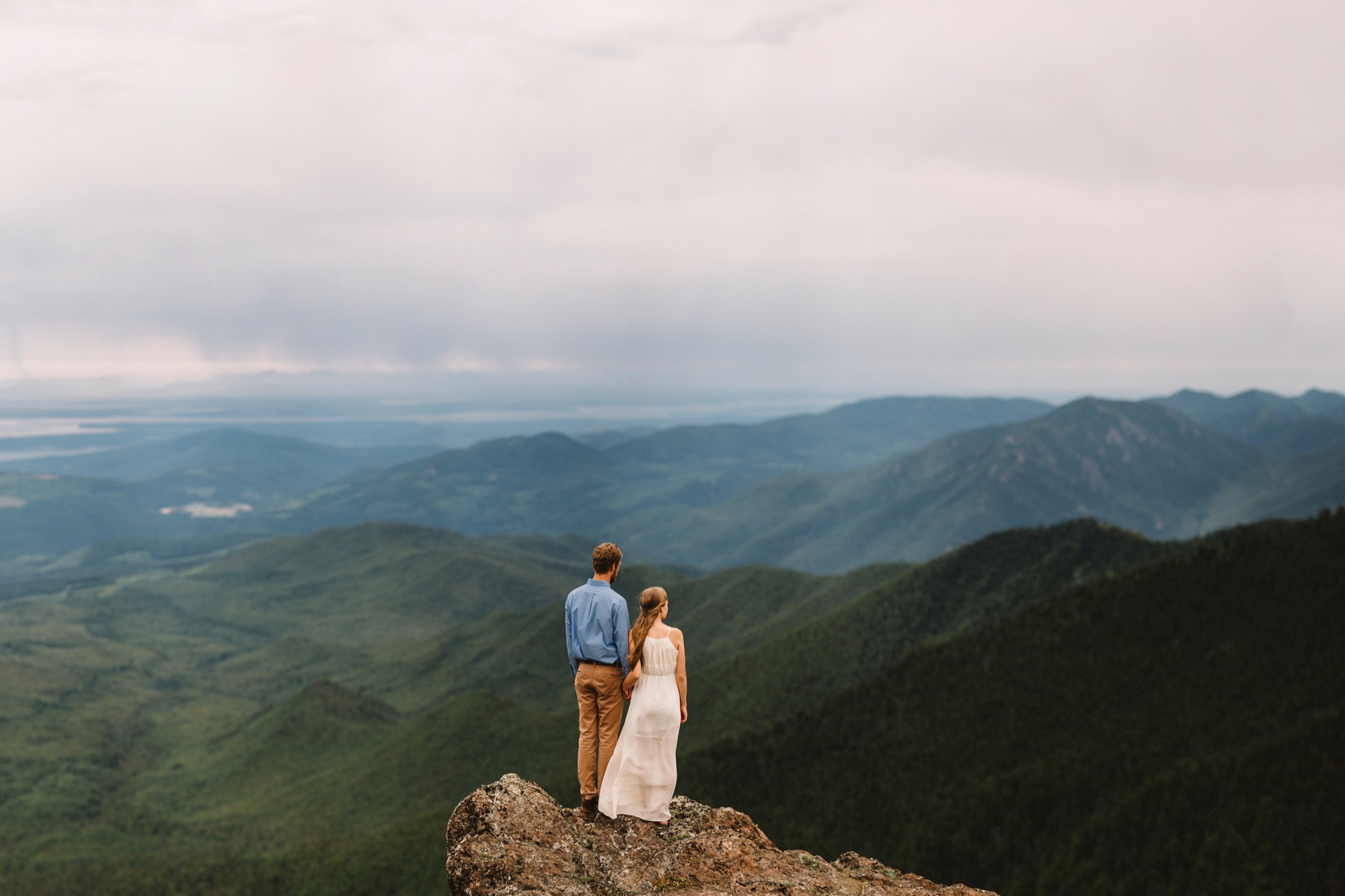
“It’s a picture that shows us supporting each other,” says Torgerson. His wife also cherishes the photos of the two of them looking at each other: “Seeing the beauty in each other and the beauty around us is really special to capture,” she says. Hungry for perpetual change, the newlyweds, who fittingly met on a hiking trip to Colorado, are anchored only in knowing they want to be together. They are each other’s idea of home, security found in a person rather than a place. As she puts it simply, “You have your sense of home going with you when you travel with the one who you love.” △
“You have your sense of home going with you when you travel with the one who you love.”
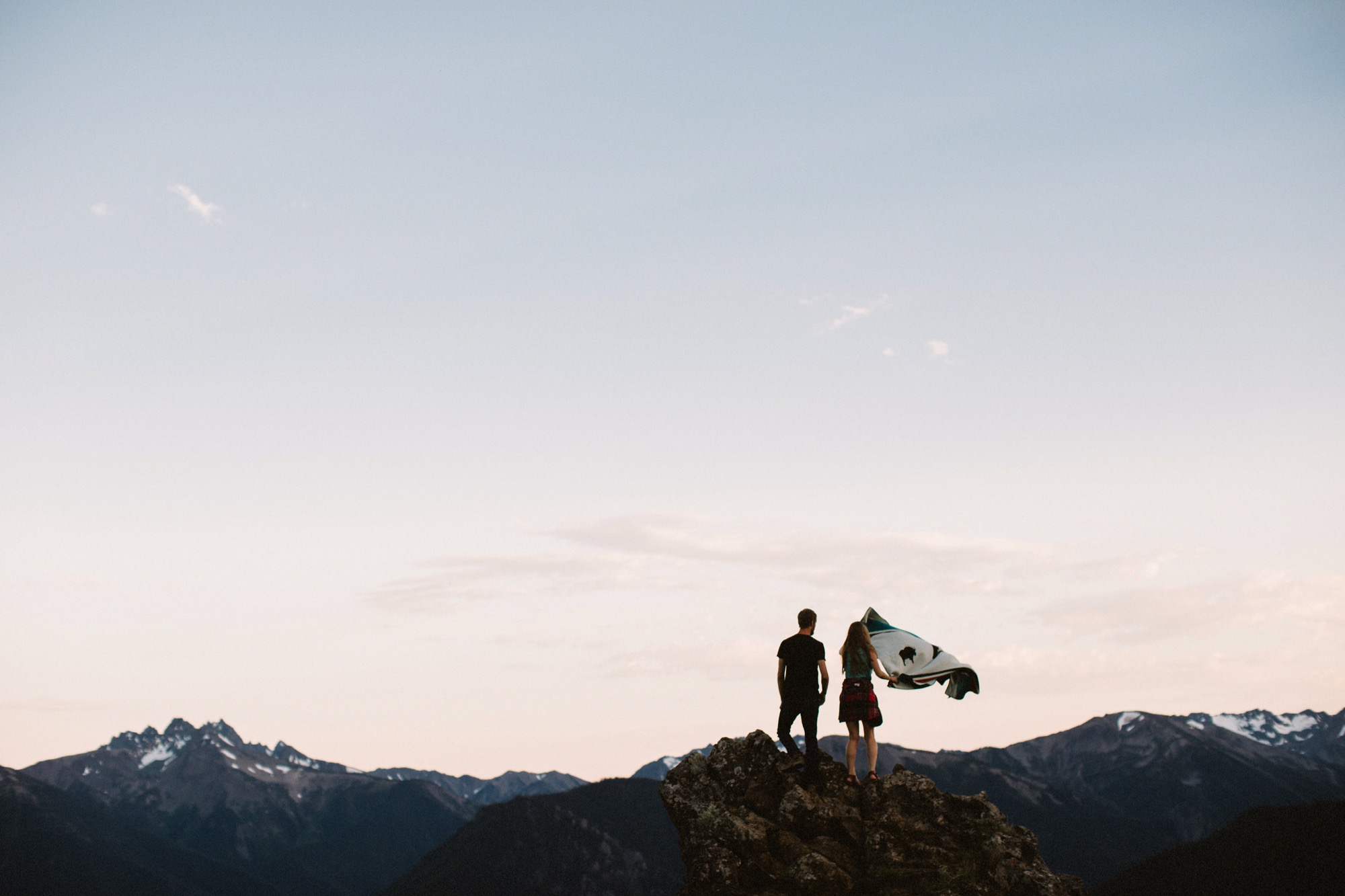
In Praise of Walks and Wilderness
To be human in the mountains is to be fragile
Writer and poet Haley Littleton seeks out fragile moments of being that exist in nature—on trails, summits, and cliffs. Climbing mountains and wandering forests, we feel intoxicatingly happy and at once meek in our undefended bodies provoked toward the verge of physical capacity. The alpenglow illuminates the tips of the adjacent ridge as we crest the saddle of the trail. We have settled into our gait and into silence, elongating our steps to reach a lookout point from the gray, shifting scree field. A moun- tain goat follows our path up the rocky steps, and we pause at the top for a breath, a view, and water. This is a moment when I feel extraordinary happiness. It doesn't matter that in our ascent of Mount Sherman, we missed the peak three times, ascending three different 13,000-foot (ca. 3962-meter) peaks instead, or that our planned three-hour hike turned into six hours. I was content to crouch down and stare at the mauve and olive-colored succulent plants that lined the ascent to the peak and wonder what species they were. I was not concerned when or how we would reach the eventual summit.
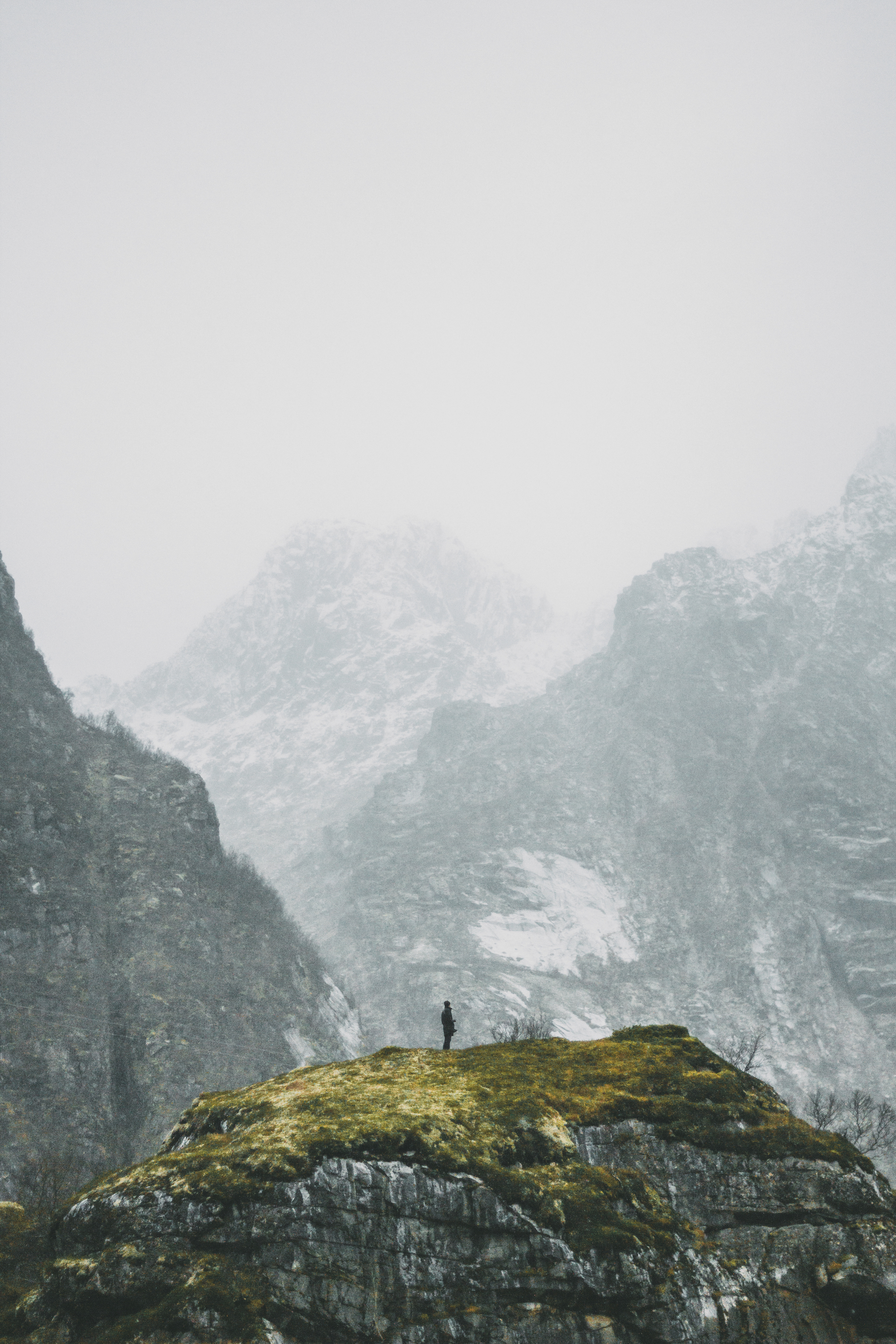
When critic and poet Charles Olson spoke of poetry, he spoke of walking and of breathing. He spoke of measuring the line of the poem to the rhythm of breath. This “projective verse” called the whole body of the poet into measure. This is a form of “frolic architecture,” as Olson calls it, which one might consider artful kinesiology: to trace out lyric and language with body and space and mountain. By being a participant in nature, one is able to listen and then create from this space. We’ve all had those moments when we step out into the fresh mountain air: breathe in, breathe out, recenter.
It’s like Moab this past March: While back home was filled with uncertainties, rifts, and unpleasant memories, to stand upon the plateau and look across at the deep tannish reds, browns, and yellowish greens of Upheaval Dome—cuts made thousands of years ago—even in the sweltering heat and the sweat of the hike, I felt a peace I have not found elsewhere. I stood and thought of Edward Abbey’s words in the preface of his book Desert Solitaire:
Benedicto: May your trails be crooked, winding, lonesome, dangerous, leading to the most amazing view. May your mountains rise into and above the clouds. May your rivers flow without end, meandering through pastoral valleys tinkling with bells, past temples and castles and poets’ towers into a dark primeval forest where tigers belch and monkeys howl, through miasmal and mysterious swamps and down into a desert of red rock, blue mesas, domes and pinnacles and grottos of endless stone, and down again into a deep vast ancient unknown chasm where bars of sunlight blaze on profiled cliffs, where deer walk across the white sand beaches, where storms come and go as lightning clangs upon the high crags, where something strange and more beautiful and more full of wonder than your deepest dreams waits for you beyond that next turning of the canyon walls.
More full of wonder than your deepest dreams, indeed. I kept looking over to my friend, continually proclaiming: “I can’t believe how happy I am here.” I understood Abbey’s fierce ecological devotion to the place. Preservation begins with appreciation; it begins with experiential love. “Earn your turns,” a friend always calls out, strapping his skins to his skis and hoisting his body up the incline. Another pal takes off to the mountains when big life decisions loom in front of him: “It’s the only place quiet and still enough to think.” One hikes fourteeners to prove to himself that his body is capable of more than he believes and that what others say about him is not the whole story. One of my best friends may have hated the peak I dragged her up during our climb, but afterward she turned to me and sighed, “I’ve never felt more alive or more in love with my body.” Once, on a backpacking trip with high school senior girls, one turned excitedly to me and said, “I haven’t thought badly about my body this whole trip!” I think of my skis hanging over the ledge of Blue Sky Basin, my toes hurting like hell, my legs are tingling and frozen, and my flight-or-fight mode tells me that the drop in isn’t worth the potential outcome of pain. But when I look up at the snow-crested ridges against the deepest blue backdrop I’ve ever seen, I push on and fire up my legs, reminding myself that this view is worth the discomfort it takes to reach it.
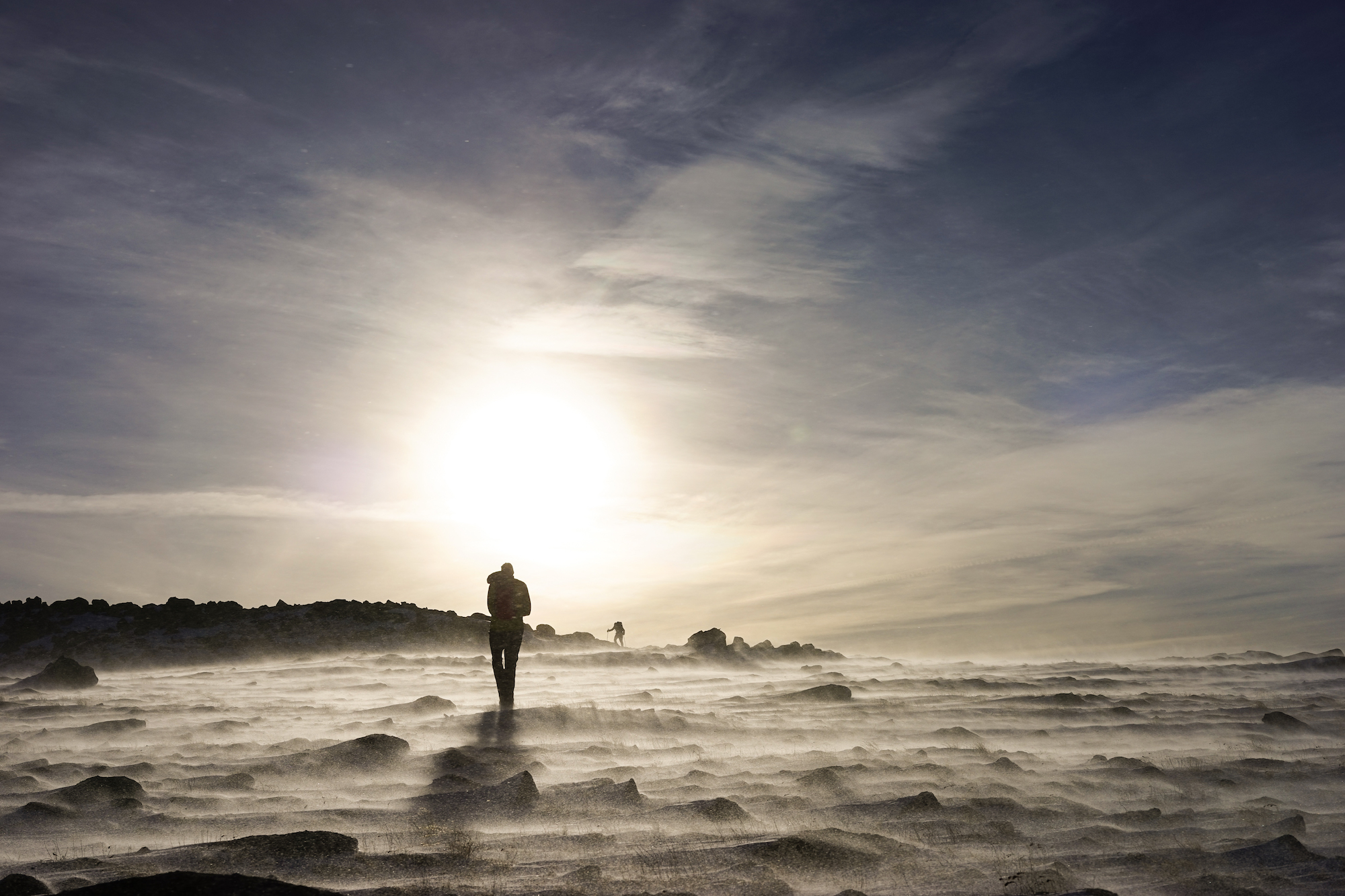
In an age that saw the rise of print reproduction, philosopher Walter Benjamin spoke of original art as containing an “aura” that reflects its presence in time and space: the sentiment contained within and the value connected to an experience with art. It's a sense that mirrors the way we sometimes want to touch a piece of artwork on the walls to simply feel it, as if to be a part of it. This same aura exists in nature: “If, while resting on a summer afternoon, you follow with your eyes a mountain range on the horizon or a branch which casts its shadow over you, you experience the aura of those mountains, of that branch,” says Benjamin. Sculptor Andrew Goldsworthy embodies this idea of “nature aura” in his entirely nature-derived pieces made from branches carefully arranged, leaves woven together, stacks of rocks or ice melted and refashioned, all of which rest entirely upon impermanence. Happen upon his works before they are gone.
If human sense perception changes with historical circumstance, what does the recent technological boom and rise of virtual realities do to our perception of nature? Why does climbing a mountain matter if we can see the same view on Instagram? Why does visiting a location matter if Google Earth offers us the same view from the sofa? It seems this sense of feeling is disappearing as the search for experience is constantly digitized and commercialized. We pry a thing from its shell and market the hell out of it. We want things to be more accessible, to be easy to get to, so we pave roads on the tops of fourteeners and take all risk out of our outdoor adventures. Or, we consistently see pictures on social media of beautiful scenes and stay content to remain inside. But there’s something about the body that matters. There’s something about being there that we miss.
Ecologists speak now of a need for “deep ecology,” not just an understanding of ecological issues and piecemeal scientific responses, but an overhaul of our philosophical understanding of nature. Instead of viewing mankind as the overlord of nature, it’s about revisiting the idea that a give-and-take relationship exists between the human and the nonhuman, a relationship that thrives on mutual respect and appreciation. To develop this sort of appreciation for nature and the nonhuman, it matters that we actually experience it. For many ecological thinkers, walking among mountains can be the first step in healing a false split between body and mind. The grief at the destruction of a beautiful building, the ecstatic joy of a sunrise in the mountains—these moments stem from this unification of the two.
“For many ecological thinkers, walking among mountains can be the first step in healing a false split between body and mind.”
Fragile moments of being that exist in nature
It’s a question of place versus nonplace. In The Conscience of the Eye: The Design and Social Life of Cities, Richard Sennett points to the peculiarity of the American sense of place: “that you are nowhere when you are alone with yourself.” Sennett speaks of cities as nonplaces, in which the person among the crowd slips into oblivion, only existing inside him- or herself. Other nonplaces look like the drudgery of terminals or waiting lines or places where all eyes are glued to phones. The buildings are uniform, and the faces blur together to create a boring conglomerate of civilization. If to be alone in a city is to be nowhere, the antithesis must be that to be alone in nature is to be everywhere. Nature is a place characterized by its “thisness,” as Gerard Manley Hopkins describes it—a place to enter into that is palpable with its own essence and feeling.
But as we lose our connection to place, as virtual reality turns here into nowhere, we lose our ability to narrate our experiences of nature. Recently, nature writer Robert Macfarlane pointed out that in the Oxford Junior Dictionary, the virtual and indoor are replacing the outdoor and natural, making them blasé. When we lose the language to describe our connection to landscape and place, we lose the actual connection to these things and the value decreases, separating us from the natural. According to Macfarlane, we have always been “name-callers, christeners,” always seeking language that registers the dramas of landscape, and the environmental movement must begin with a reawakening of natural wonder–inspired language.
Perhaps the point of all of this is to work to develop more refined attention, an ability to seek out and perceive fragile moments of being that exist in nature. We must pay attention to our breath and our bodies. Wendell Berry, a prophet of the natural, writes that to pay attention is to “stretch toward” a subject in aspiration, to come into its presence. To pay attention to mountains, we must come beneath them and reach out toward them.
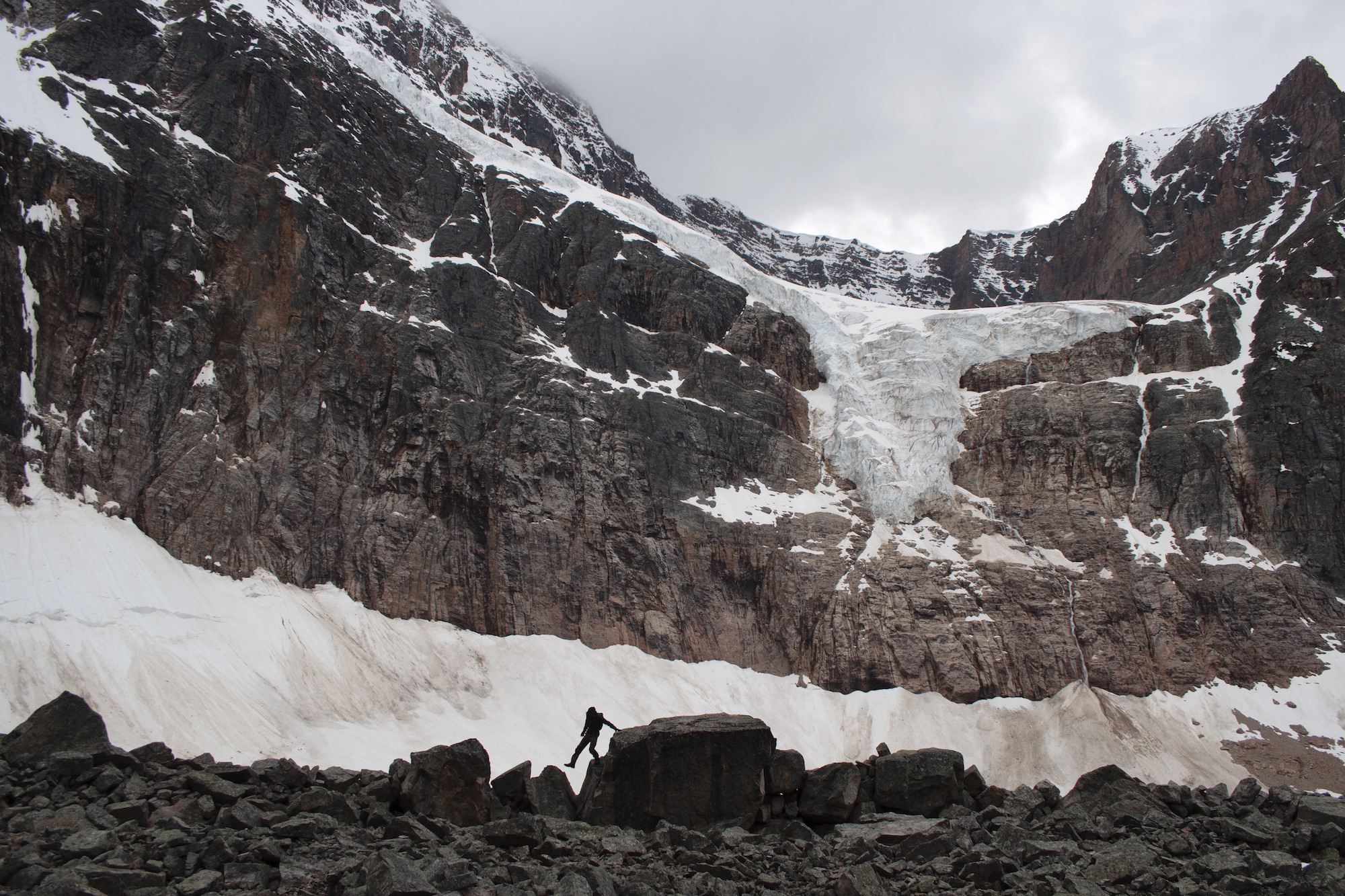
To walk is to perceive
How do we begin? By wandering within the wilderness. Rebecca Solnit’s book on walking comes to mind: “Walking is one way of maintaining a bulwark against this erosion of the mind, the body, the landscape, and the city, and every walker is a guard on patrol to protect the ineffable.” While people today live in disconnected interiors, on foot in wilderness the whole world is connected to the individual. This form of investing in a place gives back; memories become seeded into places, giving them meaning and associations both in the body and the mind. Walking may take much longer, but this slowing down opens one up to new details, new possibilities.
Brian Teare is one of my favorite modern poets because his poetry is centered upon Charles Olson’s projective verse and on walking. All his works contain physical coordinates, anchoring each work of art to the place that inspired it. The land becomes the location, subject, and meaning to the thoughts and feelings that Teare wants to convey. As we enter into a field or crest the ridge of a mountain, we perceive the sight of the landscape and experience our bodies within it. We feel the wind and touch the dirt; we see the edges and diversity of the landscape. Perhaps we have hiked a far distance to reach this place and feel the journey within the body. Teare says in one of my favorite poems, “Atlas Peak”:
we have to hold it instead
in our heads & hands
which would seem impossible
except for how we remember
the trail in our feet, calves,
& thighs, our lungs’ thrust
upward; our eyes, which scan
trailside bracken for flowers;
& our minds, which recall
their names as best they can
Sitting on the side of Mount Massive, on the verge of tears, I felt utterly defeated. Our group took the shorter route, which had resulted in thousands of feet of incline in just a few miles, and my lungs, riddled with occasional asthma, were rejecting the task before them. It felt as if all the rocks in the boulder field had been placed upon my chest. My mind went to the thought of wilderness: Was it freedom or a curse? What would happen to me if something went wrong up here? Risk and freedom hold hands with each other in the mountains. After a long break, a few puffs of albuterol, water, and grit, I pulled myself up the final ascent and false summits along the ridge. I have been most thankful for my body when I have realized how beautifully fragile and simultaneously capable it is. On the summit, as we watched thin wispy waves of clouds weave into each other and rise around us, the mountain gently reminded me that I am not in control. I am not all-powerful, and nature’s lesson to me that morning was to respect its wildness.
"Risk and freedom hold hands with each other in the mountains."
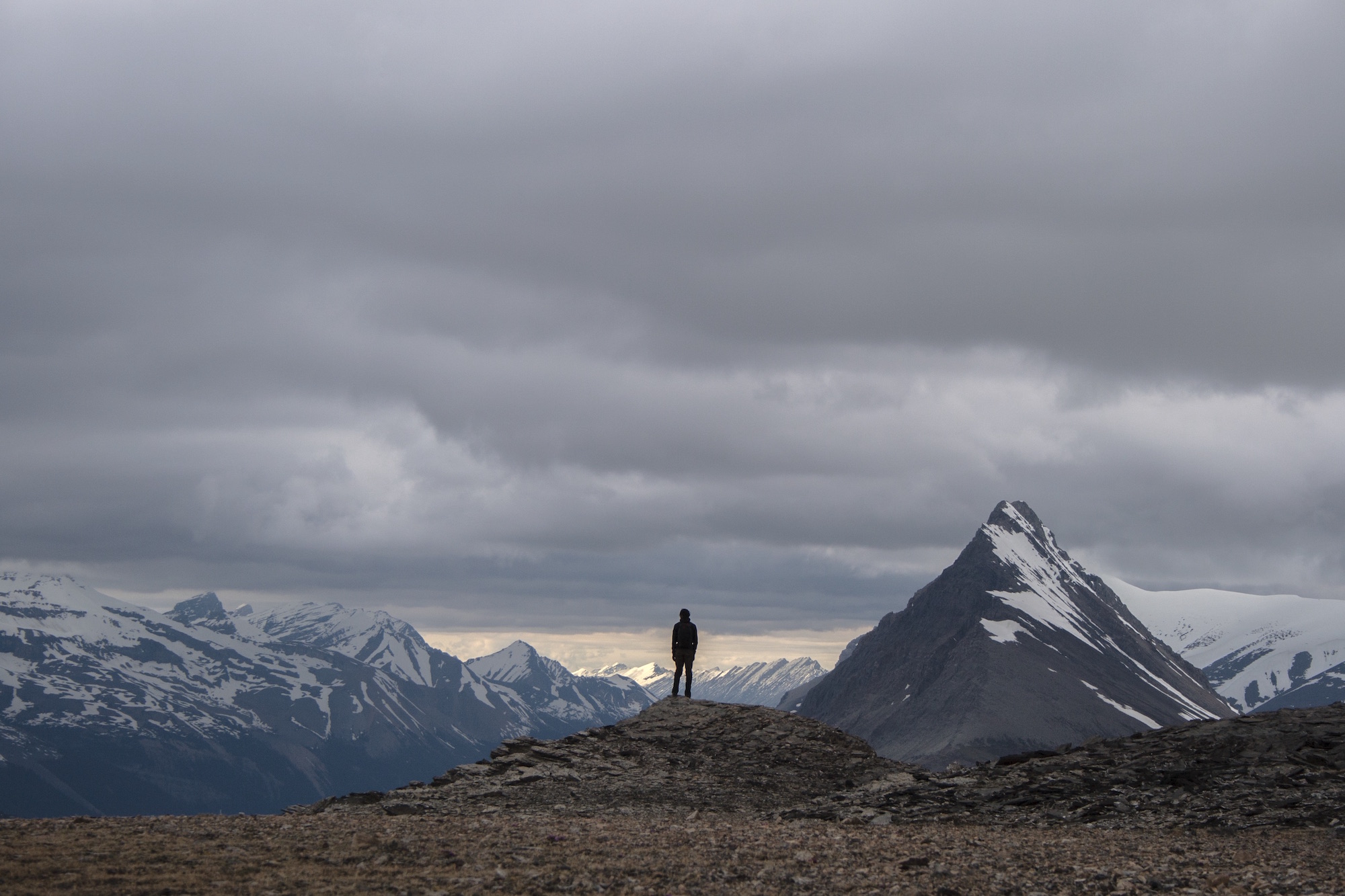
As in all things, essentialism should be avoided. We live in a world that tends toward black-and-white perspectives, and when one praises the wilderness, those remarks can devolve into Luddite sentiments that are antipeople, antitechnological, and antihistorical. This solves nothing. Advancements in civilization are welcome and beautiful; technology has connected us in unprecedented ways. But as with anything, balance is key. We need the possibility of escape from civilization, even if we never indulge it. We need it to exist as an antithesis to the stresses of modern society. We need wilderness to serve as a place to realize that we exist in a tenuous balance with the world around us. All the political and societal struggles matter little if we have no environment to live in. In a world of utilitarian decision-making, a walk in the woods may be considered frivolous and useless, but it is necessary. The choice to preserve or to dominate is ours. But before deciding, perhaps one should first wander among the mountains. △
This essay is accompanied by the poem "Post Tenebras Lux" by Haley Littleton.

